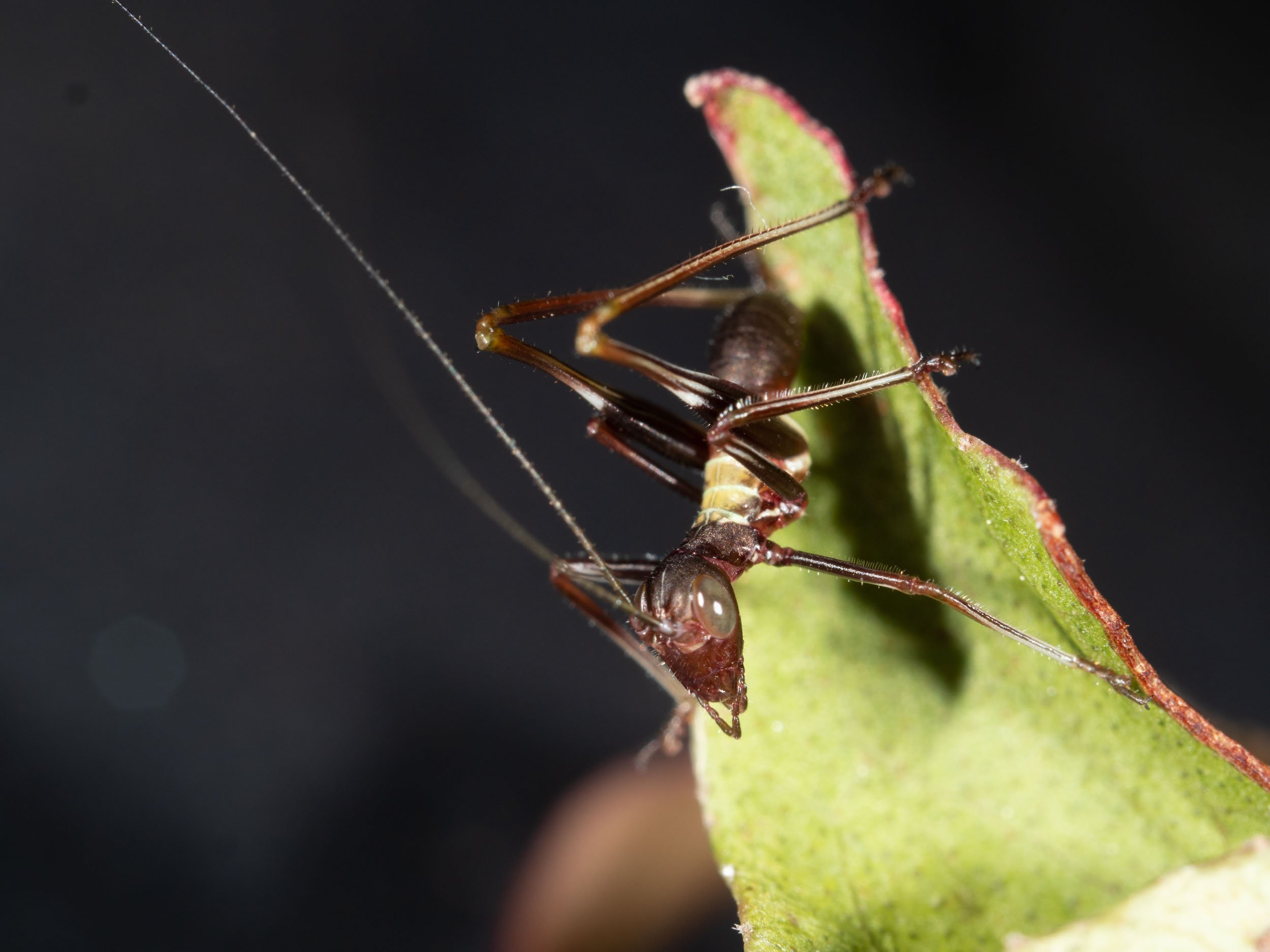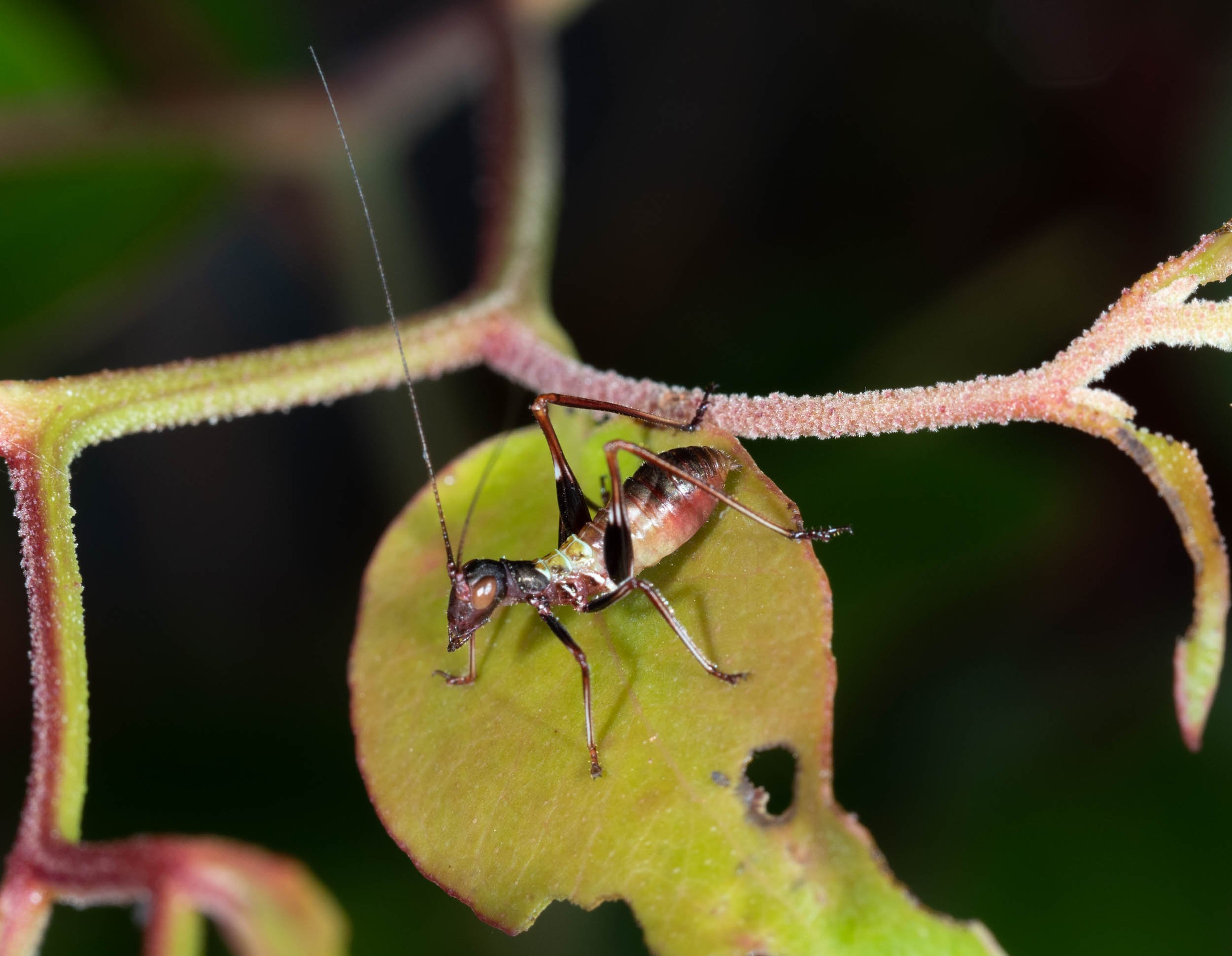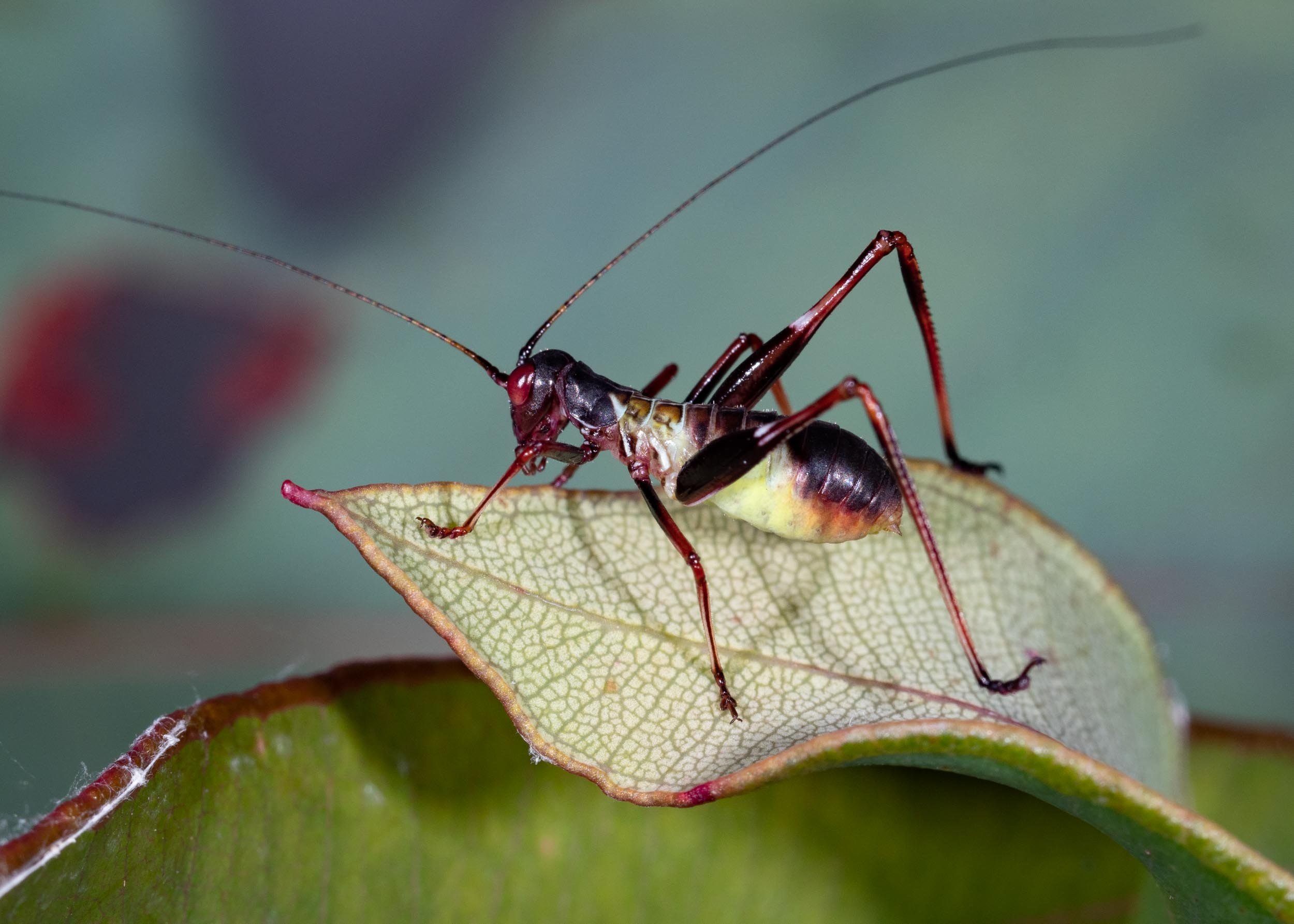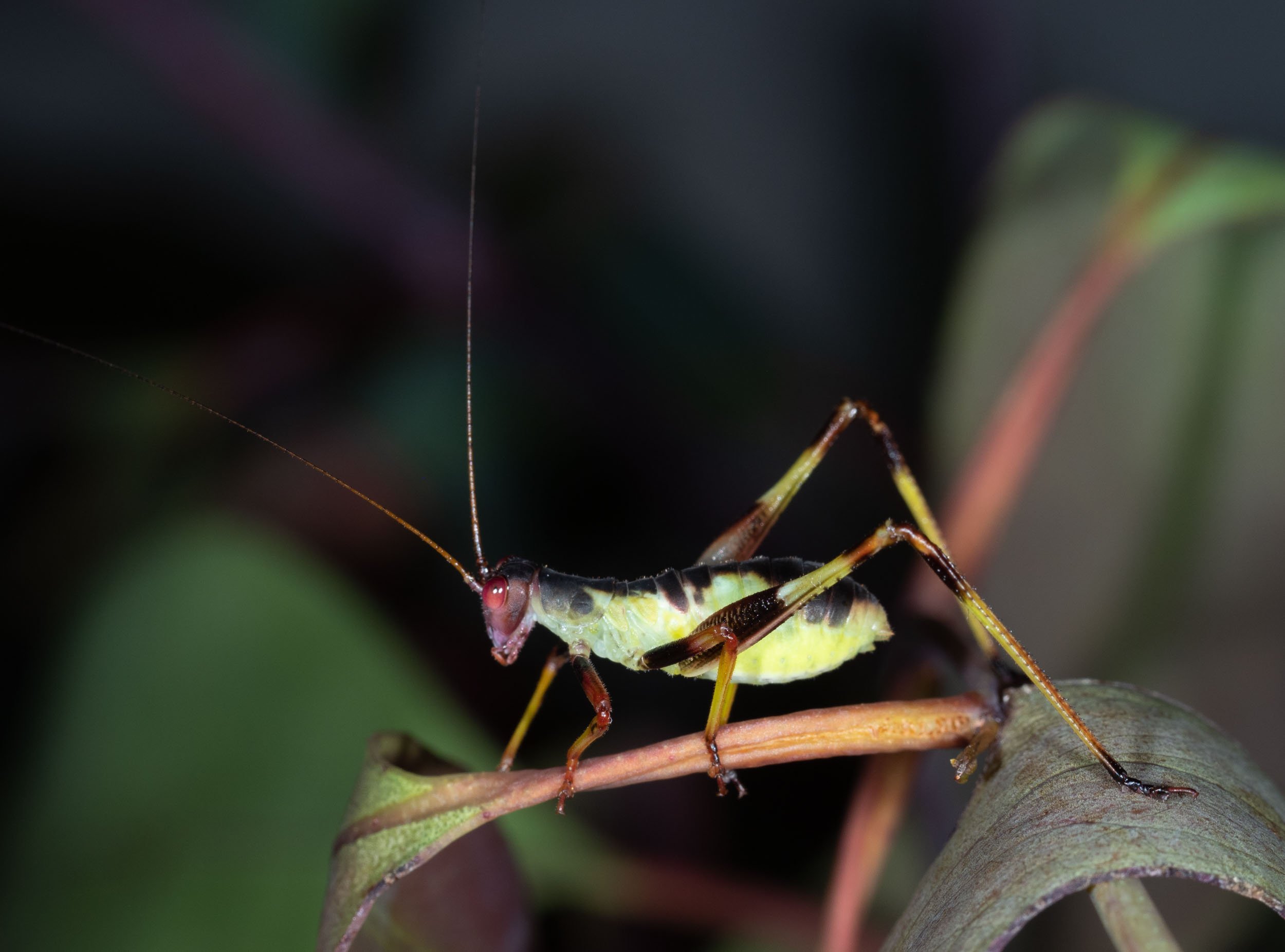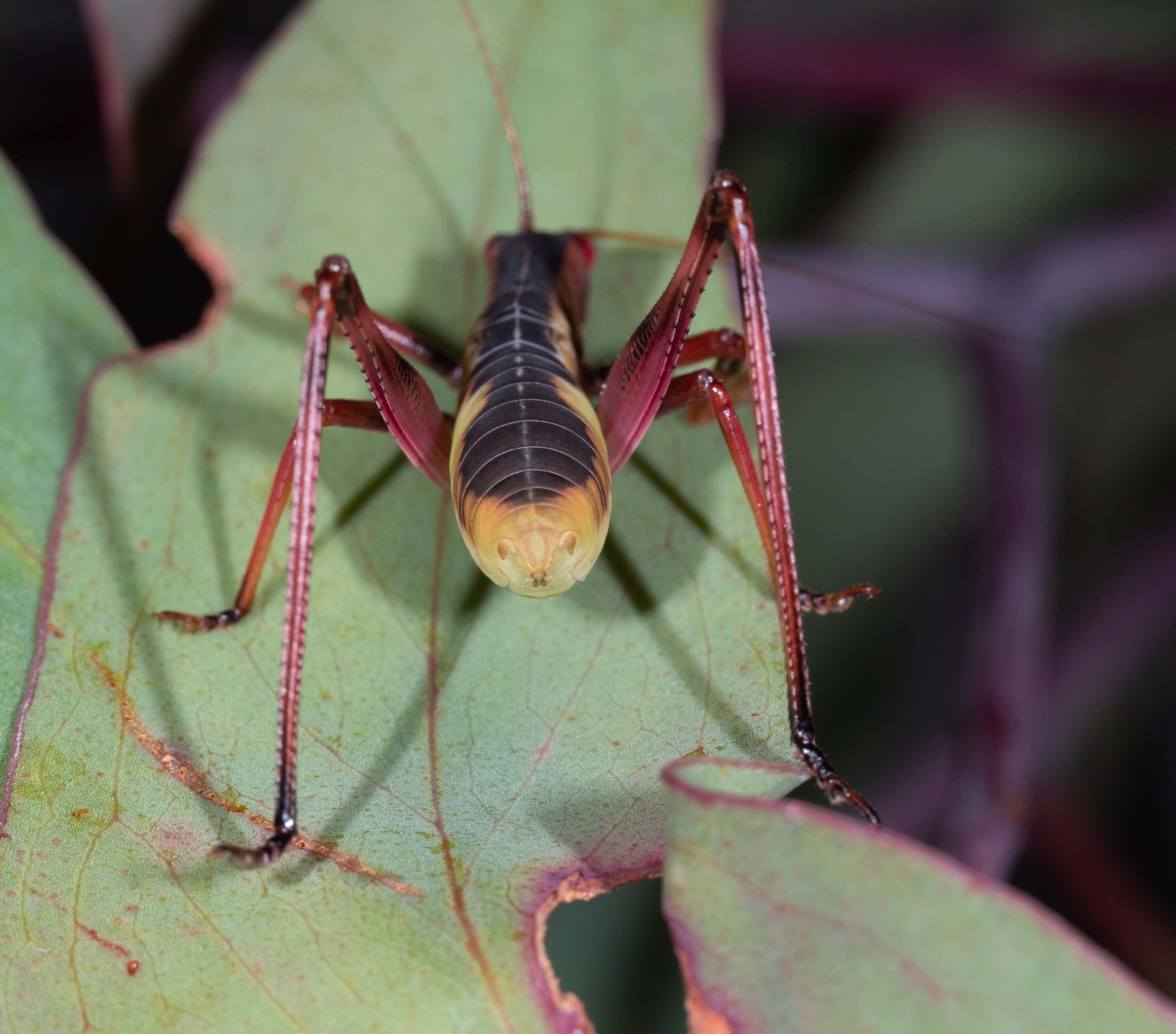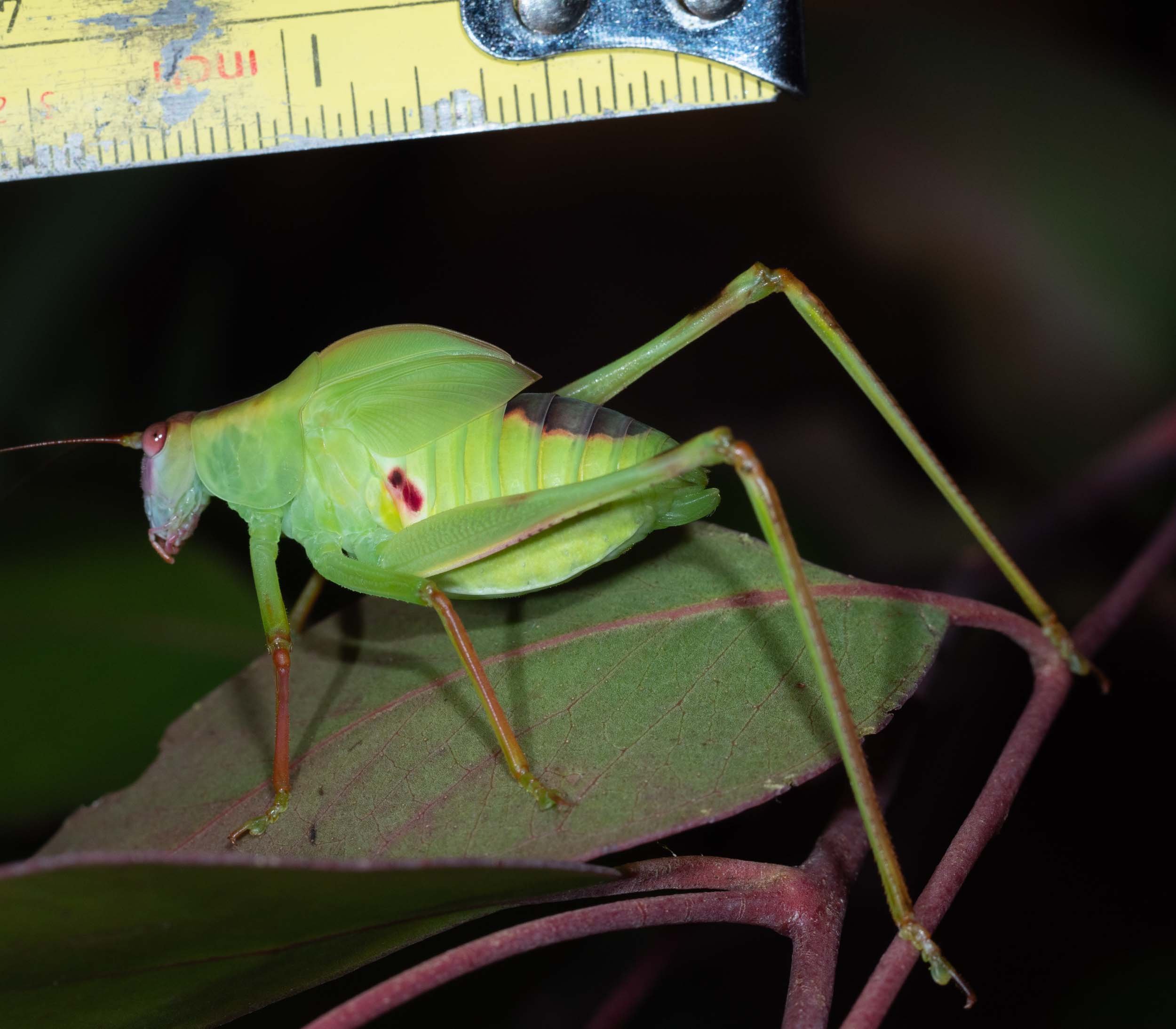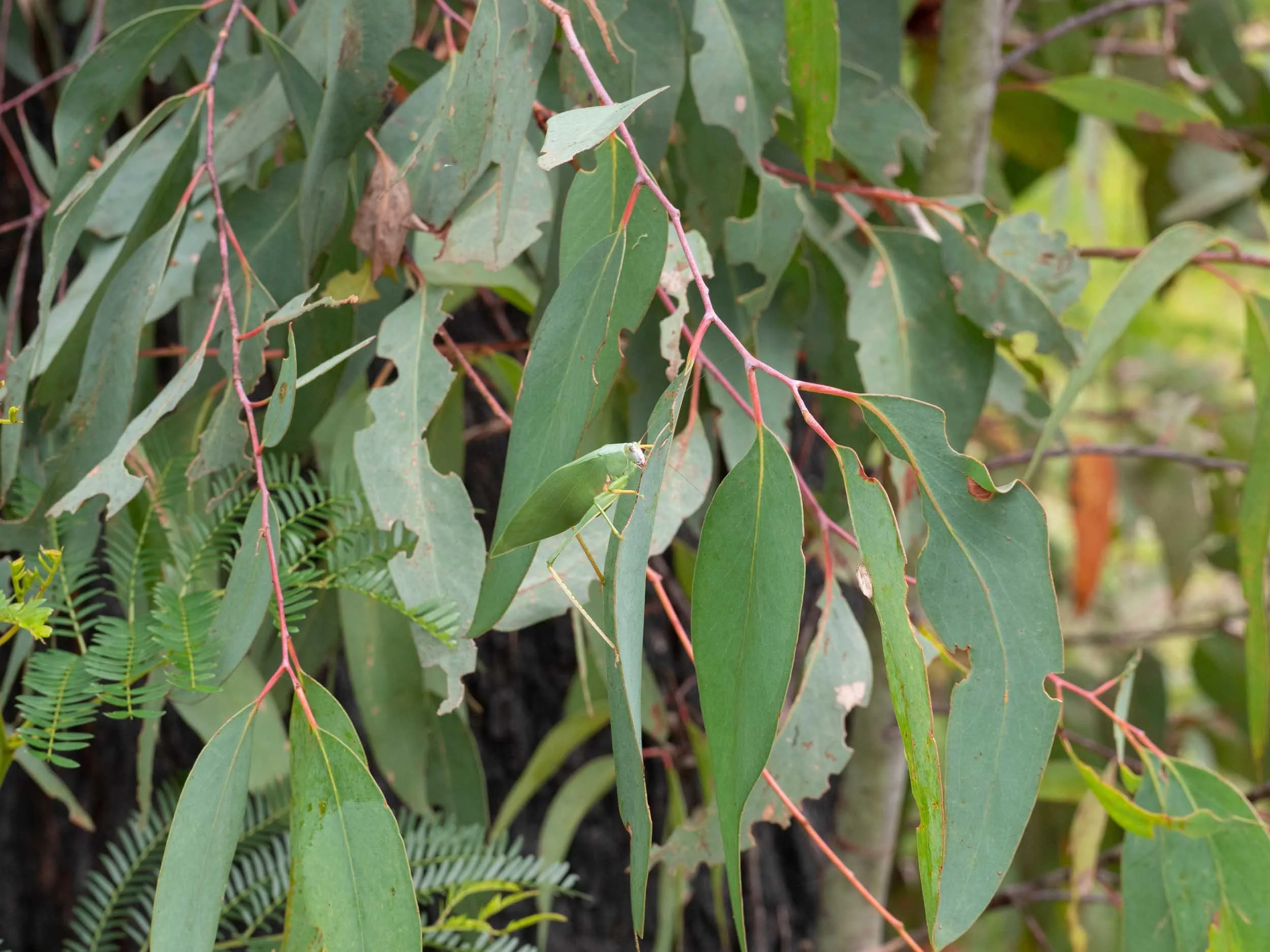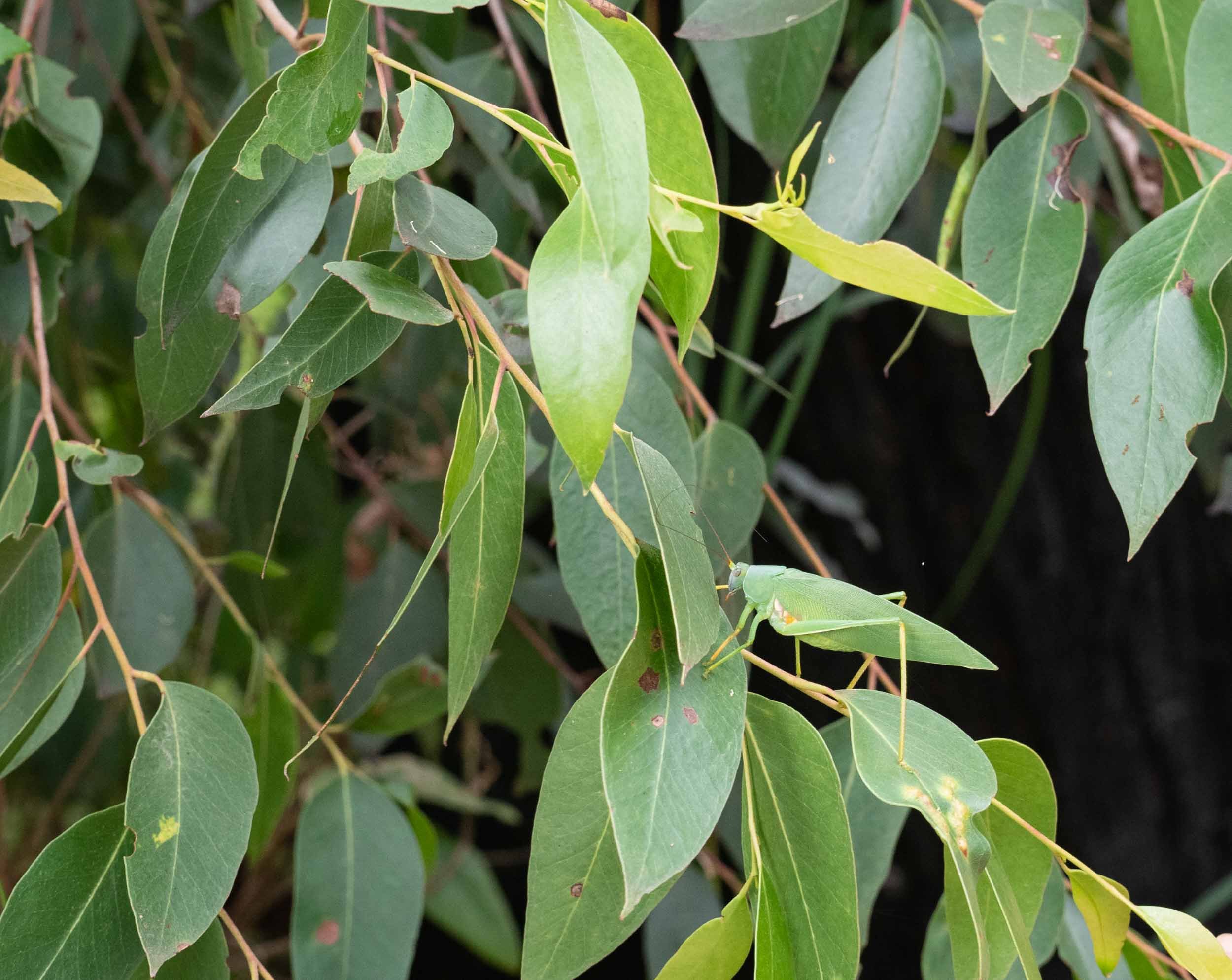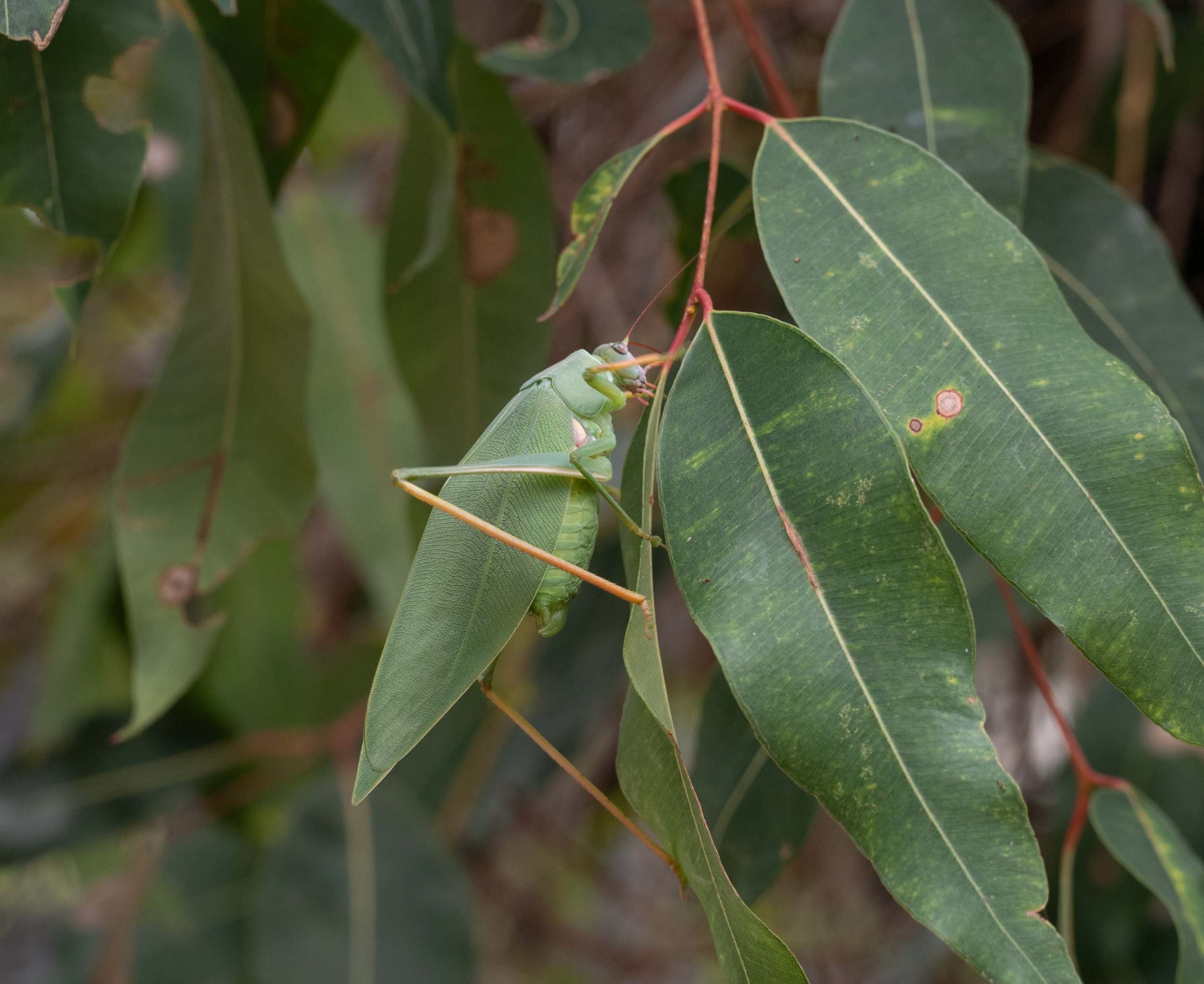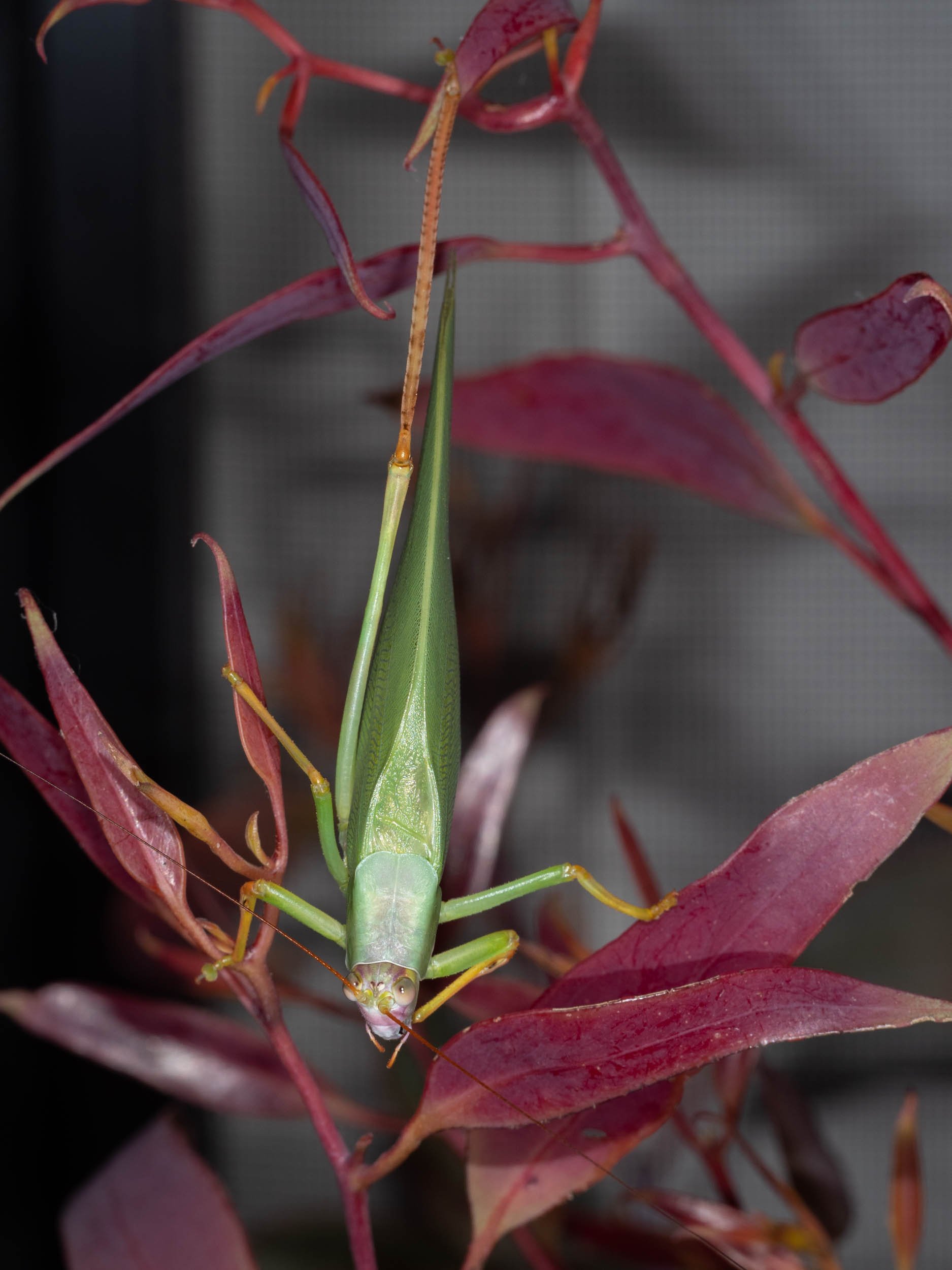
Workbook
These observations were incorporated into our blog post Growing Up.
Discovery of clutch of eggs
16th September 2021 - two clusters of eggs found on branches near top of 1m high eucalyptus sapling. One cluster of 11 eggs, one of 29 eggs.
Hatching
20th October - 6 newly hatched nymphs seen clambering over the clutch late in the morning (around 11:00am).
21st-22nd October - 19 more nymphs hatched in early morning (starting before 4:00am). See videos in this post. Nymphs 5mm long immediately after hatching. Body red colour with green scutum on meso- and metathorax.
Hatched nymphs placed in buddy tank and fed Gahnia flowers, standard orthopteran mix (oats, tropical fish food). They were seen eating the Gahnia anthers.
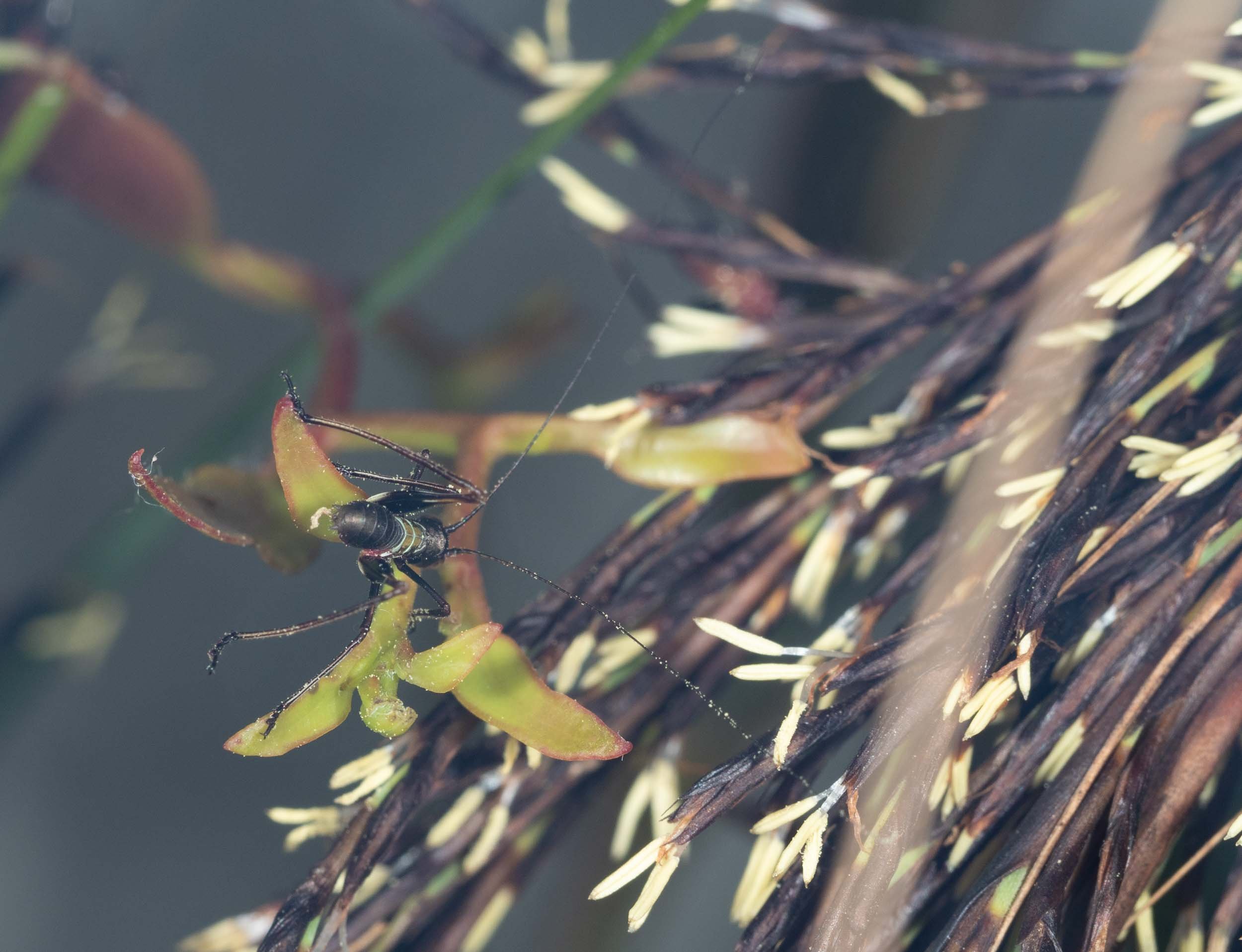

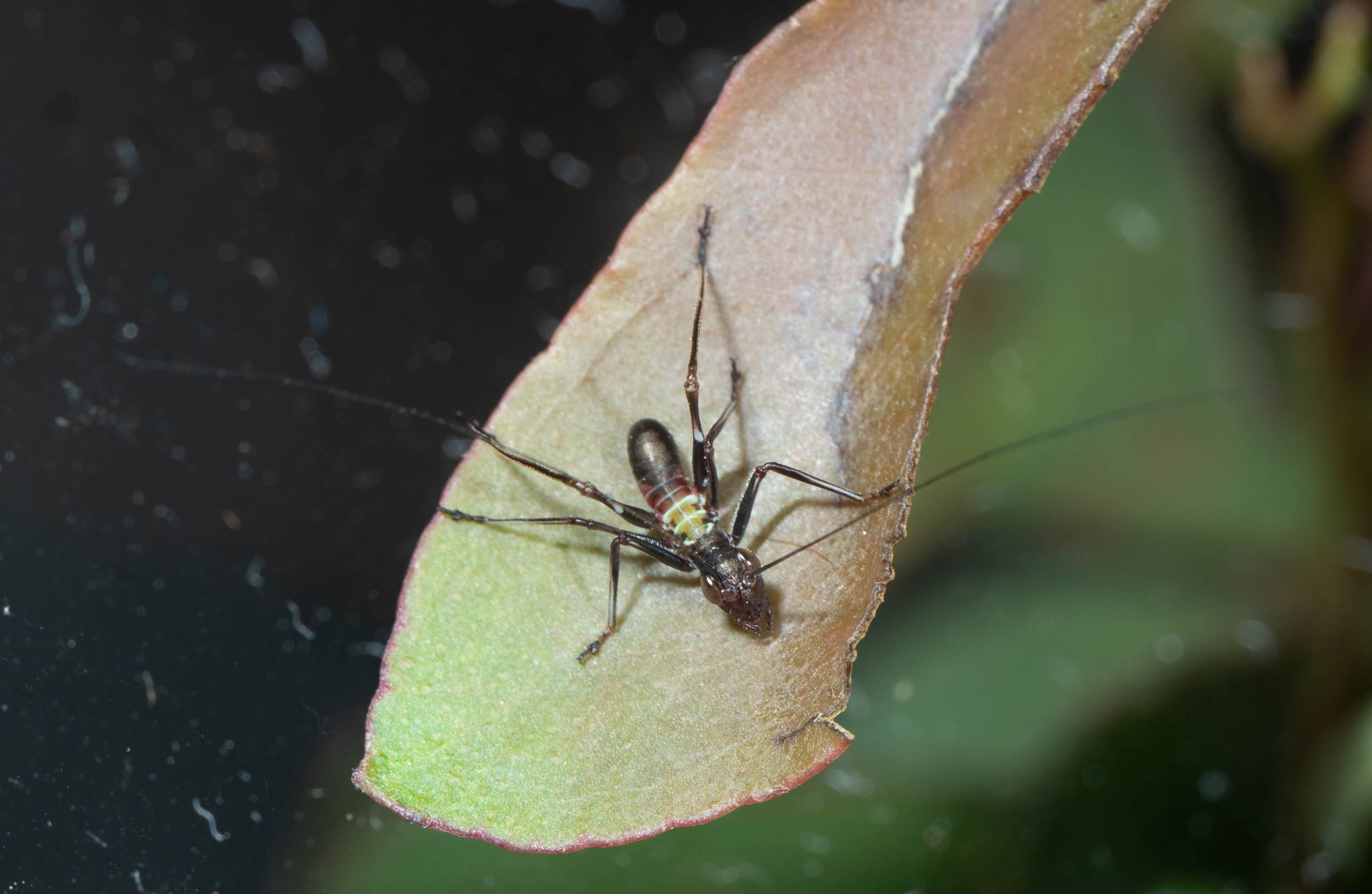
Two dead nymphs were found on the bottom of the tank during the next couple of days. These appeared to have a fungal infection.
The rest of the clutch fed well, quickly moving onto eucalypt leaf tips.
Development of nymphs
29 October. Nymphs are now feeding well on young eucalypt leaves. Ventral side of body is now a dark red colour, whereas most of rest of body is chocolate brown (apart from meso- and meta-scutum which is still green with posterior white border).
6th November. Nymphs now have a larger abdomen and the ventral side of the anterior abdomen is a light green colour. Fresh eucalypt foliage is supplied every few days.
11th November. Nymphs continue to grow and now show a green ventral abdomen. They start feeding on fresh eucalypt foliage immediately after it is supplied.
16th November. Abdomen larger and green area extends posteriorly.
19th November. Nymphs moved into new cage. Freshly moulted nymphs with exuviae seen for first time. Nymphs ate their exuviae completely.
22nd November. Body length of nymphs 10mm.
26th November. Nymphs appear to have longer legs. Green has extended over whole ventral side of abdomen.
30th November. Body length of nymphs 13mm.
2nd December. Moulting nymph seen - eating exuvia. This nymph has clear lateral wing buds.
4th December.
9th December.
Body length of nymphs measured as 14mm.
12th December.
Nymphs are now jumping occasionally. They actively seek out and move onto the fresh vegetation when replacing vegetation. They seem to sense it from a distance.
Body length of largest nymphs 17mm.
This gallery shows one individual, one of the larger nymphs. The lateral wing buds are clearly evident.
This gallery shows a nymph that has just moulted. It ate its exuvia completely immediately after these photos were taken.


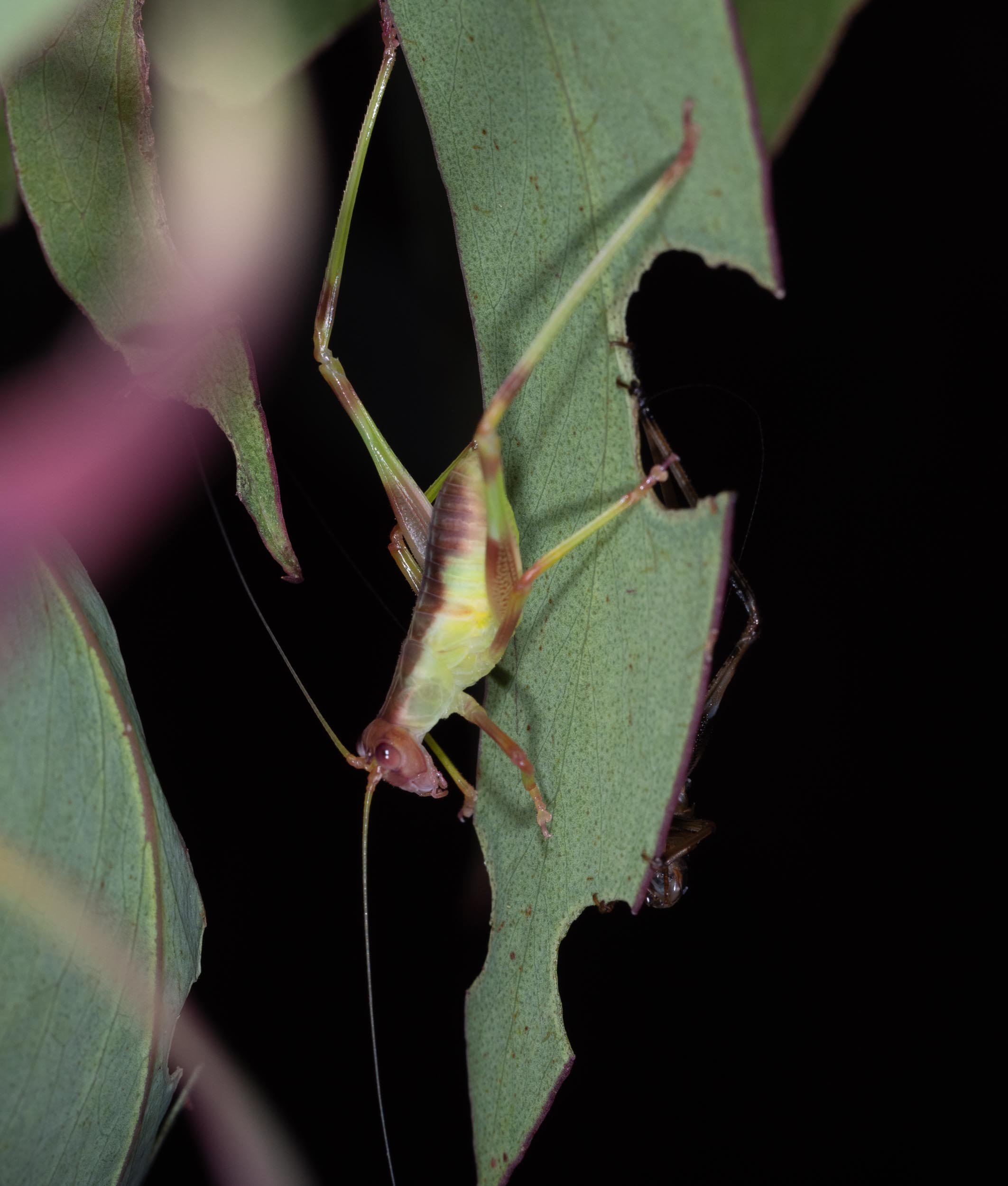

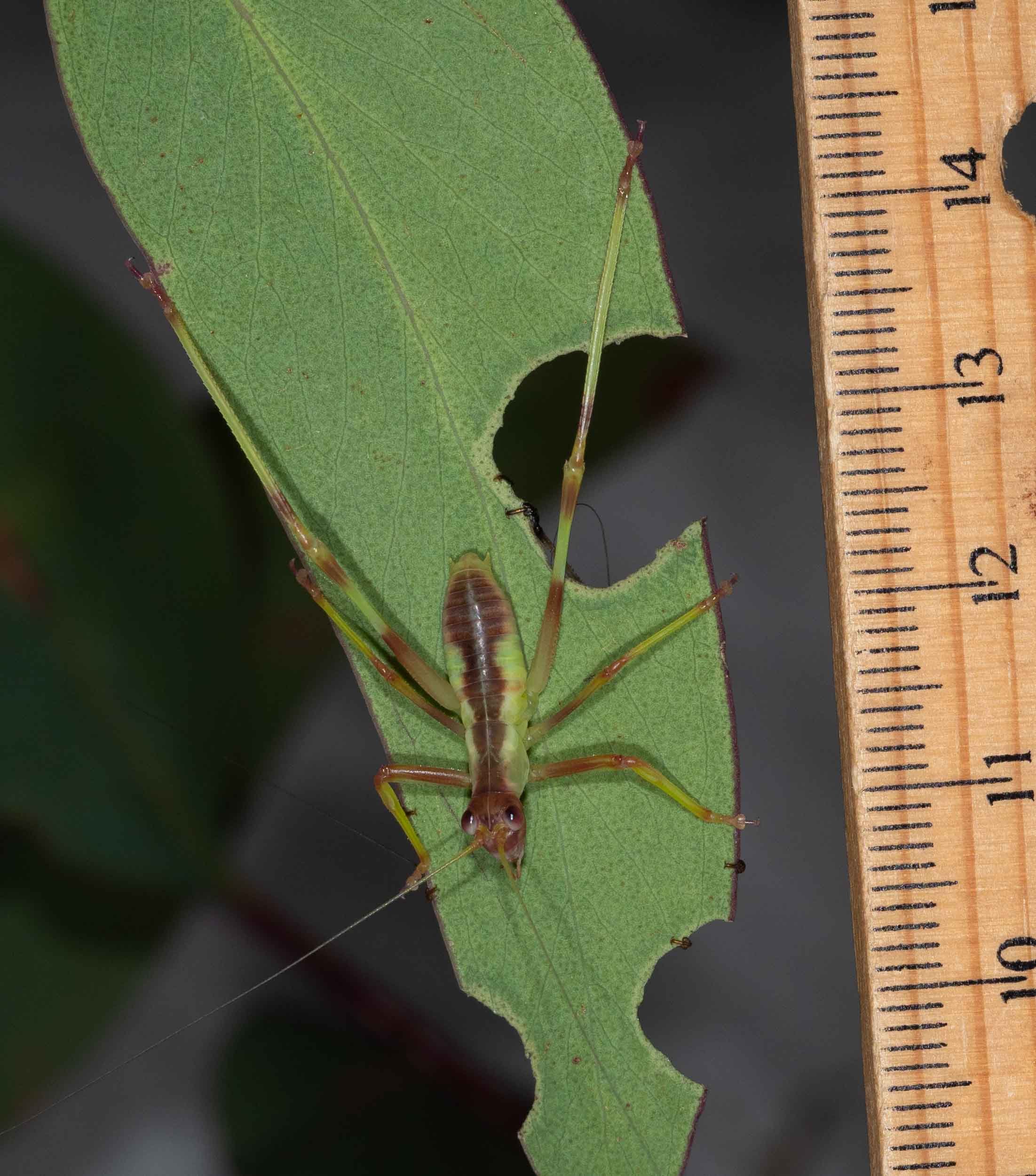
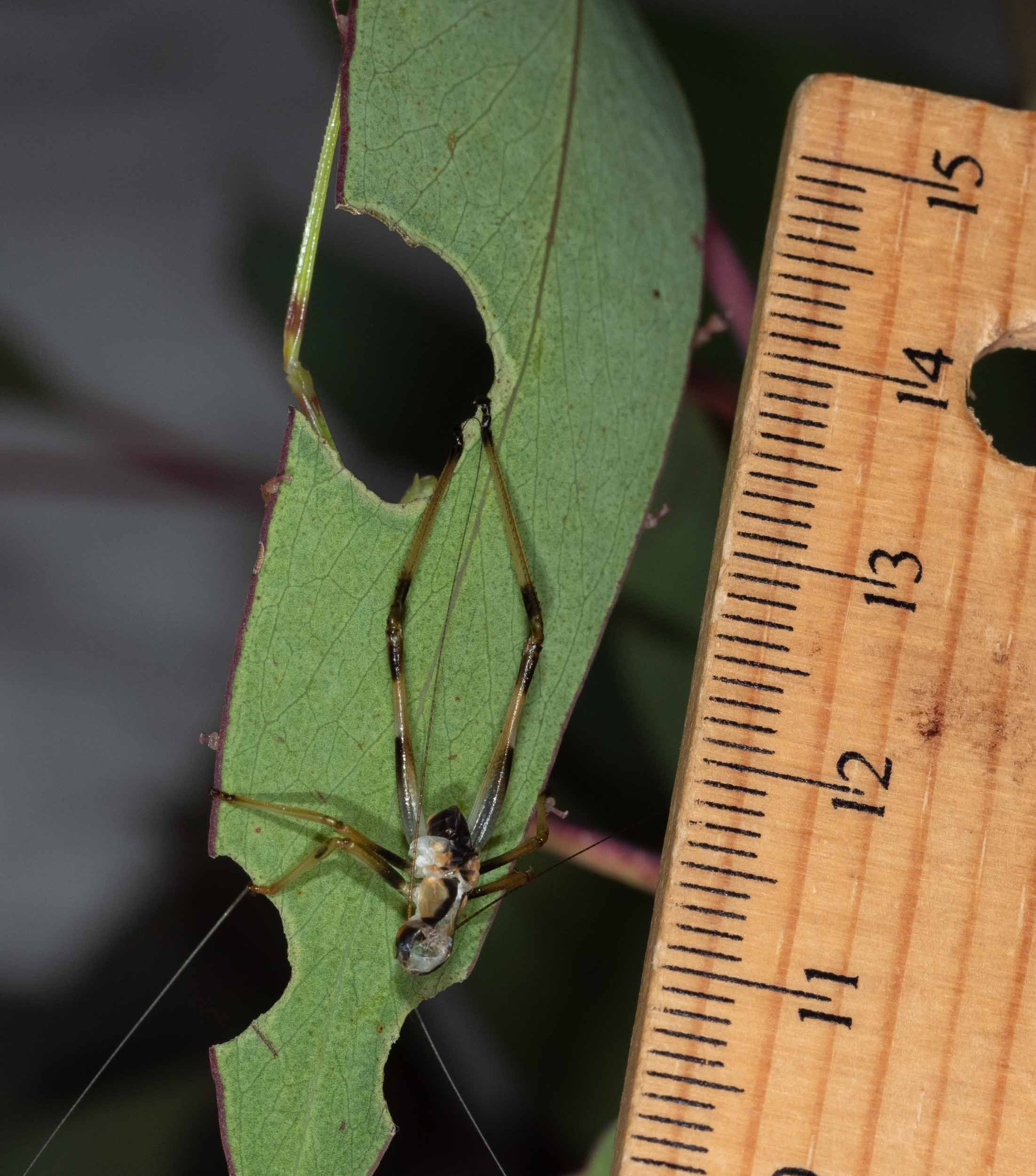
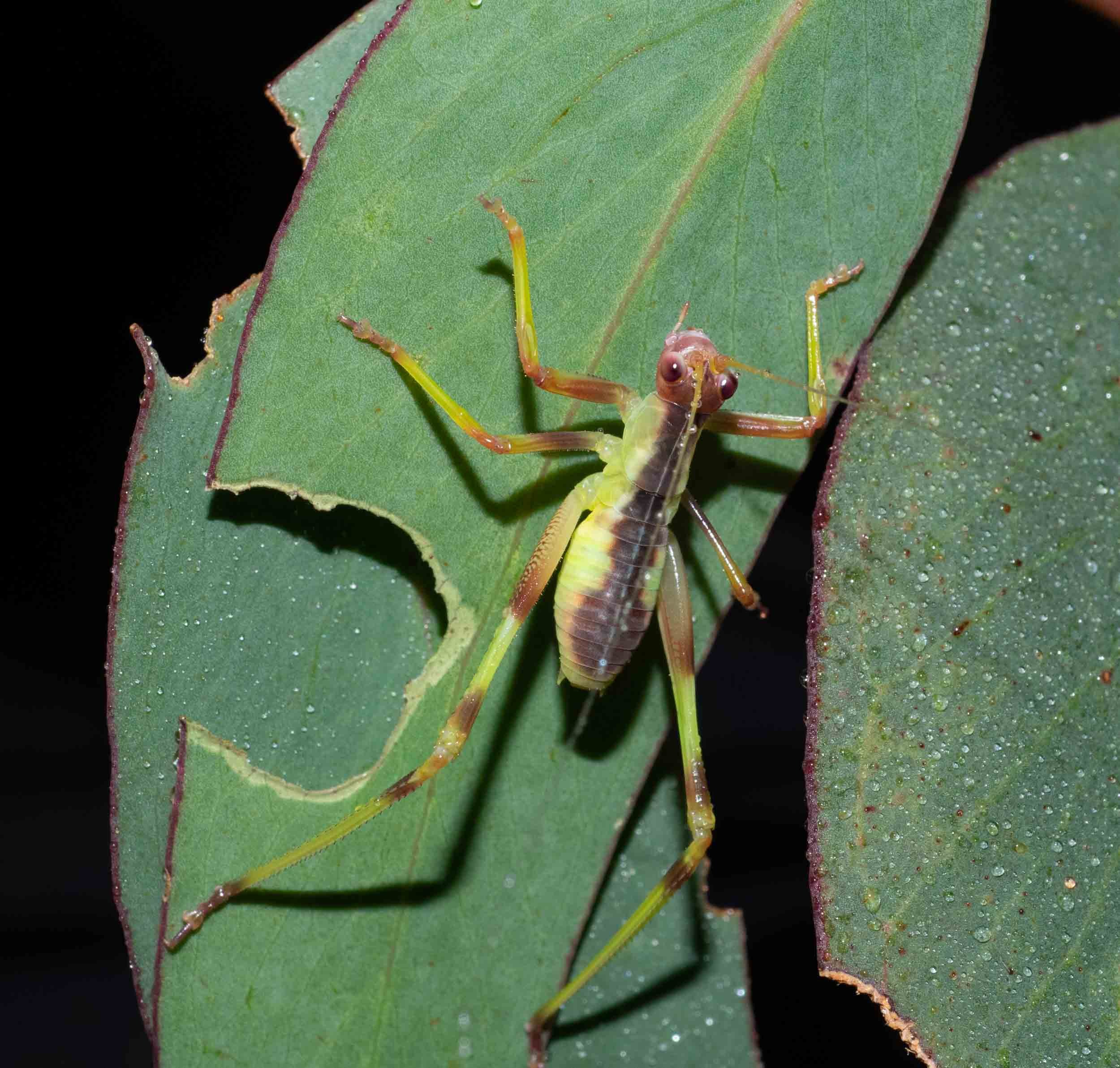
Other large nymphs
15th December
A nymph tore off whole left metathoracic leg and tibia/tarsus of left mesothoracic leg during ecdysis.
Wing buds evident on nymphs
16th December
Largest nymphs - body length 18mm. Appear to be interacting to some extent. When a nymph contacts another with a hindleg, it pushes away by extending the leg.
Over the following few days the nymphs became progressively more active, attempting to crawl out of the cage when we were feeding - possibly entering a dispersal phase?
21st December
We decided to release 9 of the nymphs. These had a body length of around 16mm. They were placed on the leaves of epicormic growth of a Eucalyptus sieberi tree near our carpark. The remaining 10 nymphs were kept in the cage for further rearing. They were transported to Woombah on our Christmas trip. They were supplied with fresh vegetation en route.



Soon after release the nymphs began climbing upwards along branches or the tree trunk. An hour later all had disappeared.
25th December
All of the nymphs had survived the journey well. They readily accepted the local Woombah eucalypt vegetation.
The one individual photographed on 25th December had dorsal wing buds.
28th December
Nymphs feeding actively. Many had swollen abdomens. Hoppy still has lateral wing buds. Many have dorsal wing buds. Sex difference in terminalia evident at this stage - ovipositor anlage clearly evident.
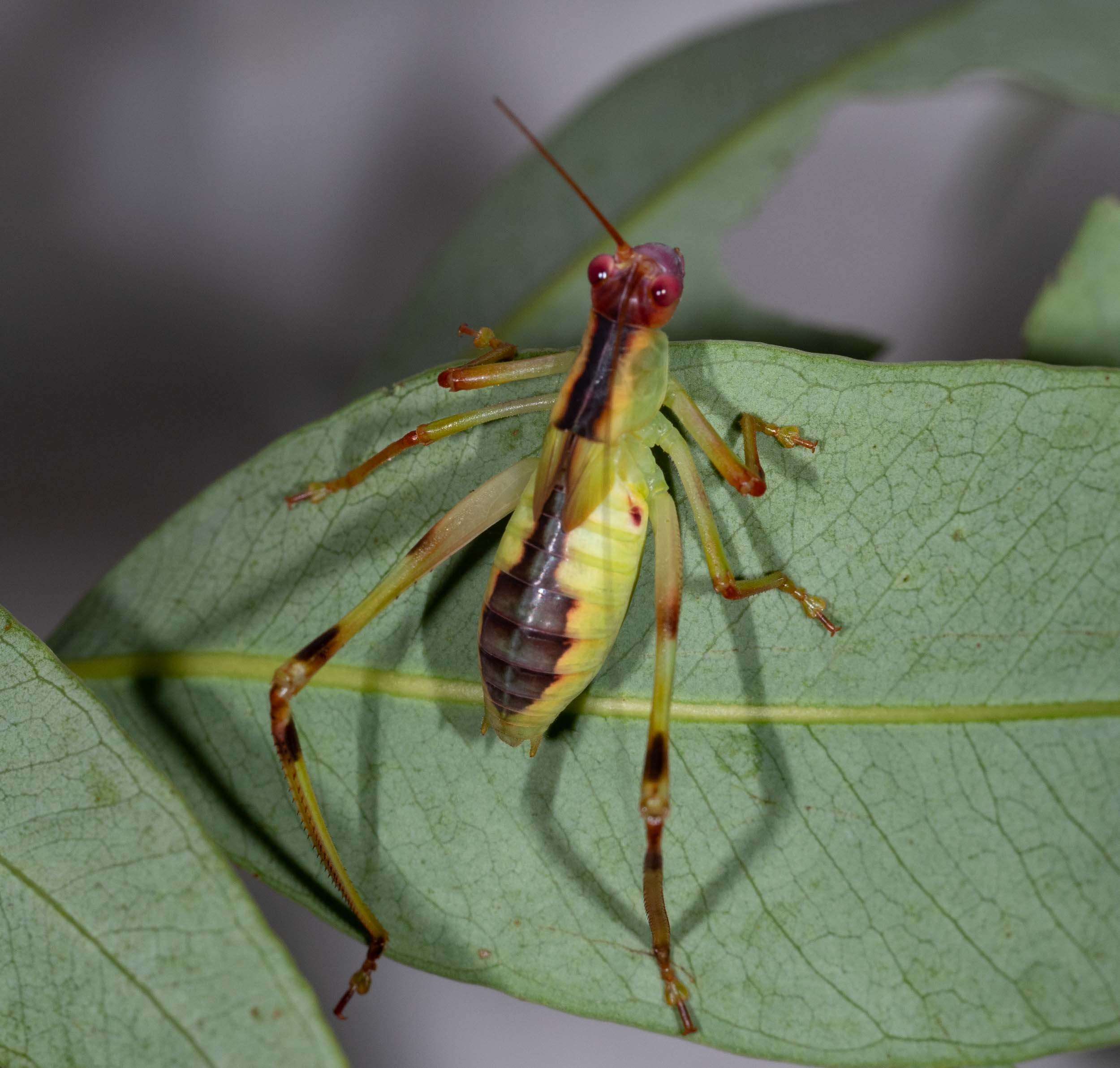
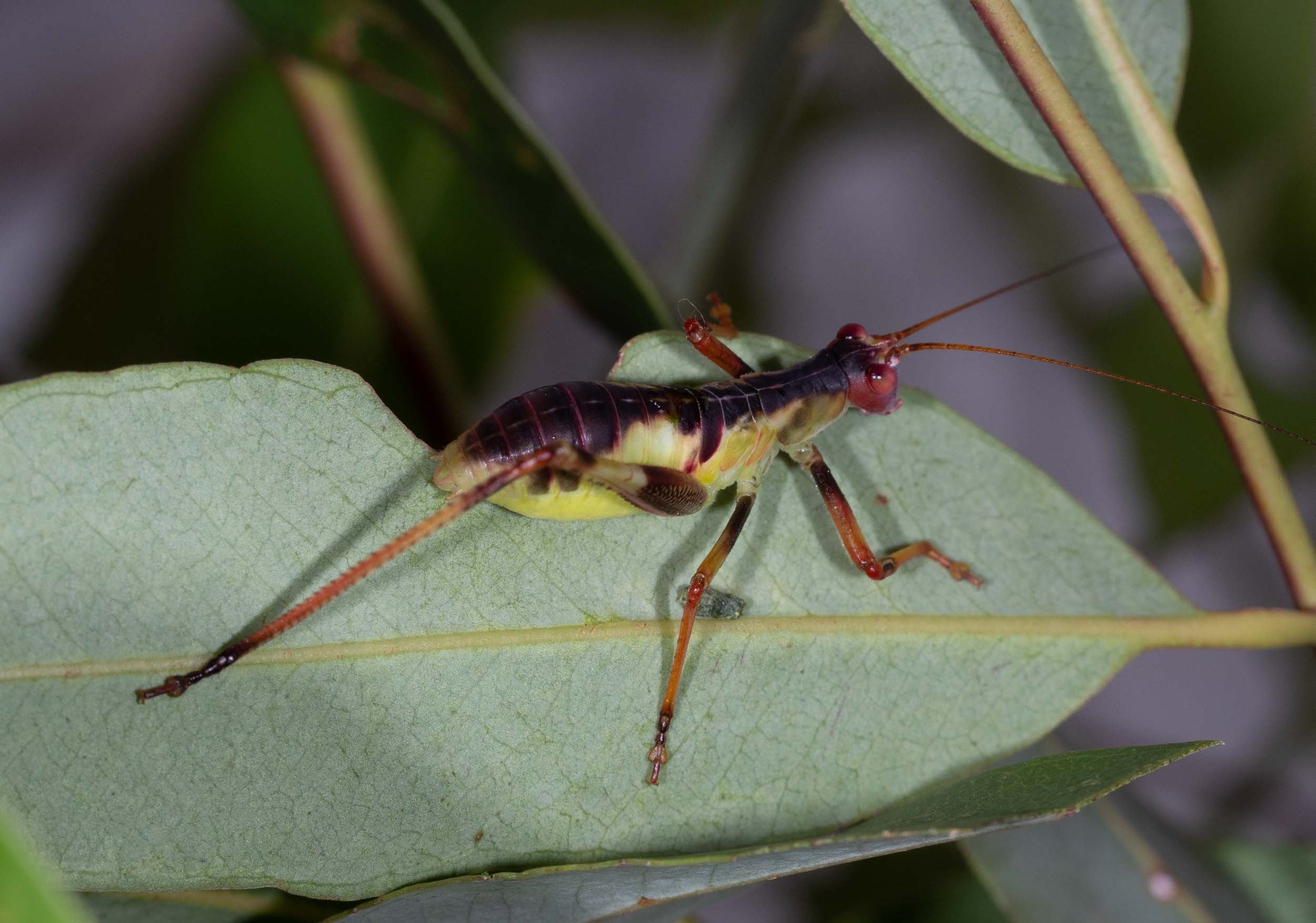
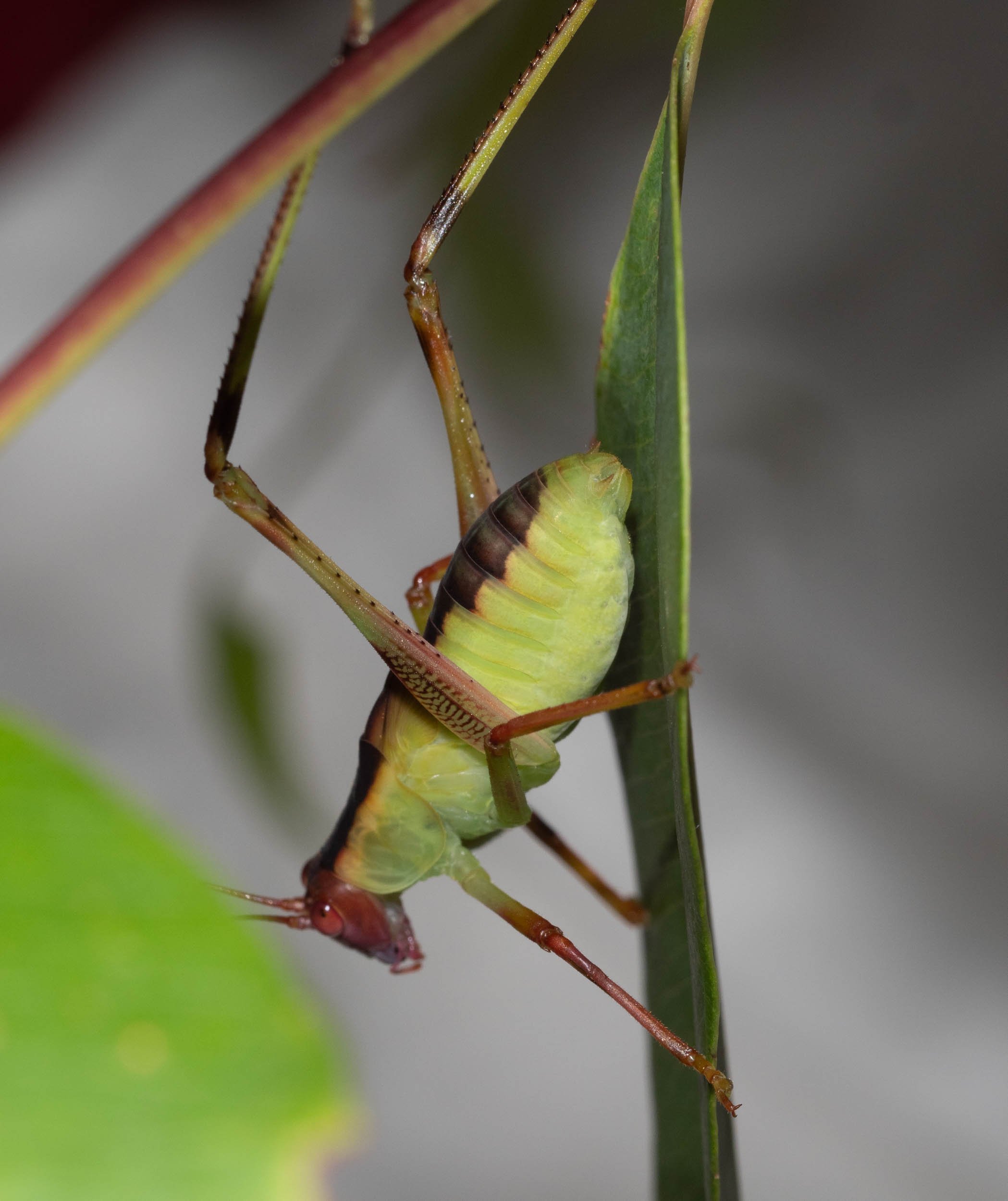
31st December
All nymphs healthy. First sign of dorsal wing buds on Hoppy. Clear from terminalia that it is a male.
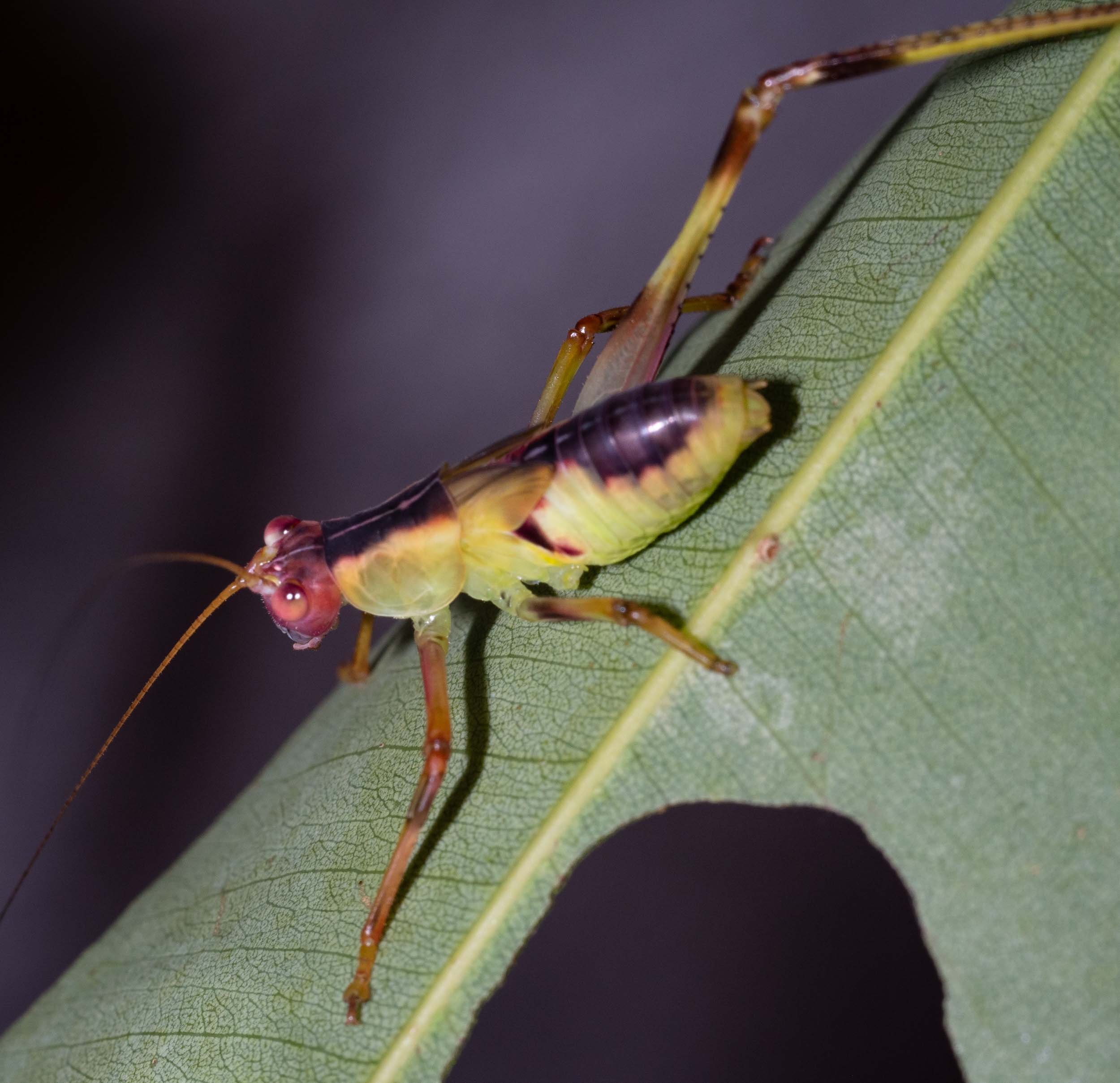
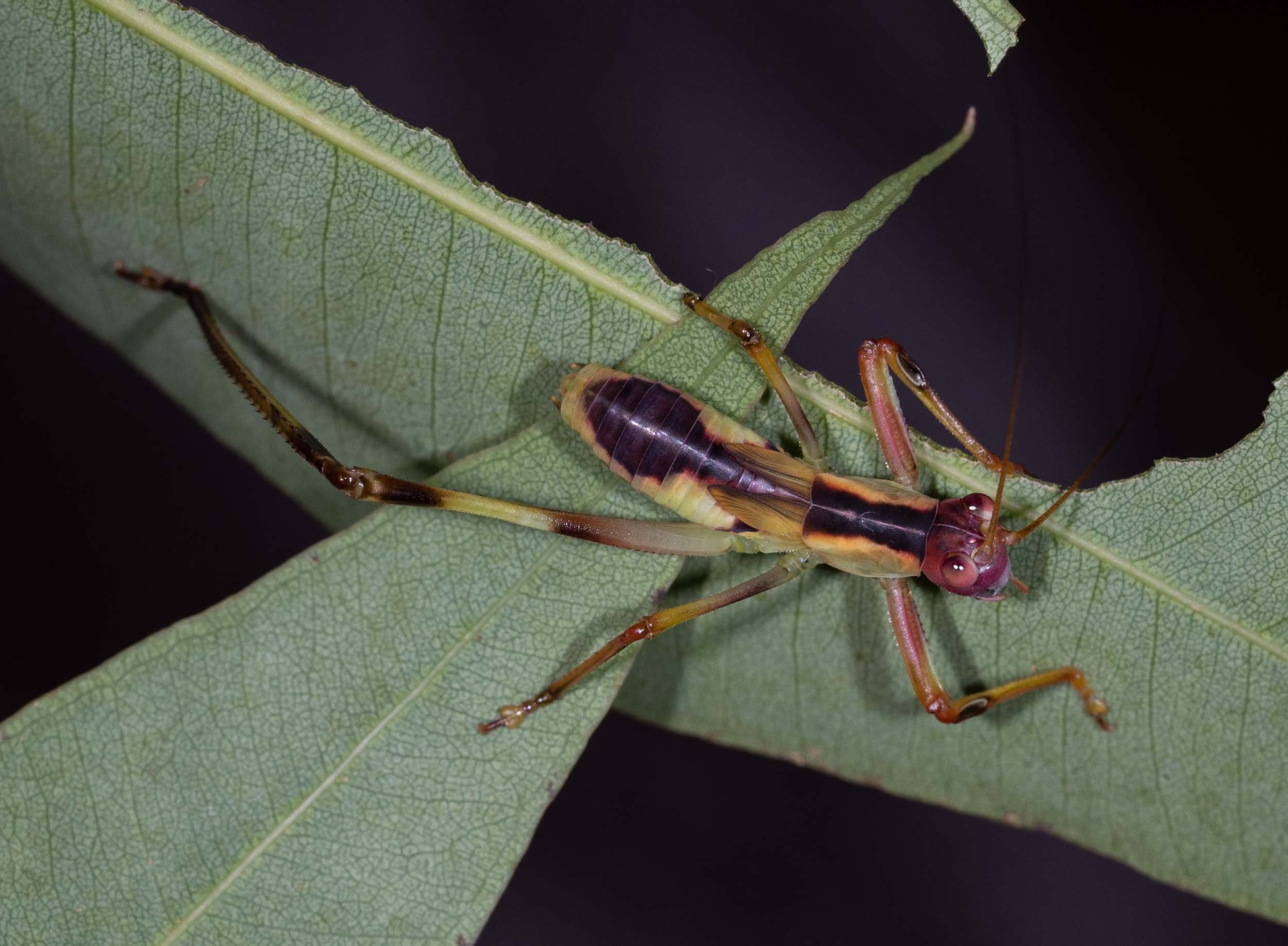
3rd January 2022
One v. large nymph with greatly enlarged wing buds evident - penultimate nymphal stage. First nymph at the previous stage (dorsal wing buds) seen on 25th December. However no photographs were taken between 21st December (at which stage no nymphs with dorsal wing buds were seen) and 25th December. So this previous instar could be between 9 and 13 days long.
Nymph with damaged tegmina anlage seen for first time.

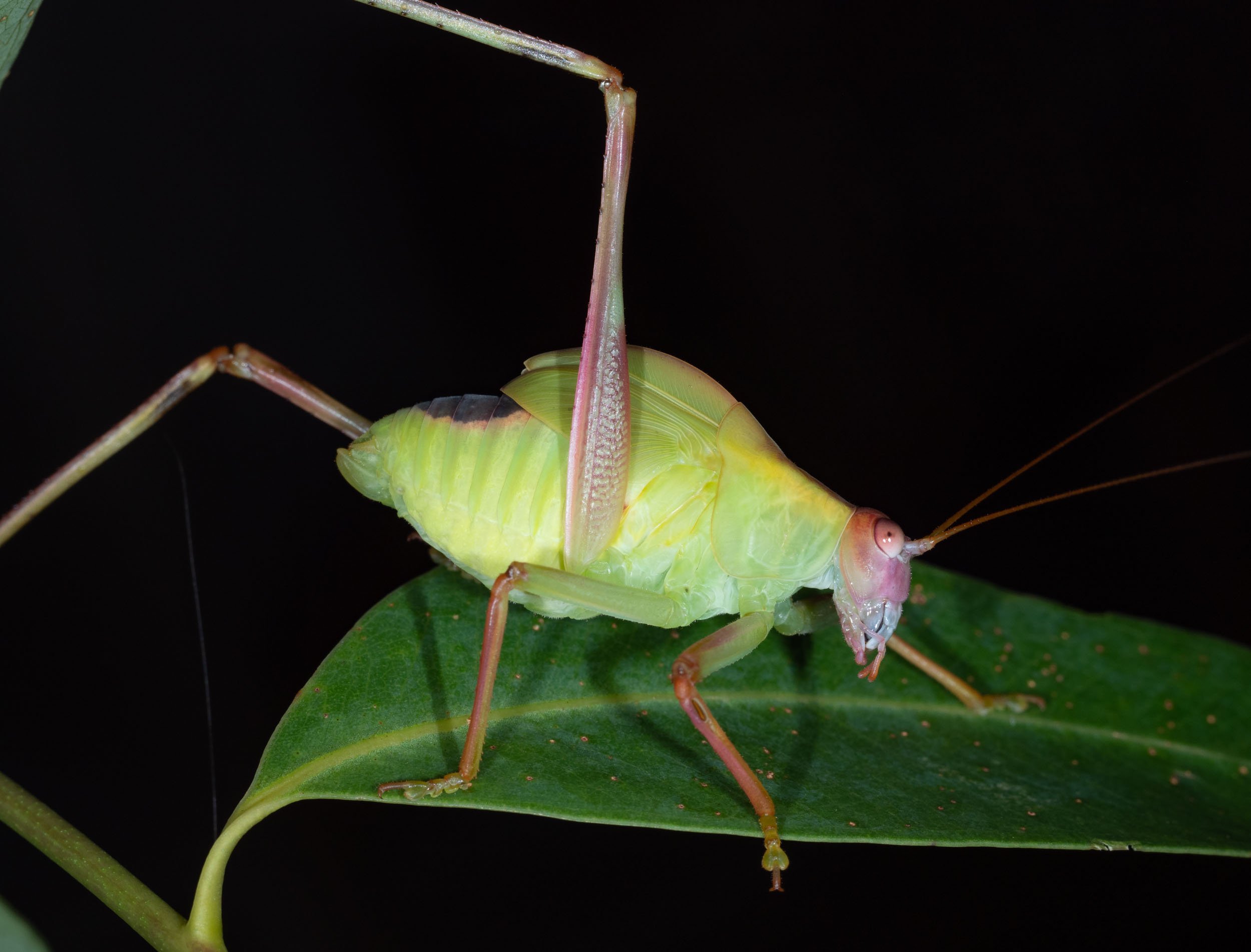
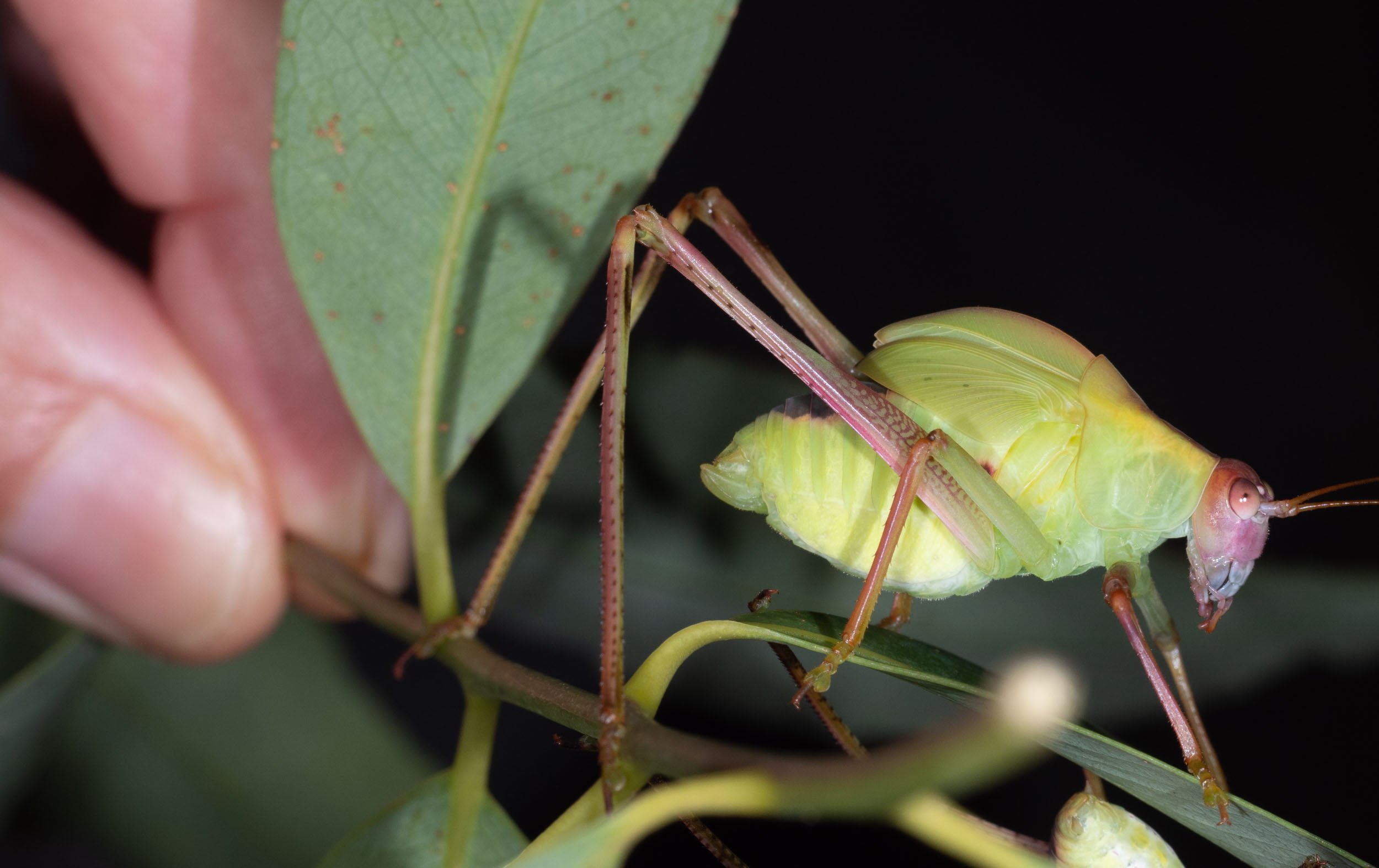
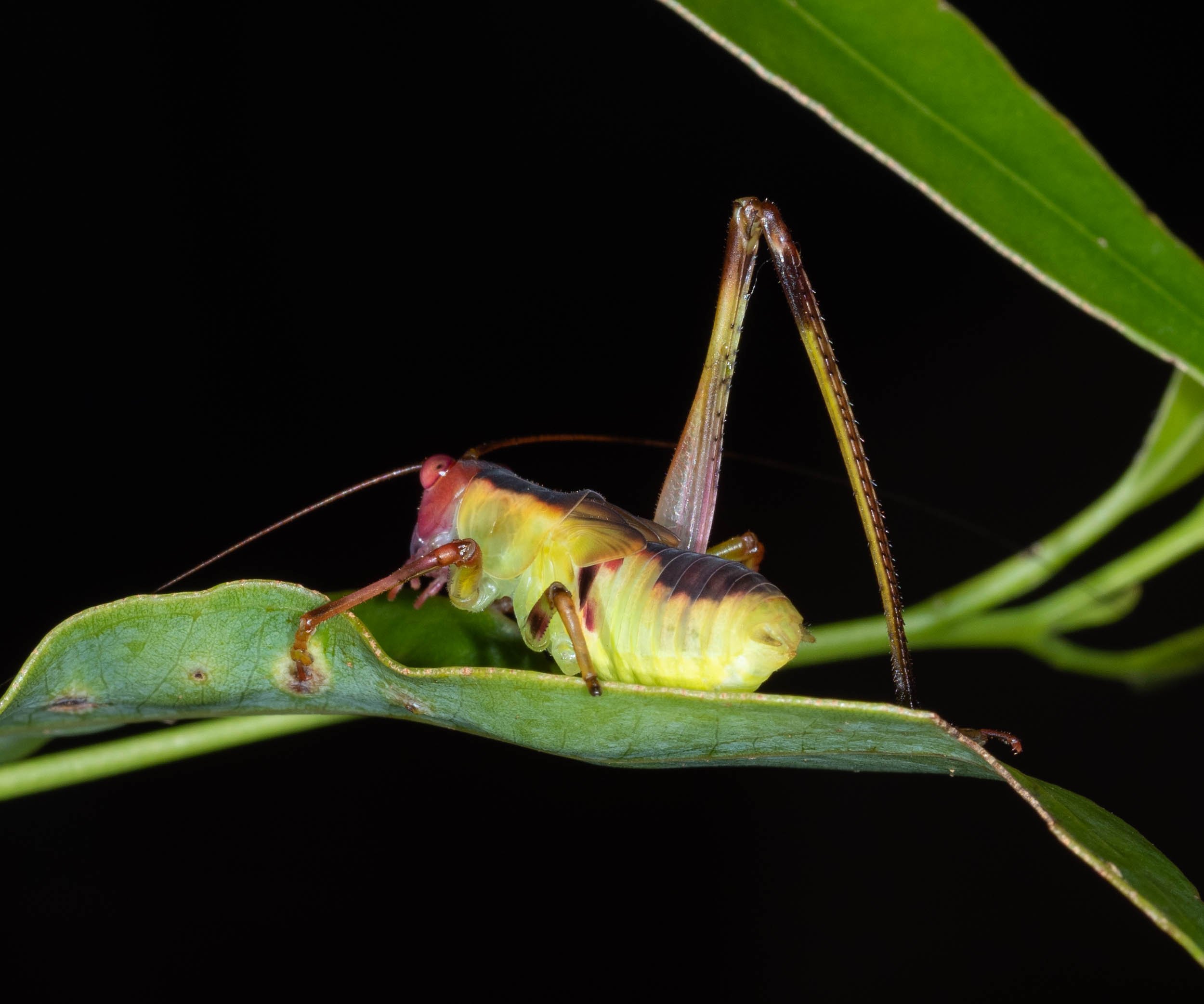
5th January
2 nymphs have moulted to the larger size
8th January
3-4 nymphs have moulted to the larger size
11th January
7 nymphs have moutled to the larger size. These are all females and the body length is 35mm. One of these has a notch in the tegmina. This damage may have been evident at the previous instar on 3 January.
There was a noticeable change in their behaviour after undergoing this moult. They were much less mobile and reluctant to move on and off a leaf during transfers during replacement of cage vegetation. We suggest that keeping as still as possible aids their camouflage. They are certainly difficult to sight amongst the vegetation.
We noticed that when defaecating the nymphs flick the faecal pellet away with their hind leg.
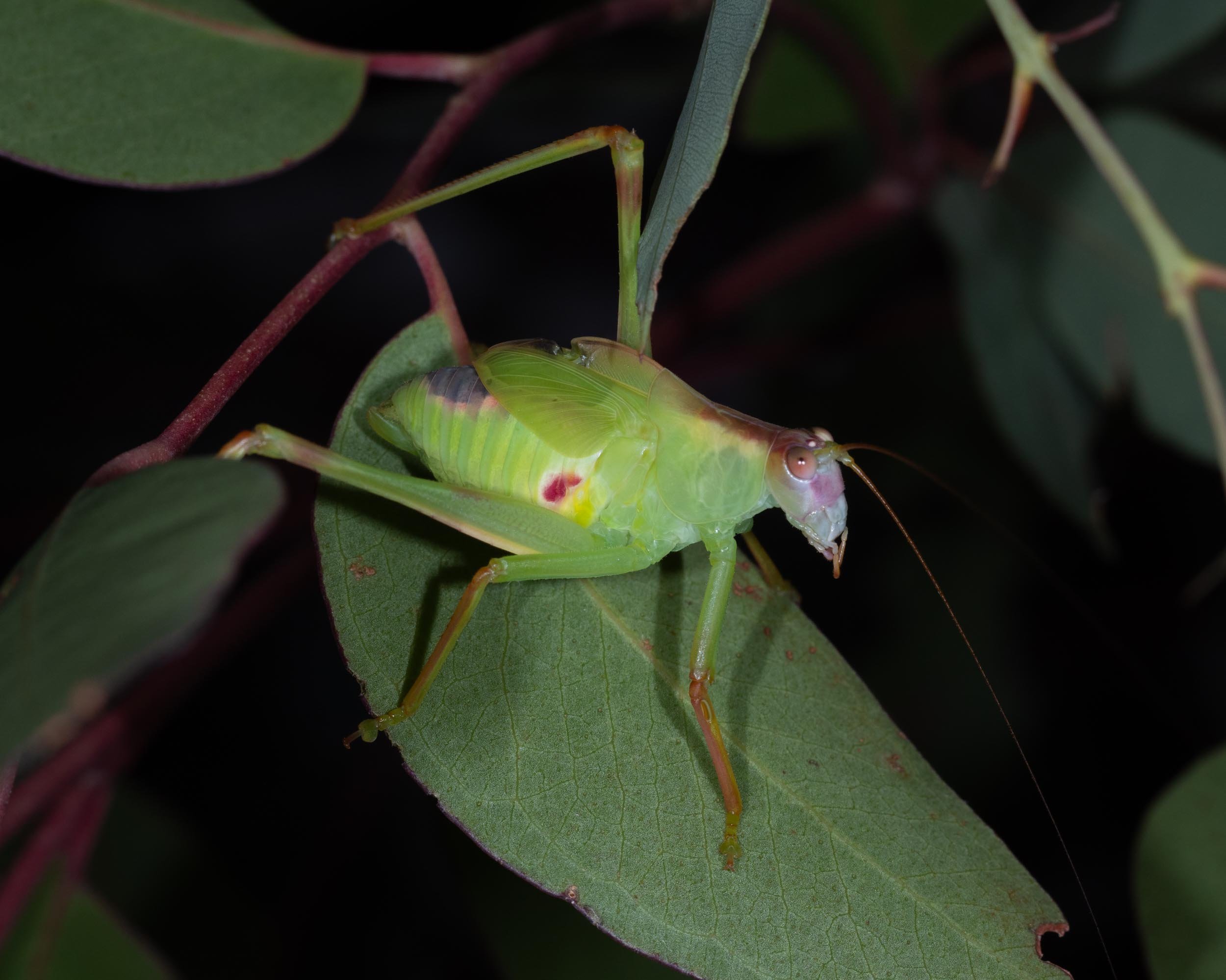
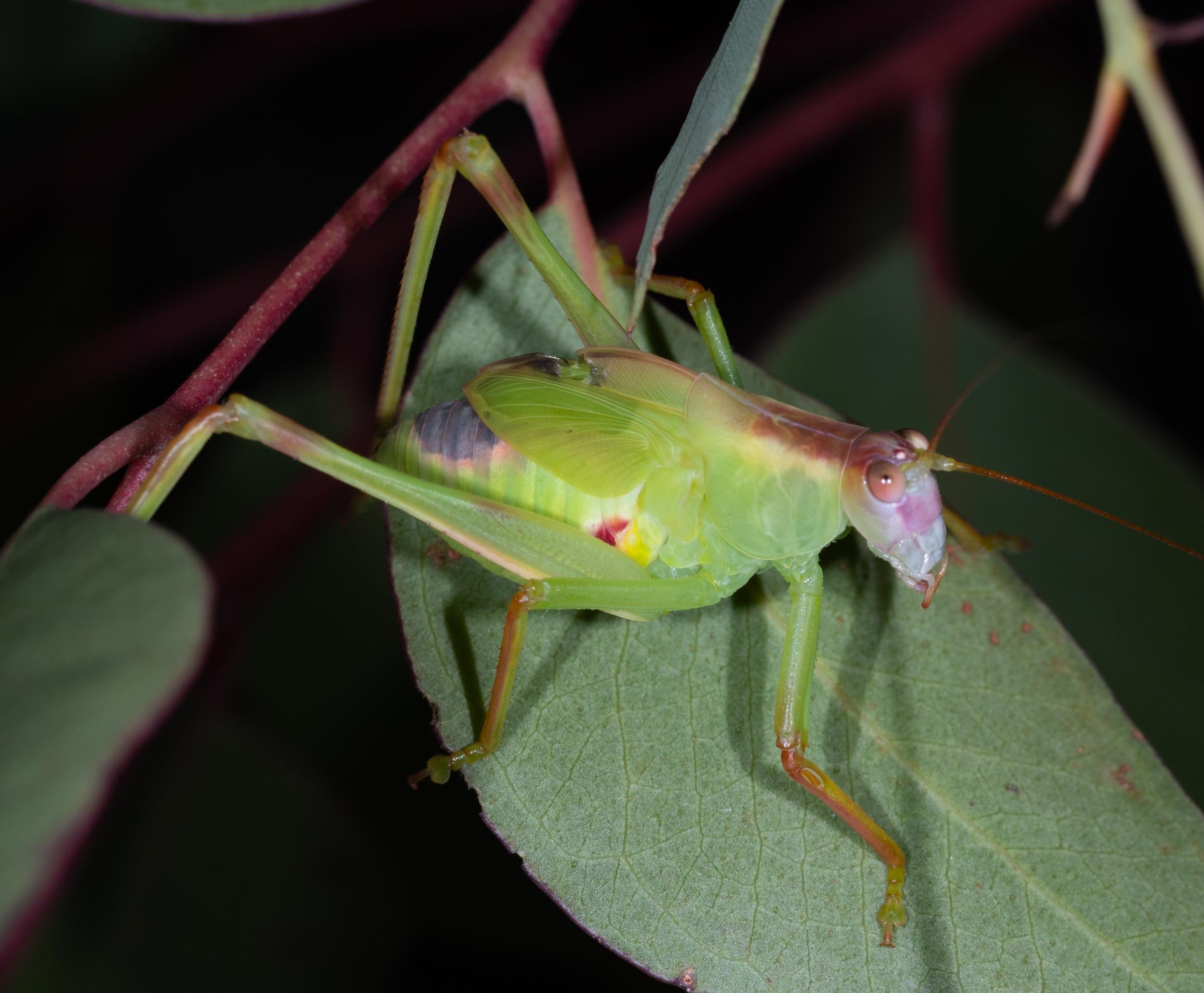

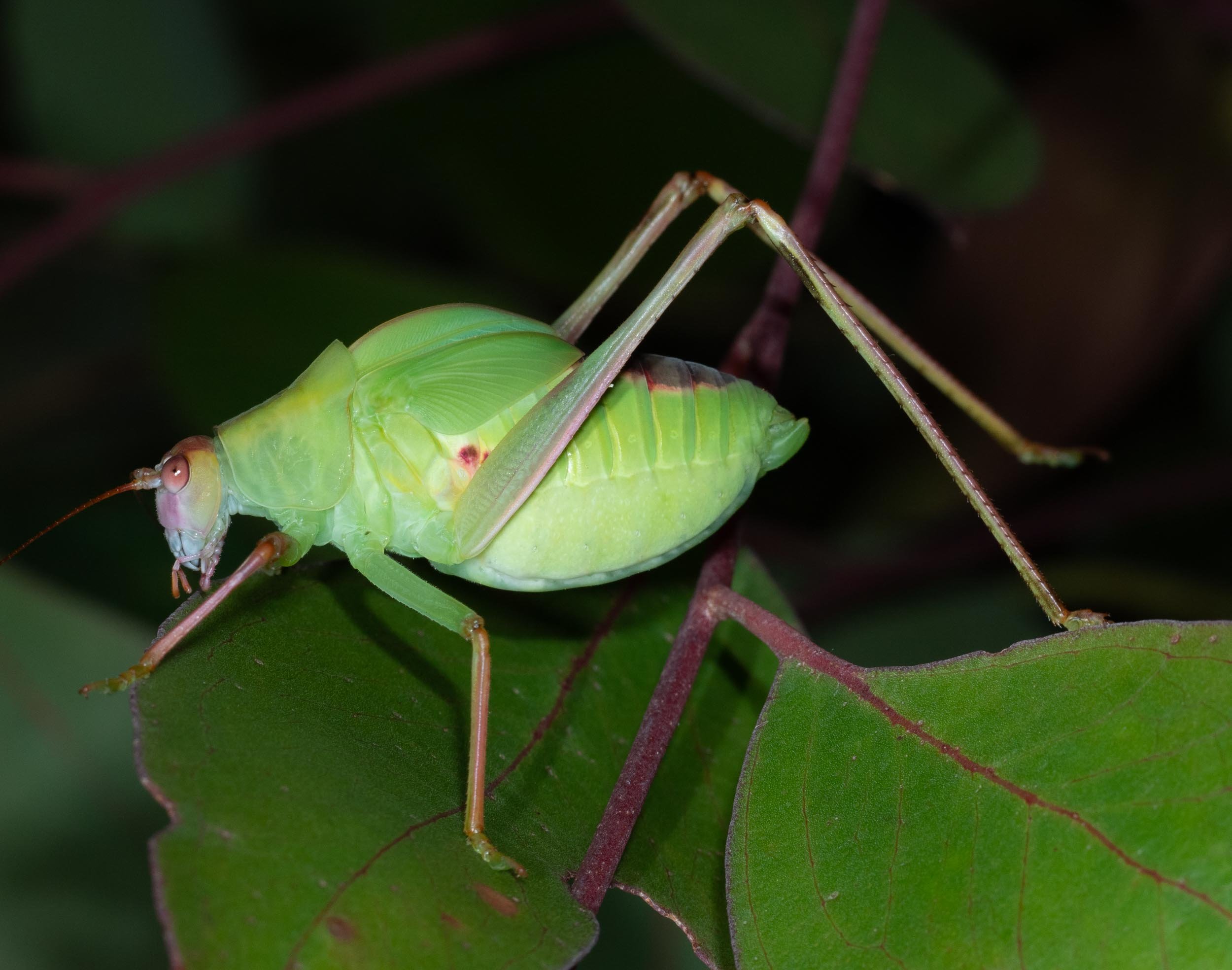

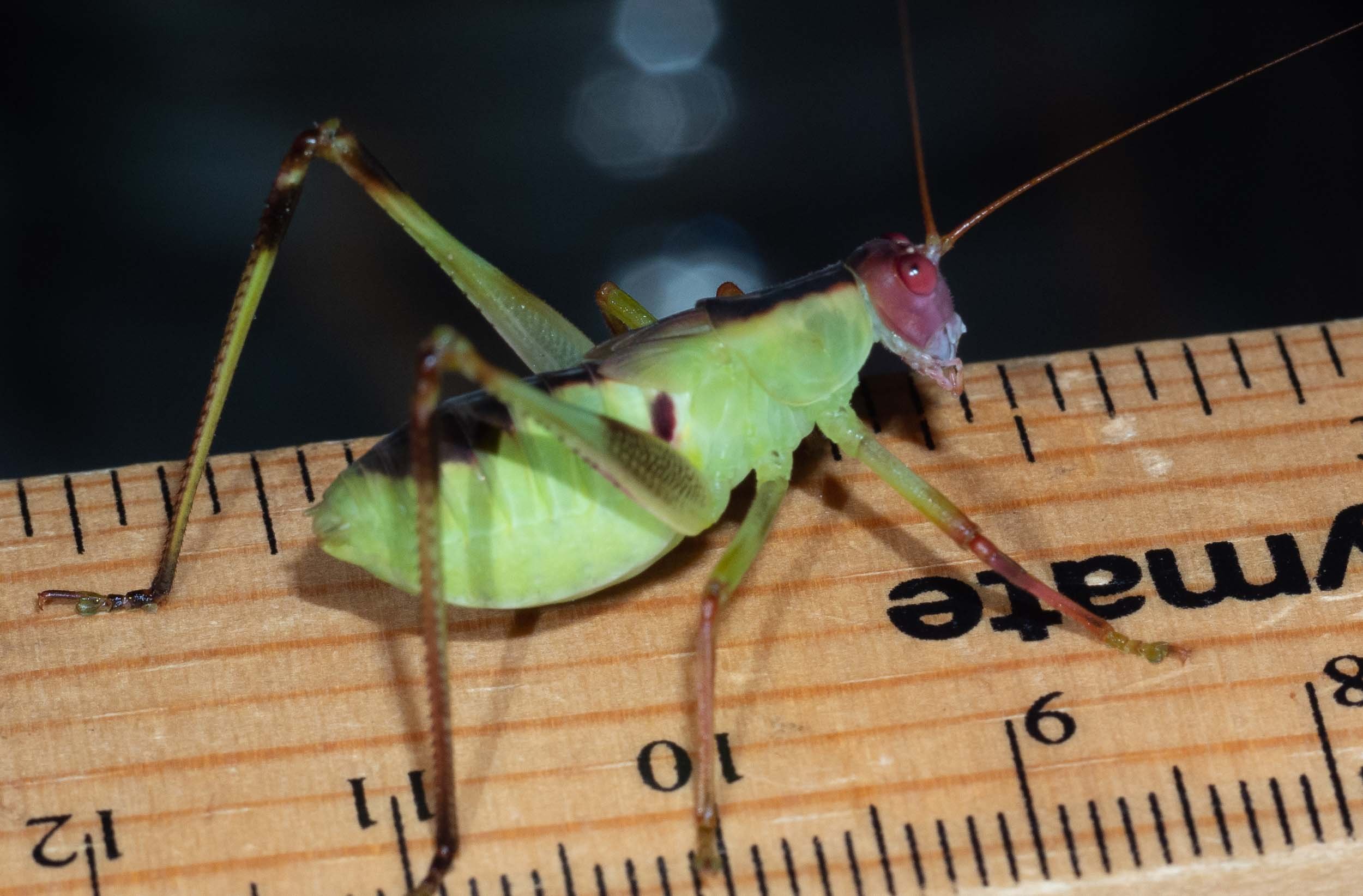
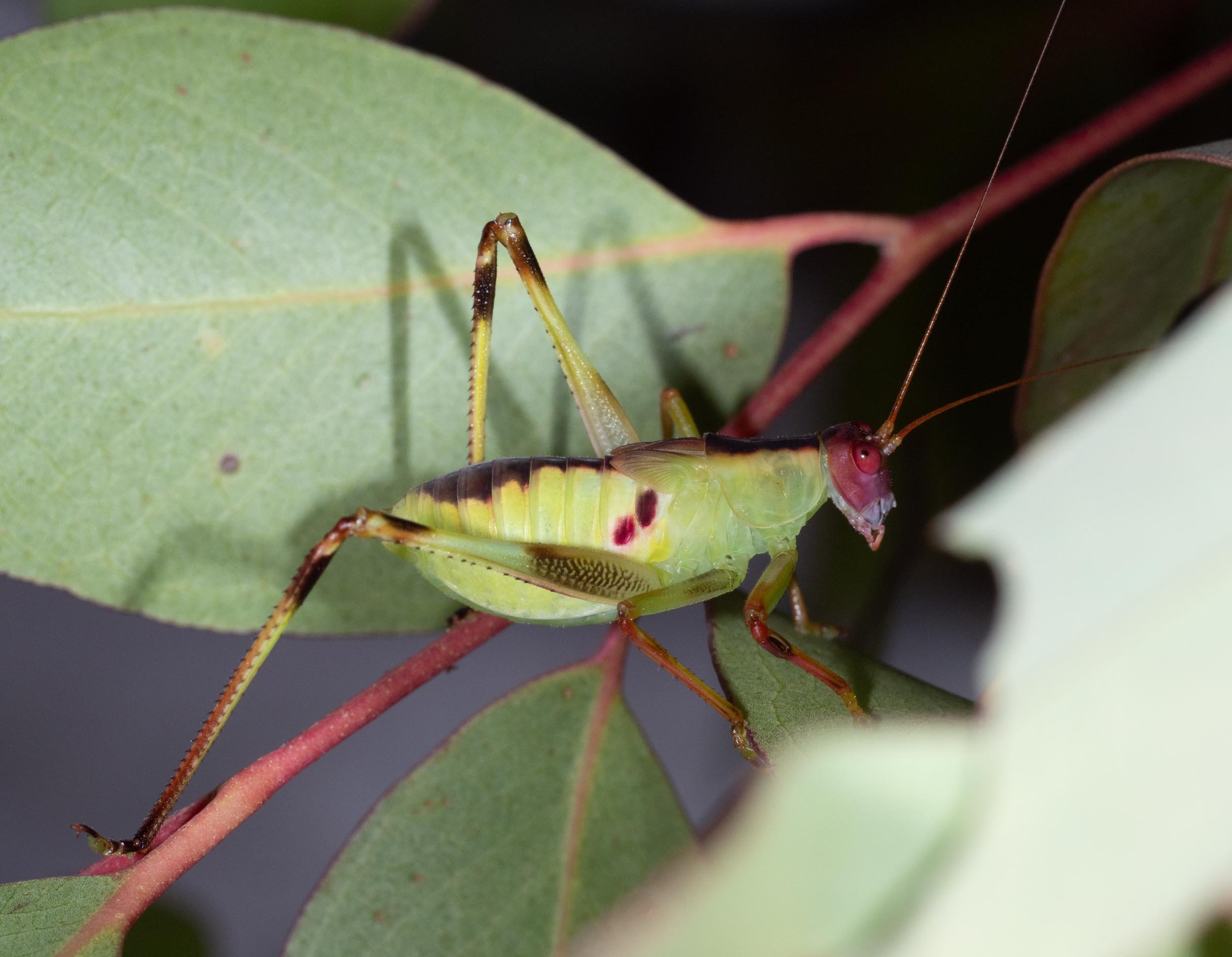
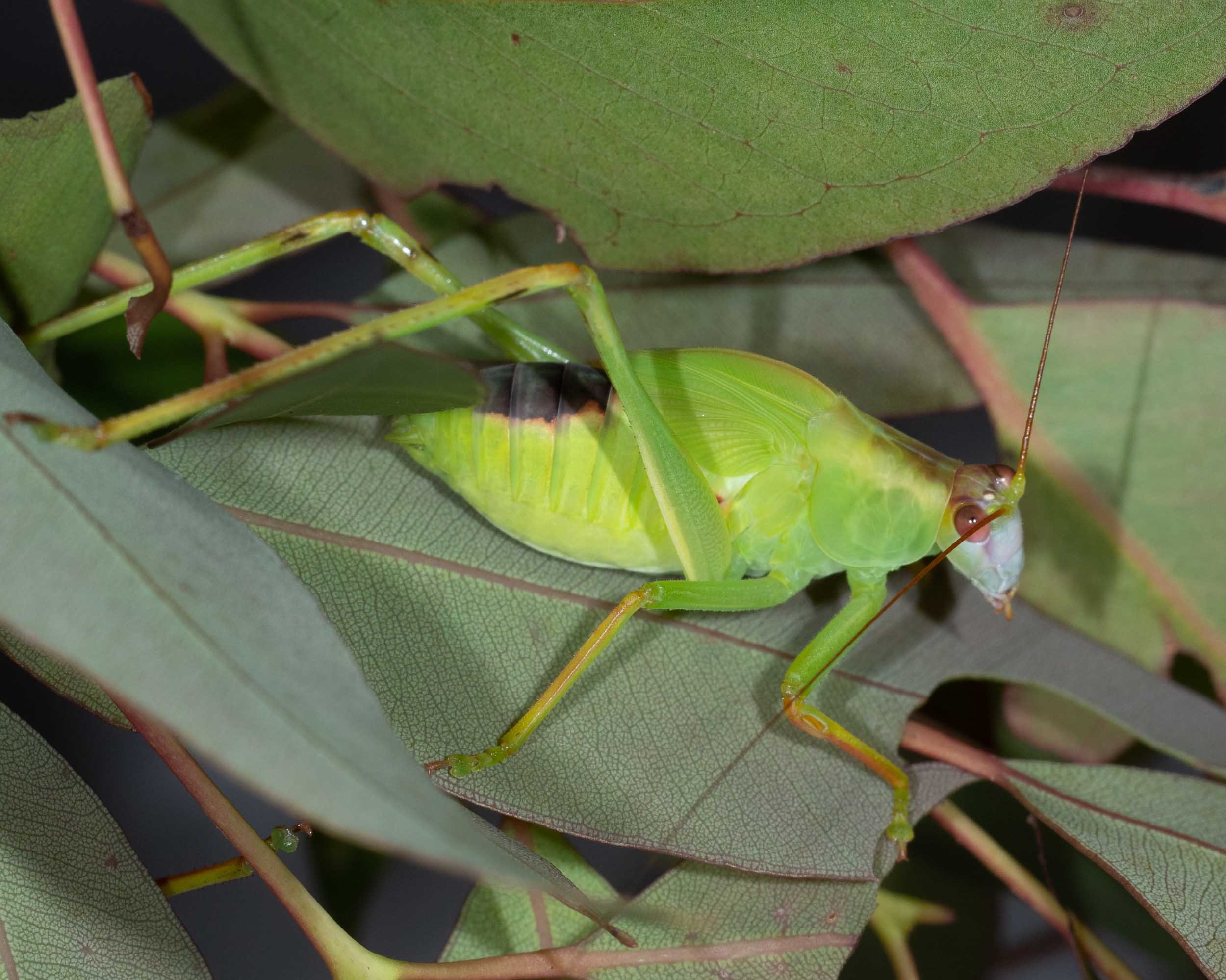
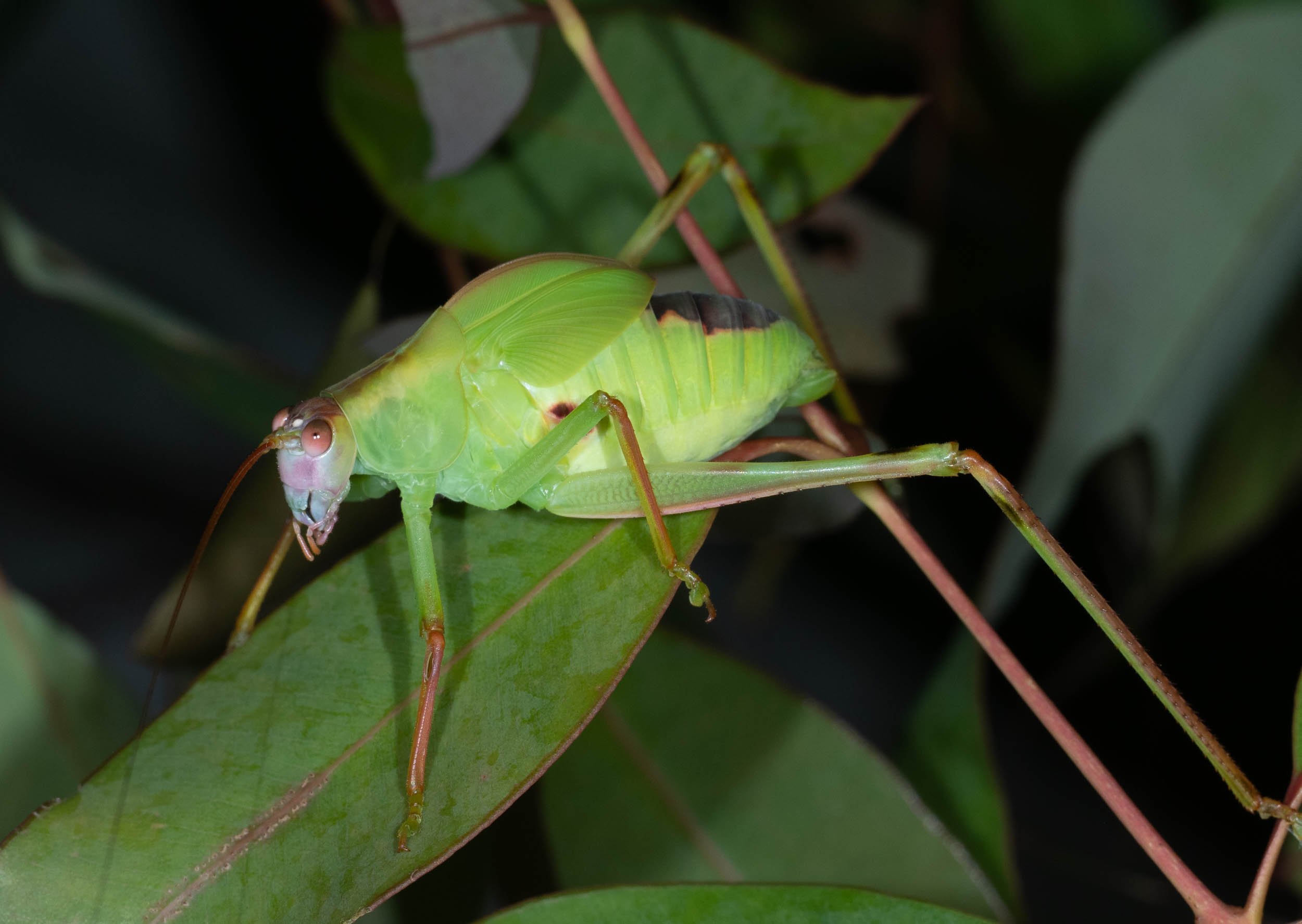
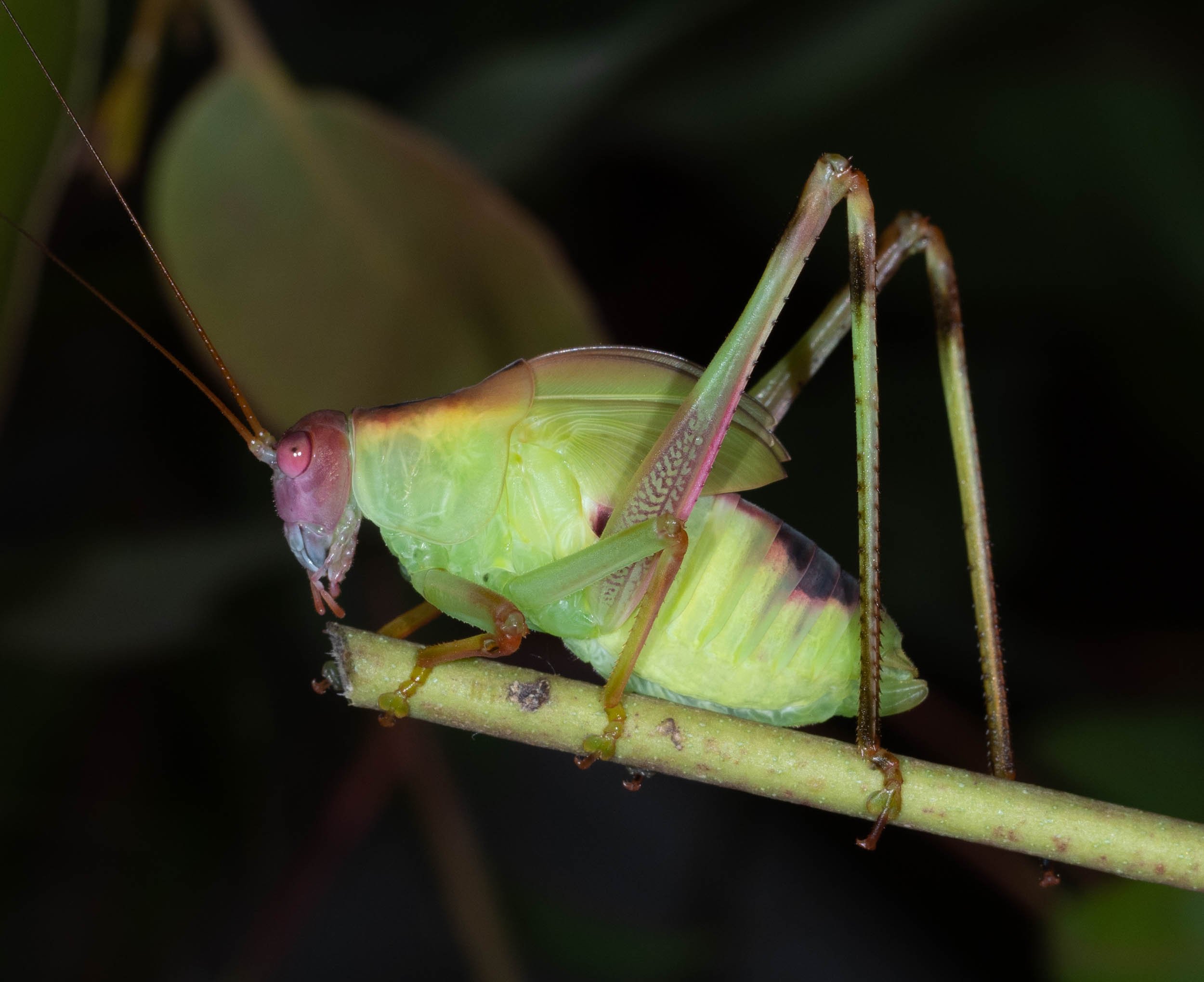
14th January
8 nymphs have moulted to the larger size, only Hoppy and one other are in the previous stage. Almost all of the older nymphs are females.
The larger nymphs are more responsive than previously, tending to move away when we approach.
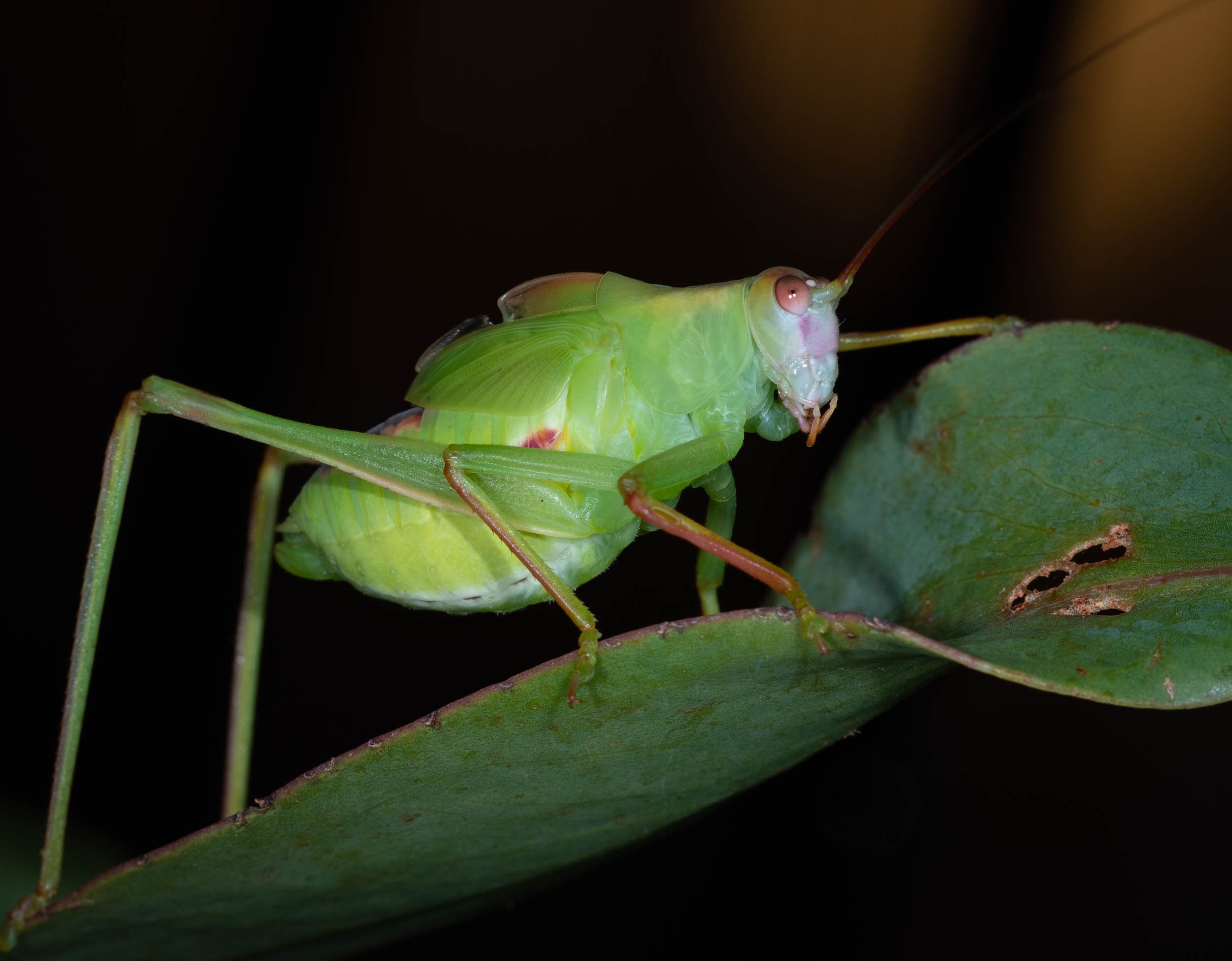

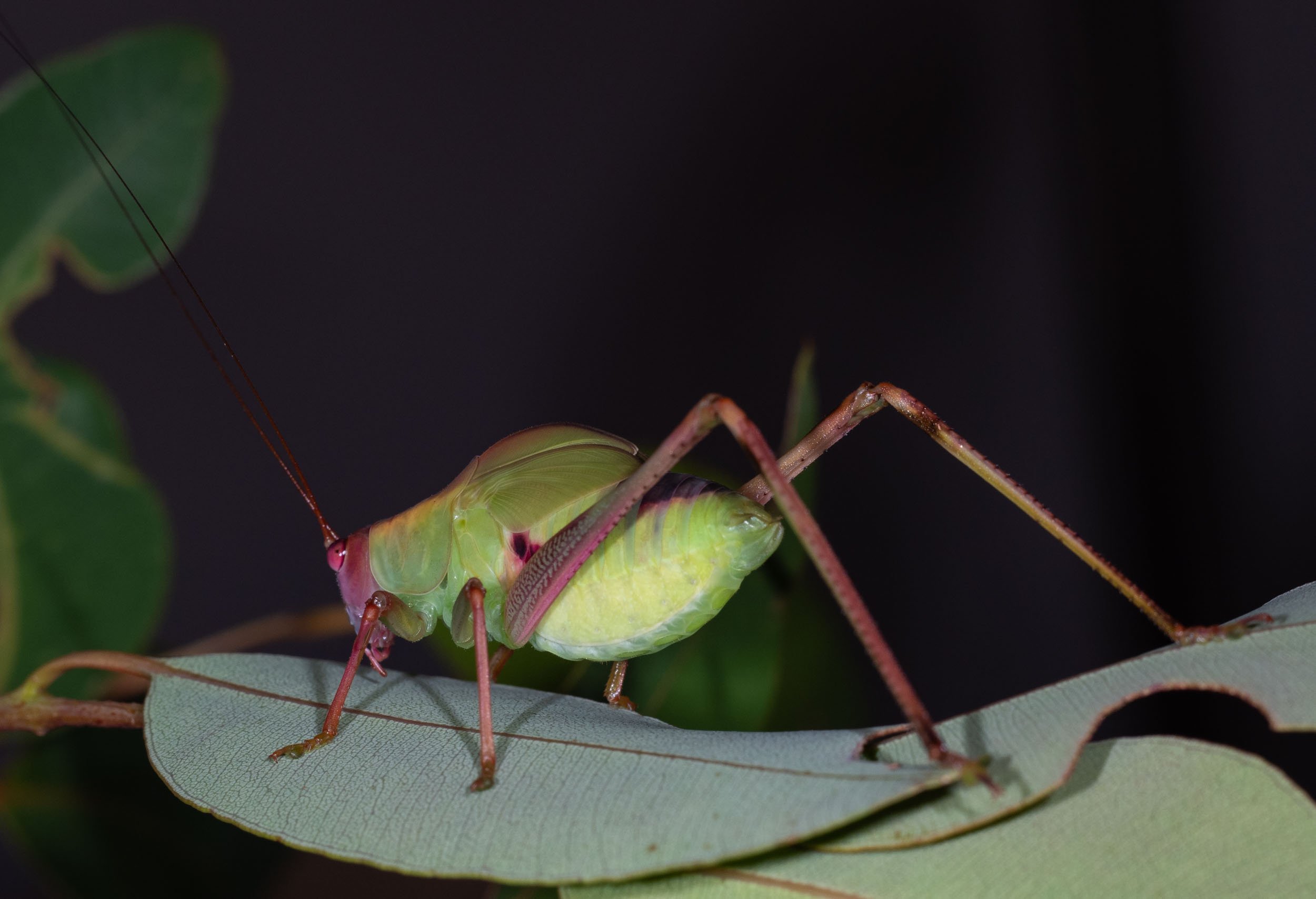
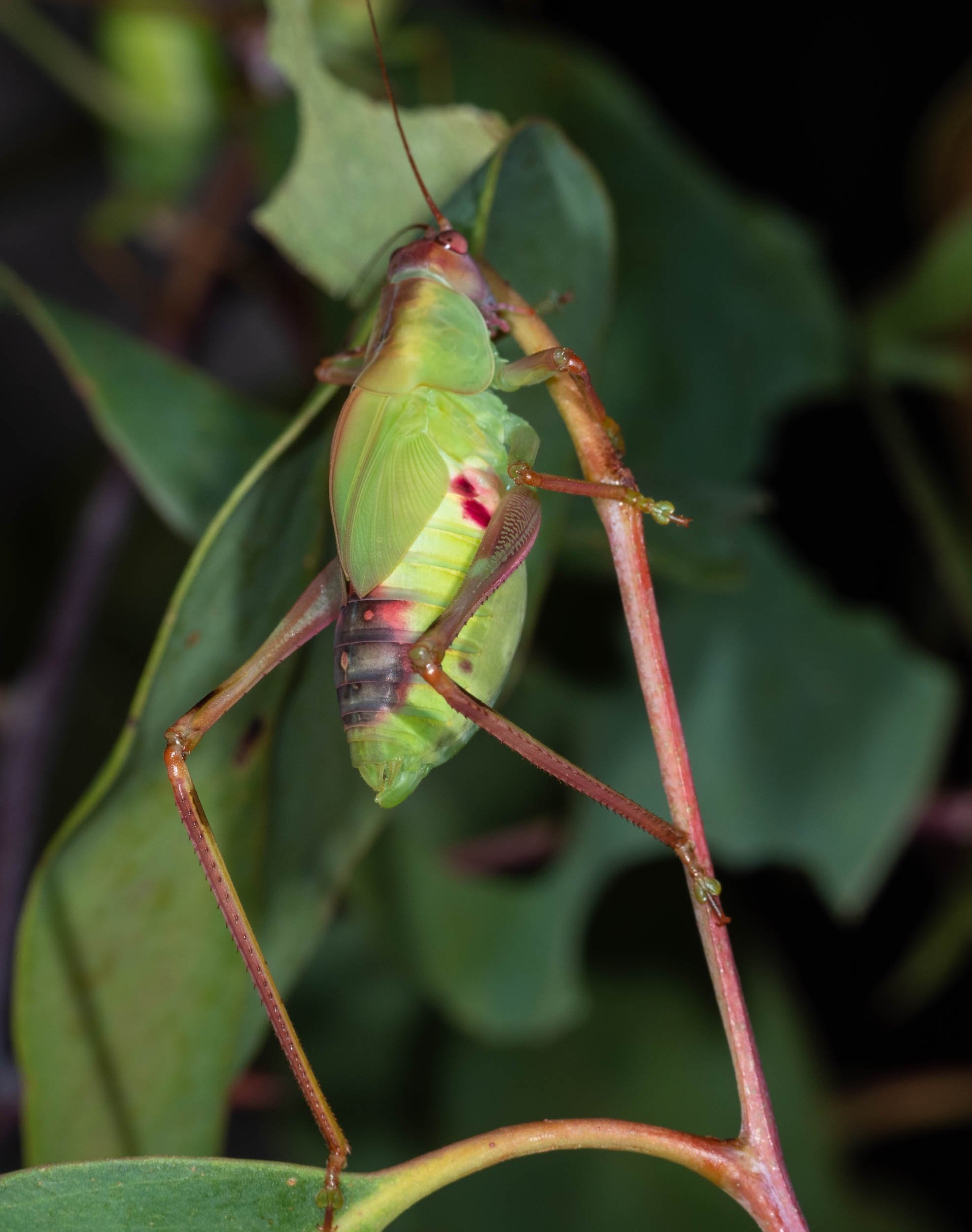



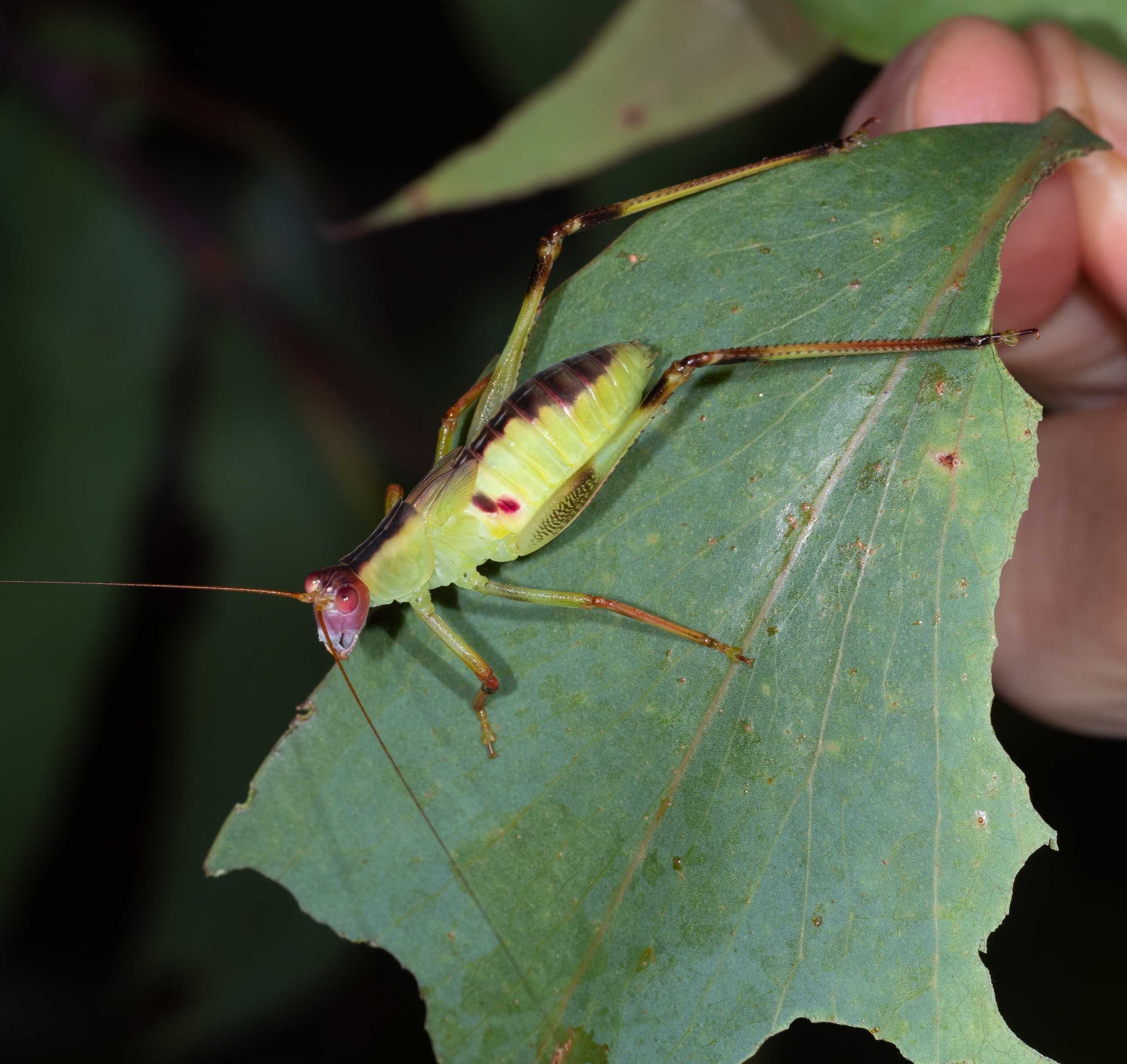
17th January
All nymphs are at penultimate nymphal stage, except for Hoppy, who is still in the previous instar (dorsal wing bud stage).
One nymph must have moulted yesterday as 2 of the nymphs were at the earlier stage when checking the cage on 16th January.
Male nymph is 25mm body length
All of the larger nymphs are much more responsive than a few days ago.
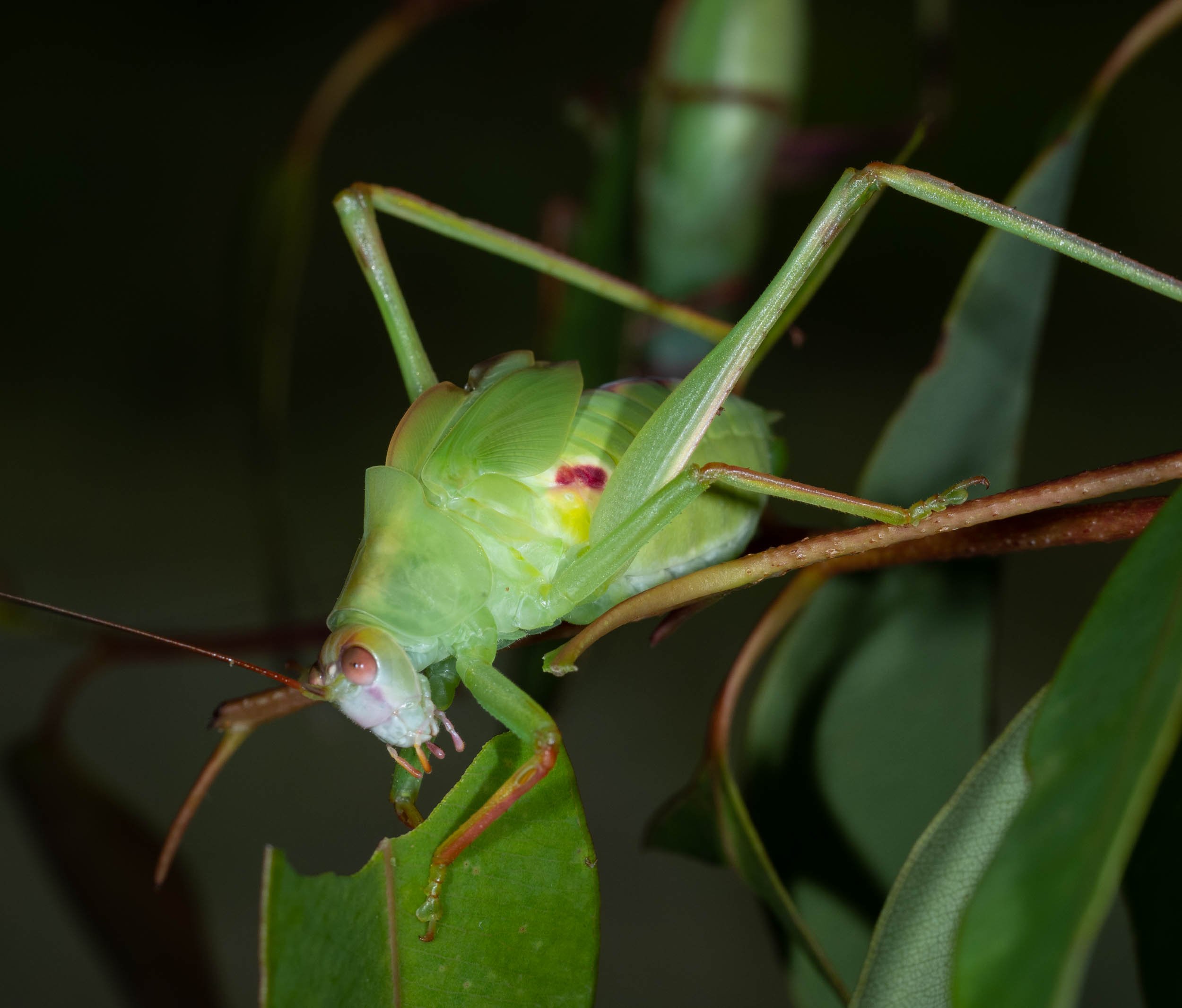
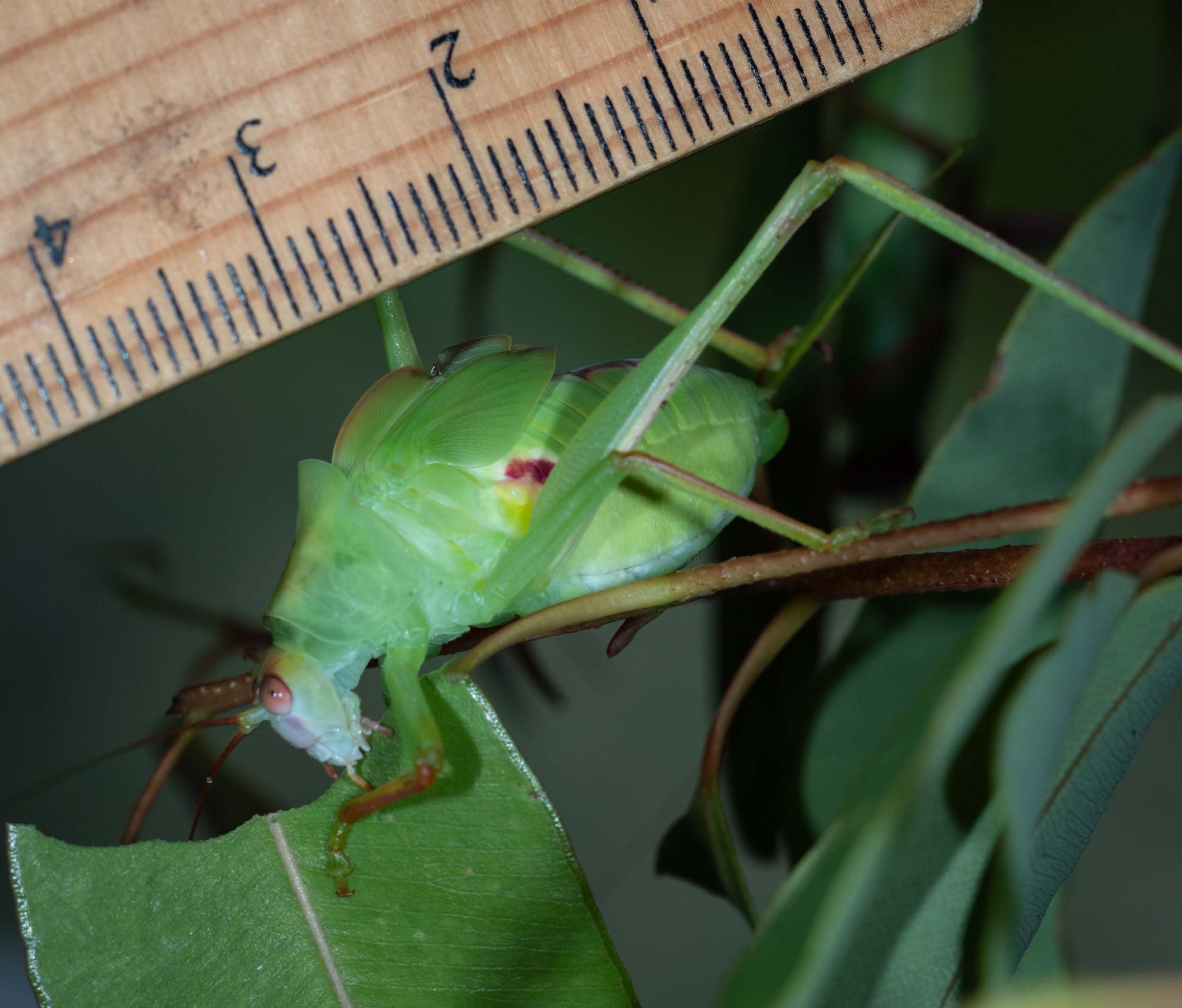
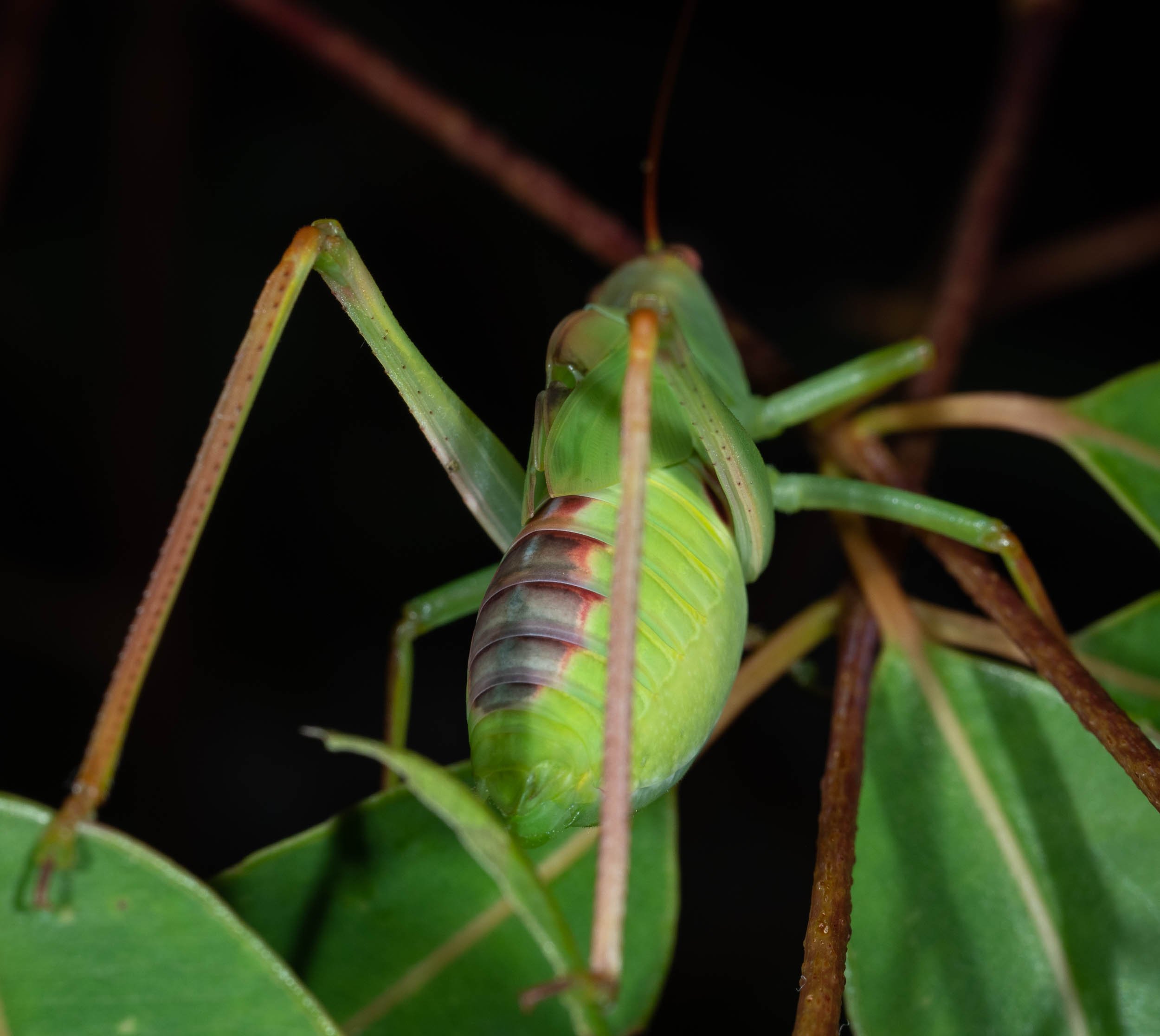
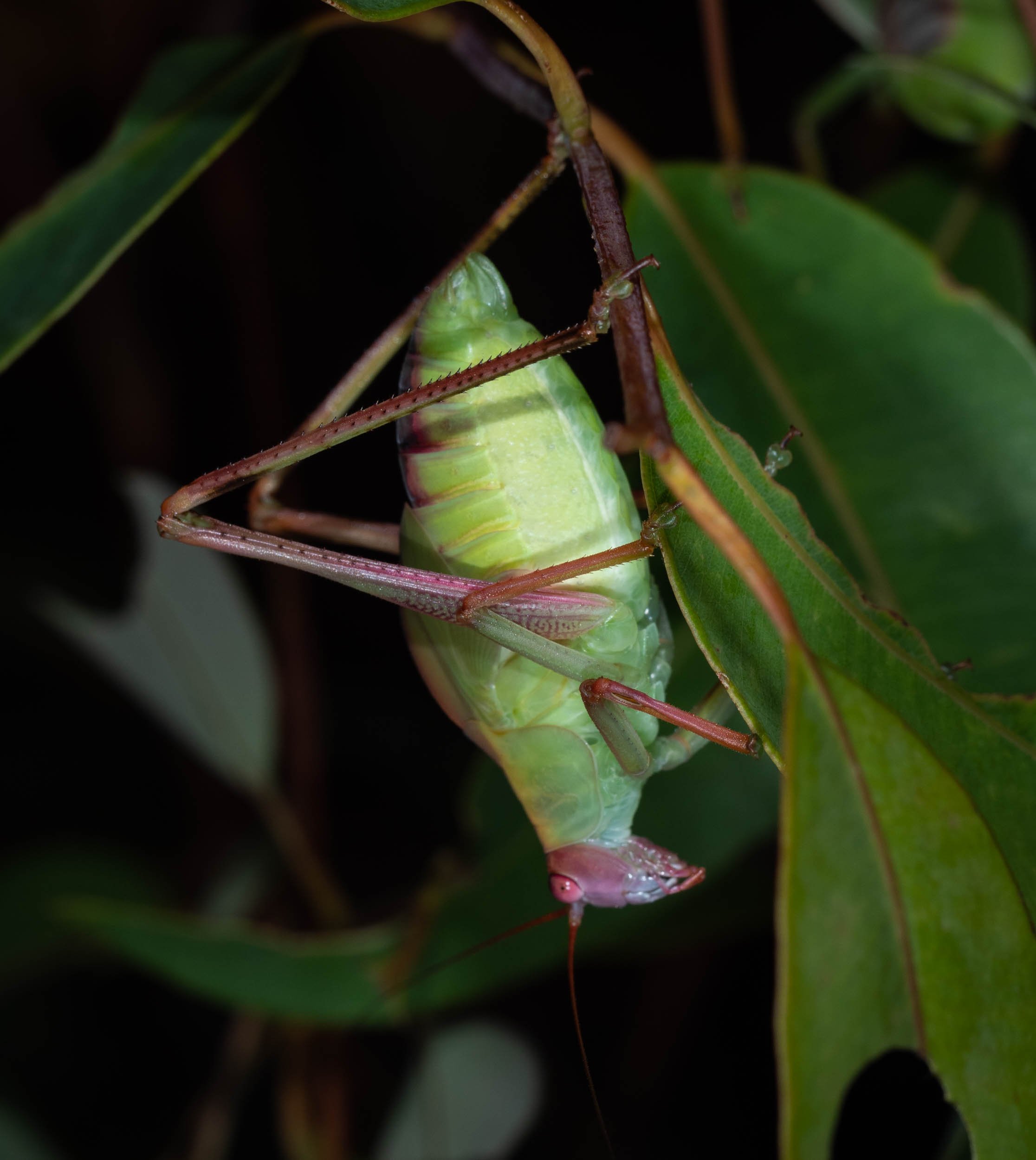

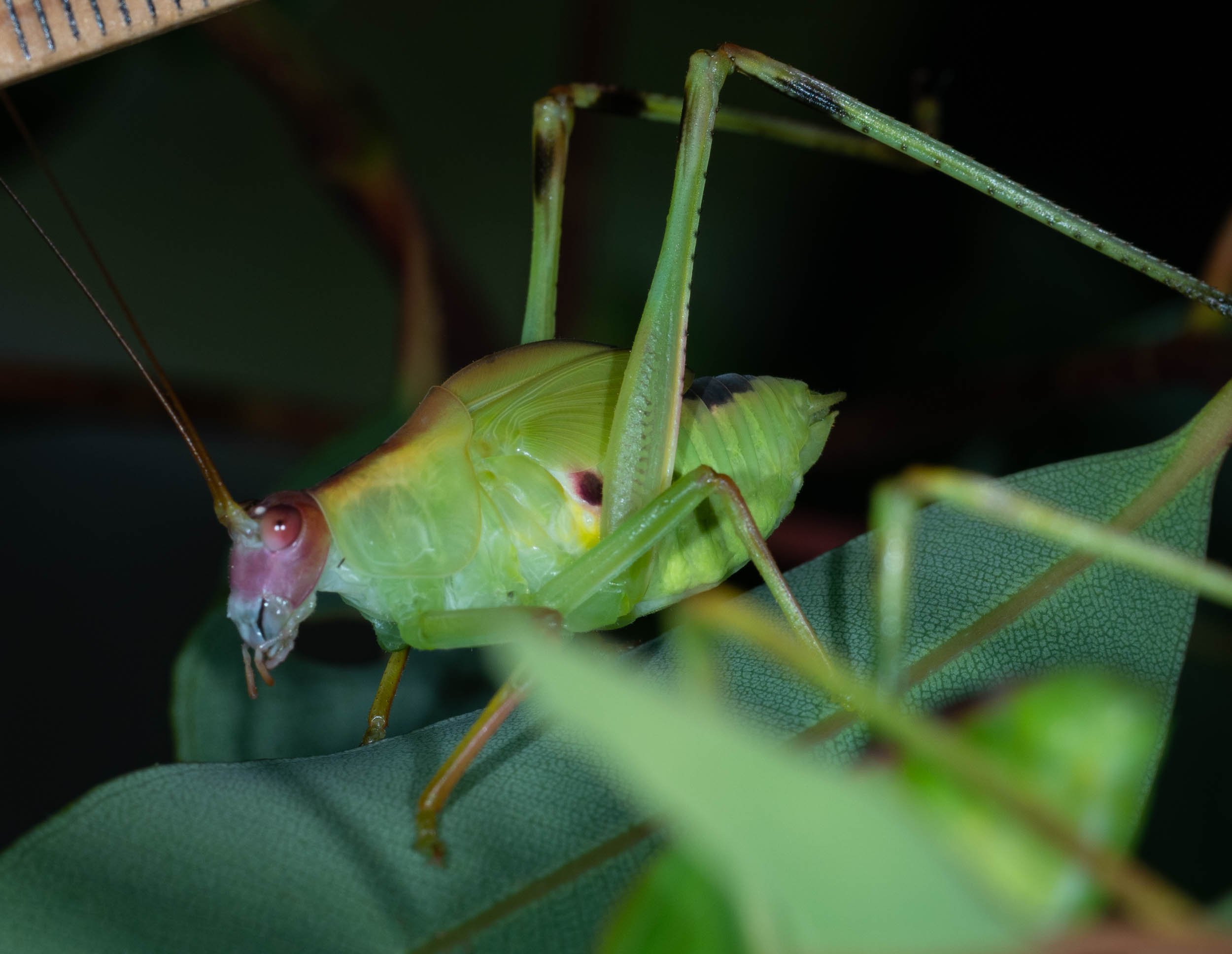
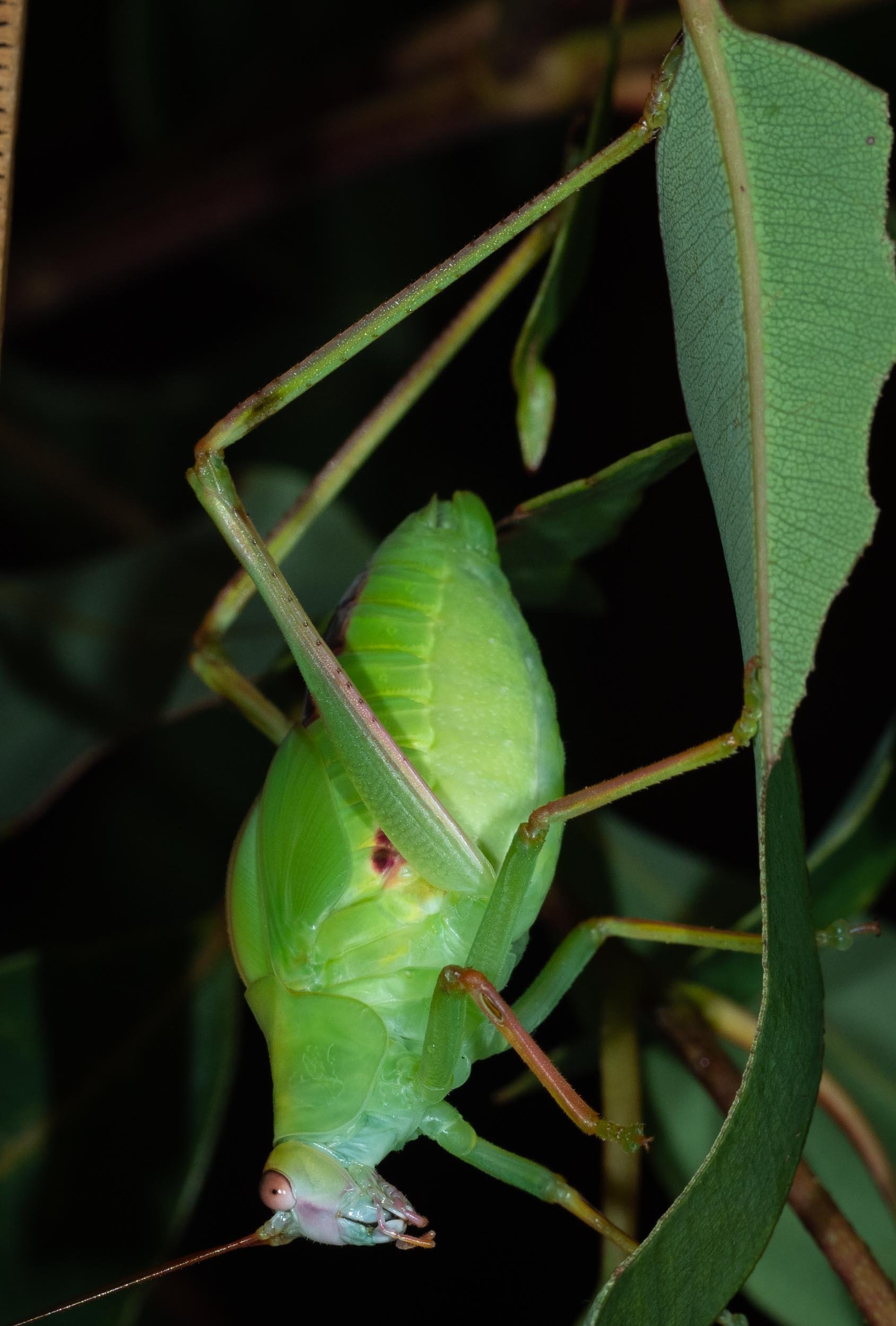
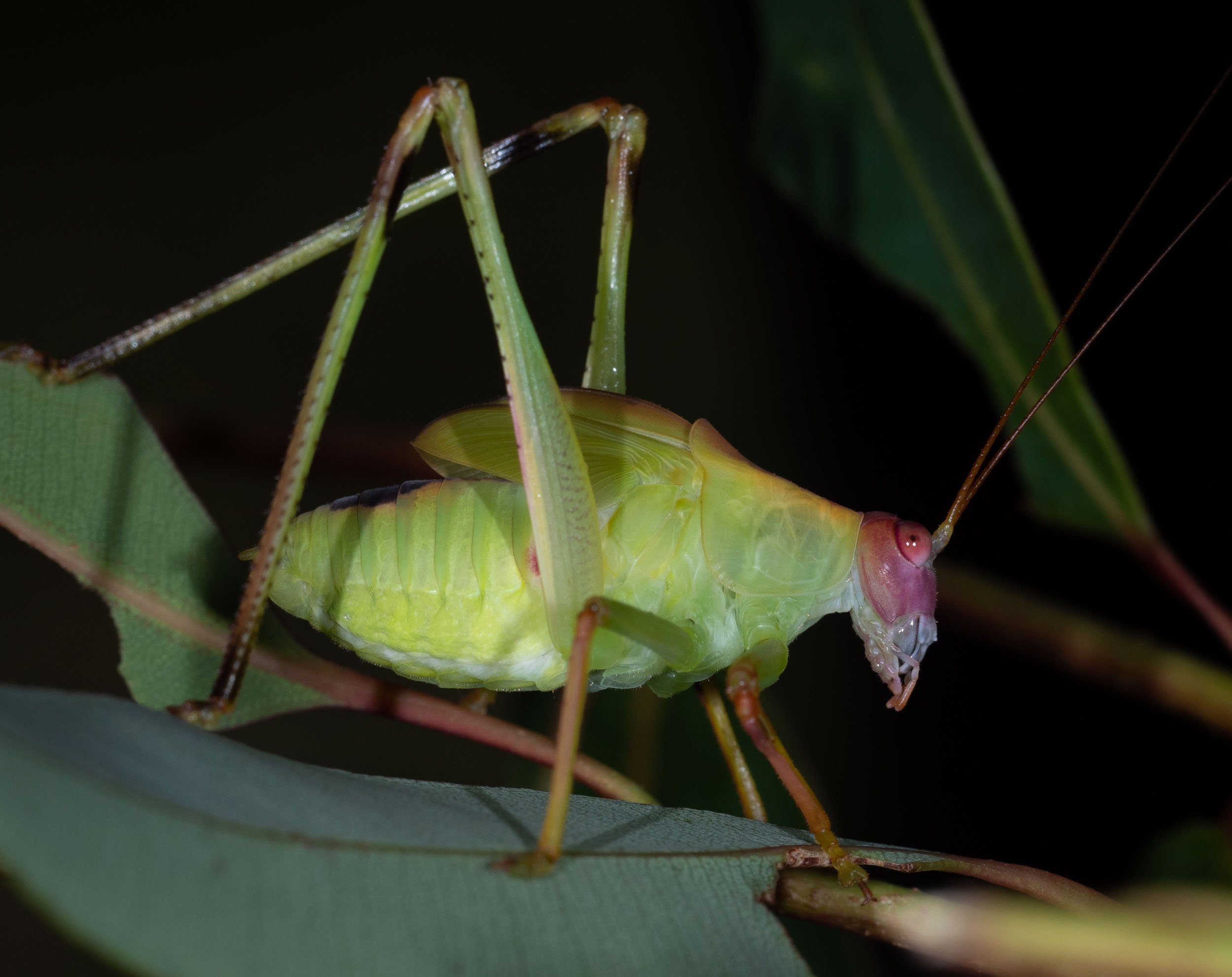
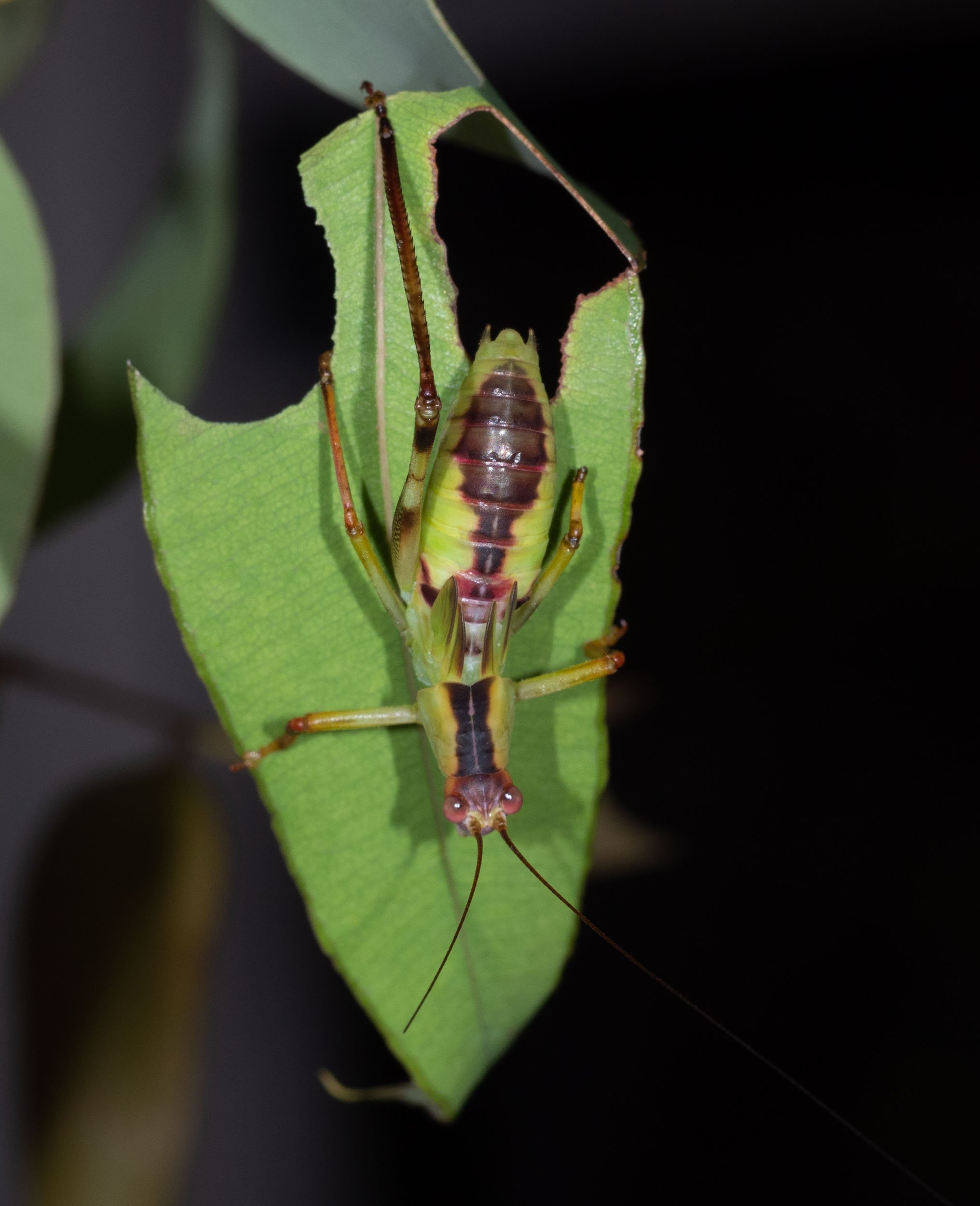
18th January
First adult seen at midday, so hatching to adult = 3 months. Penultimate nymphal instar to adult stage = 15 days (first penultimate nymph individual seen on 3 January).
Body length to end of tegmina = 70mm. Body length to end of abdomen ~ 32mm.
Hoppy has moutled to last instar stage, so previous instar took 18 days (31 Dec to 18 Jan). He has clearly a male and he has regenerated tarsal segments on his damaged T2 leg.
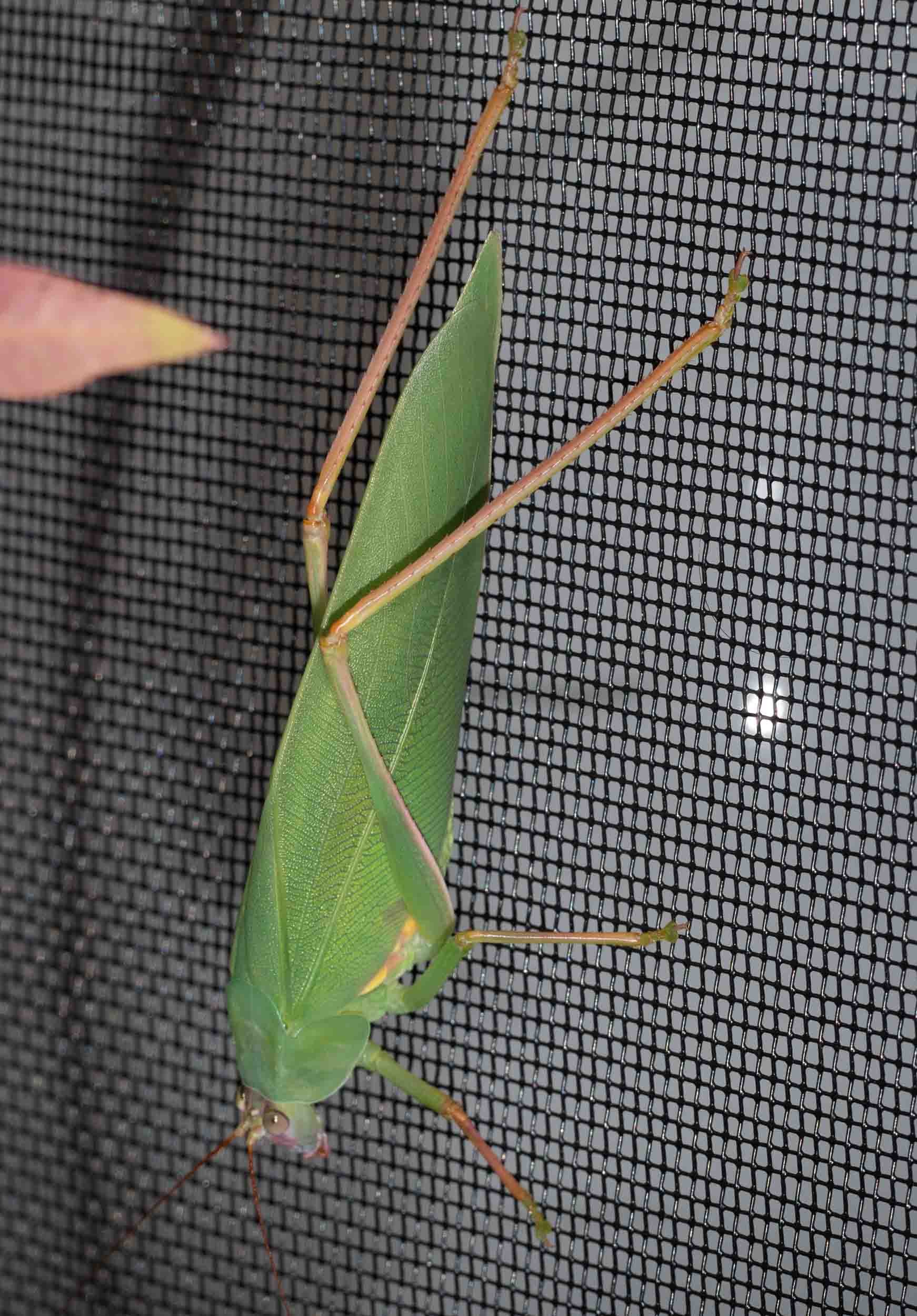
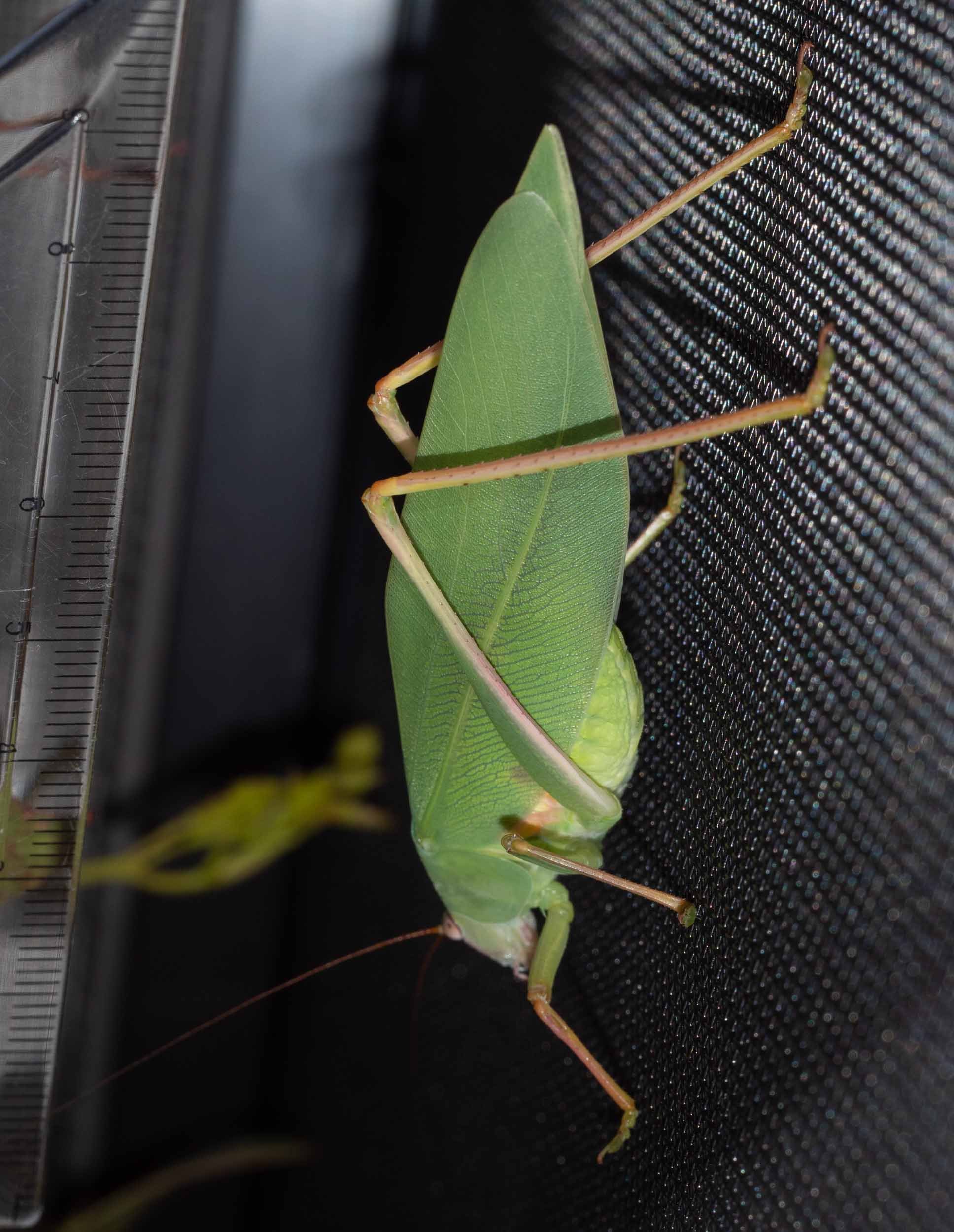
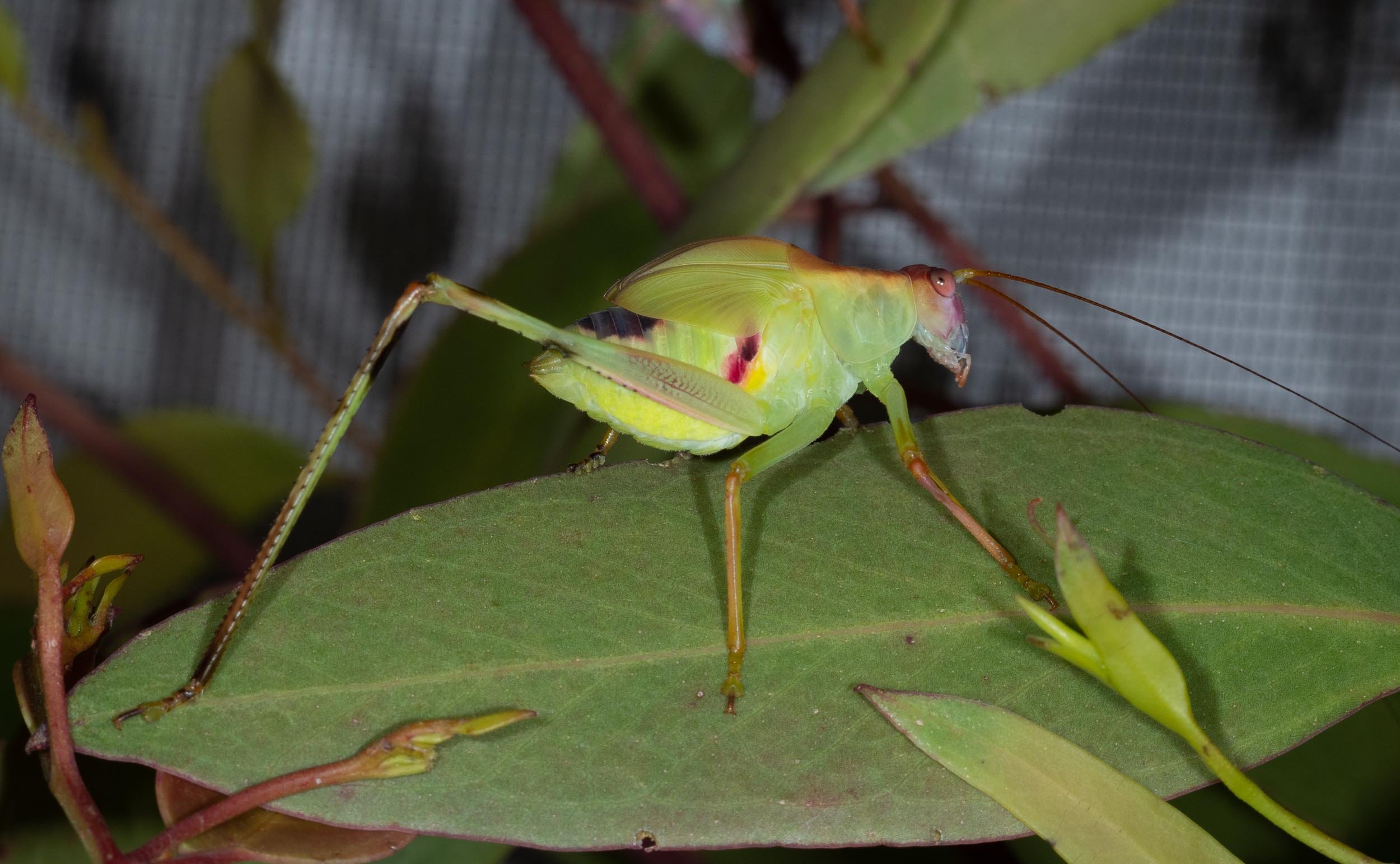
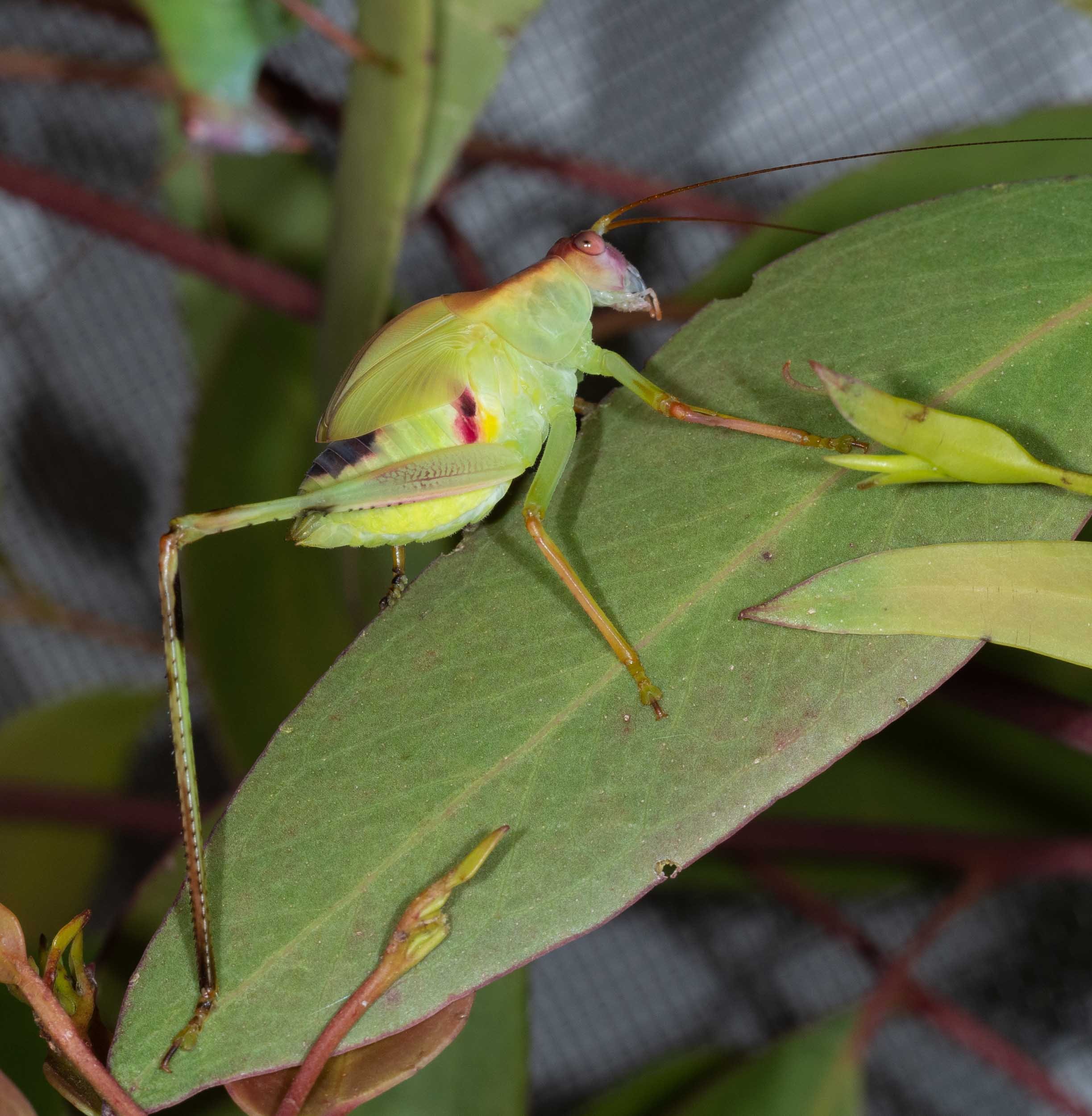
20th January
9 penultimate stage nymphs and 1 adult. Adult is much less active than nymphs, but moves away if approached.
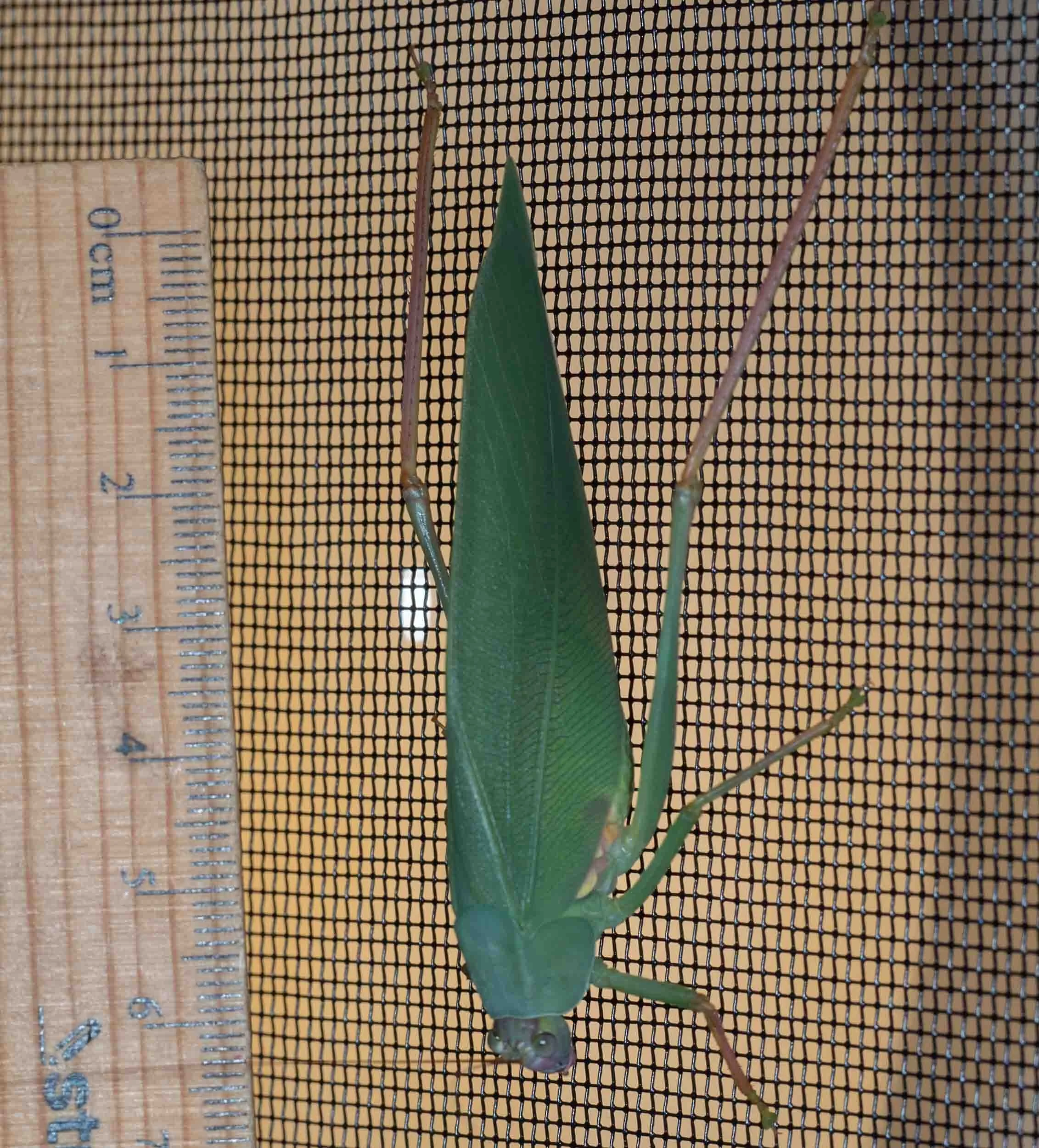
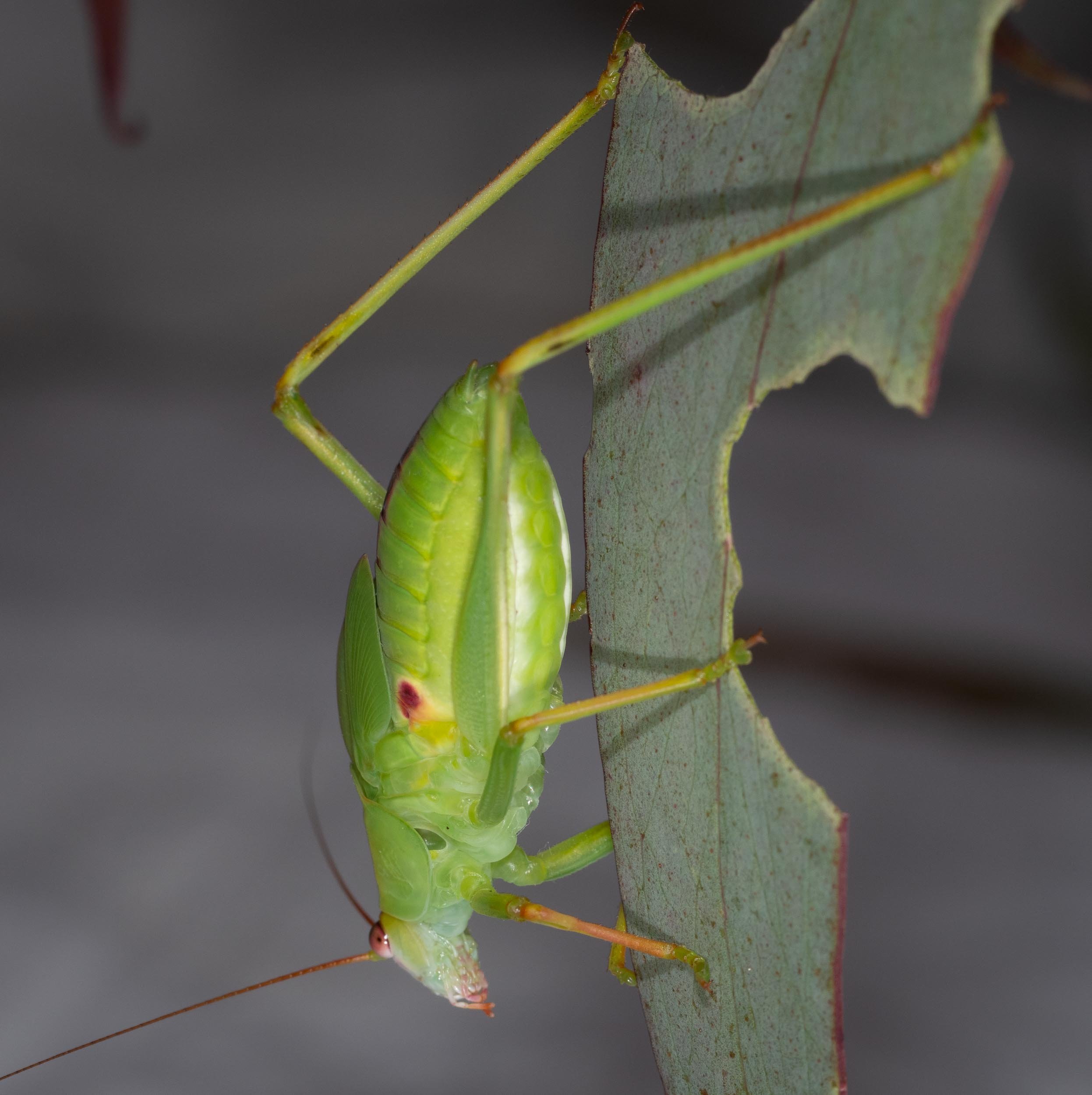

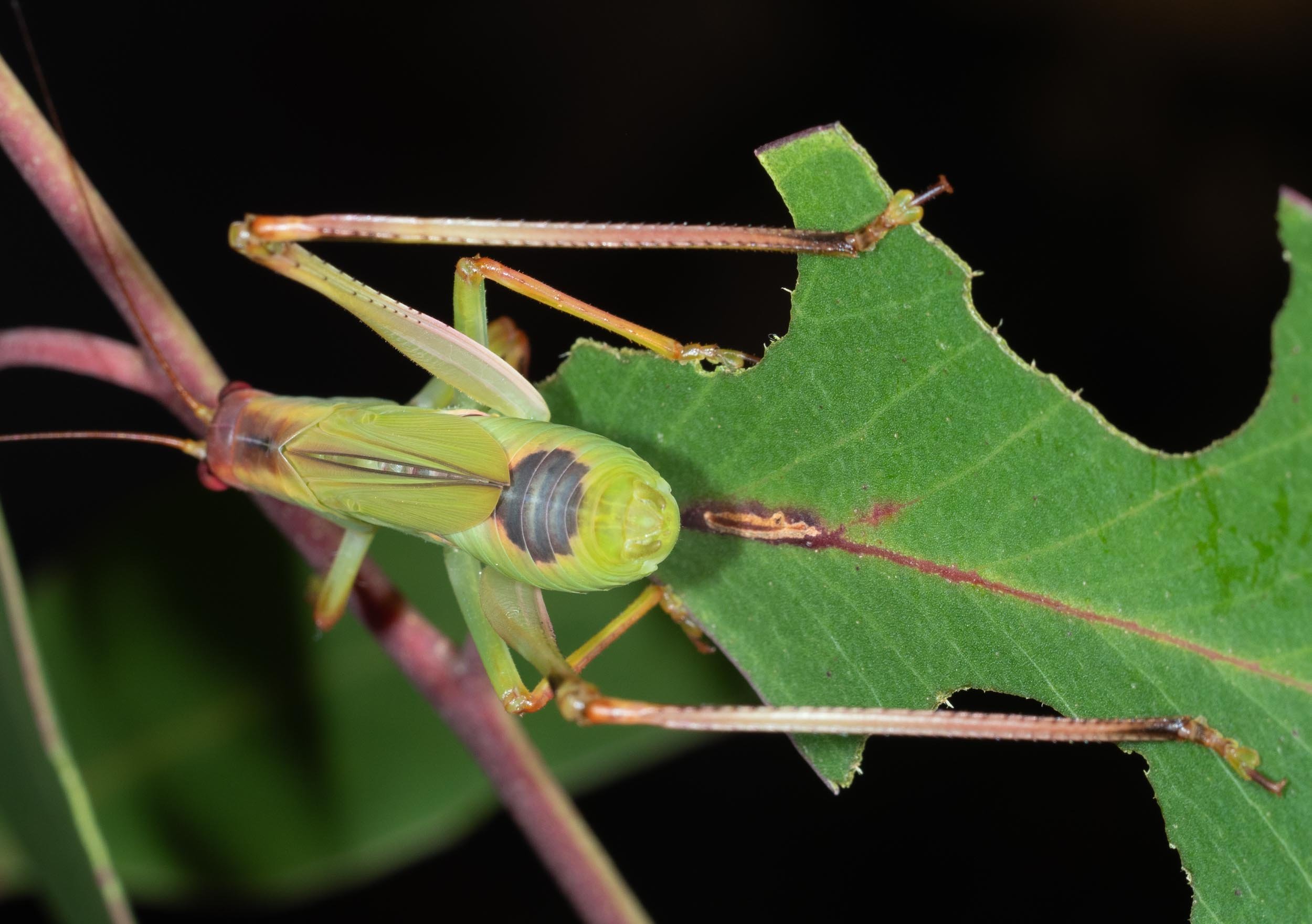
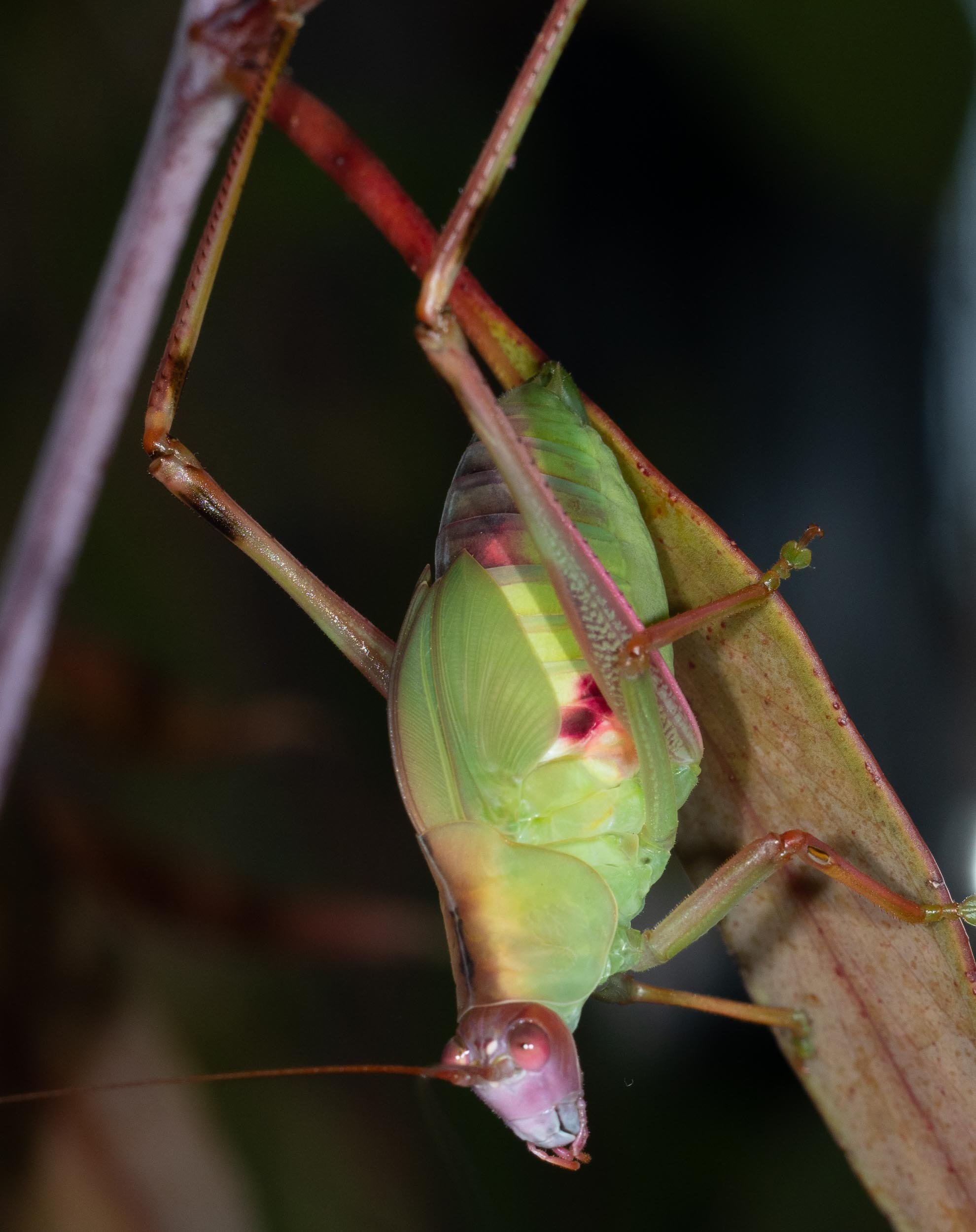
25th January
6 nymphs (all at penultimate stage) and 4 adults.



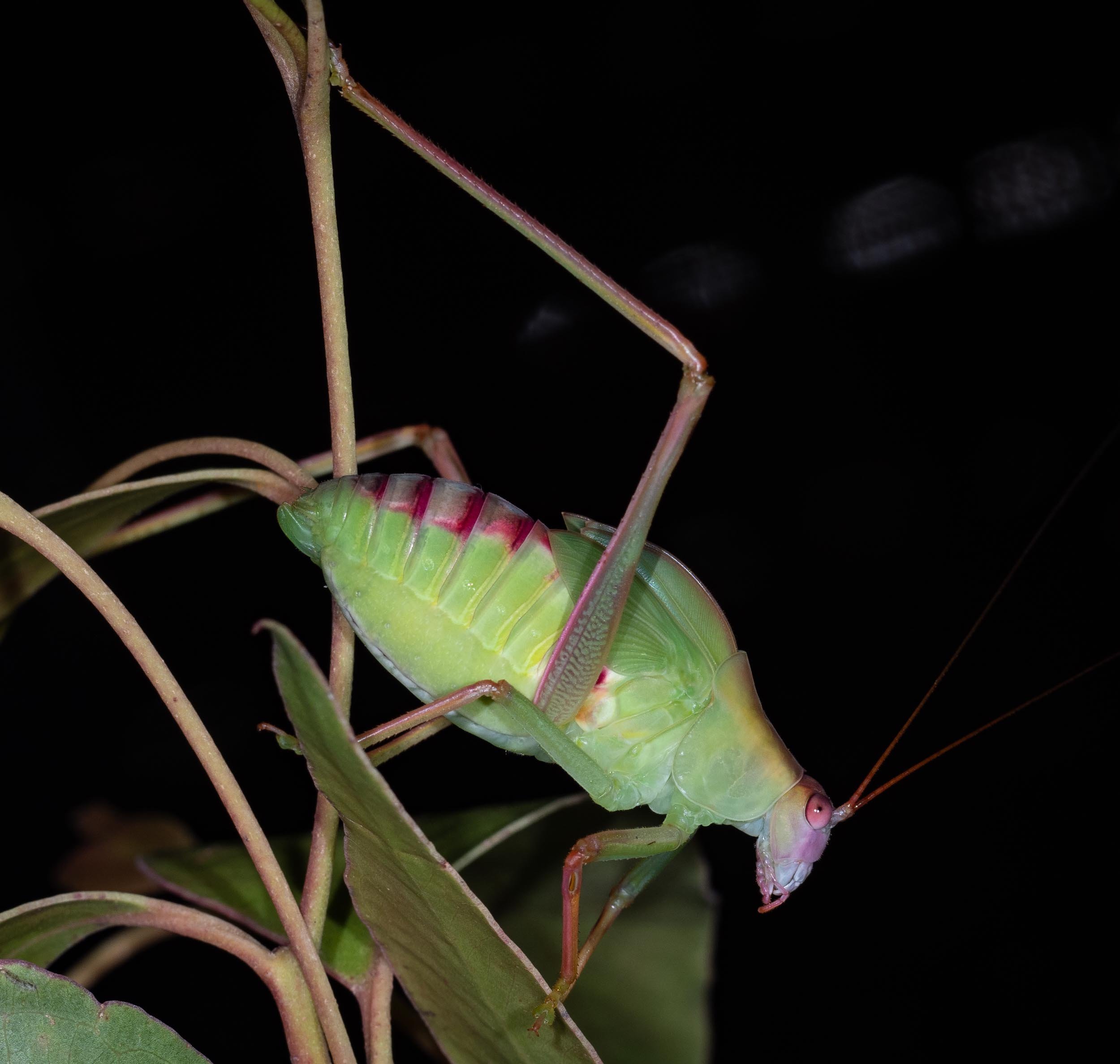
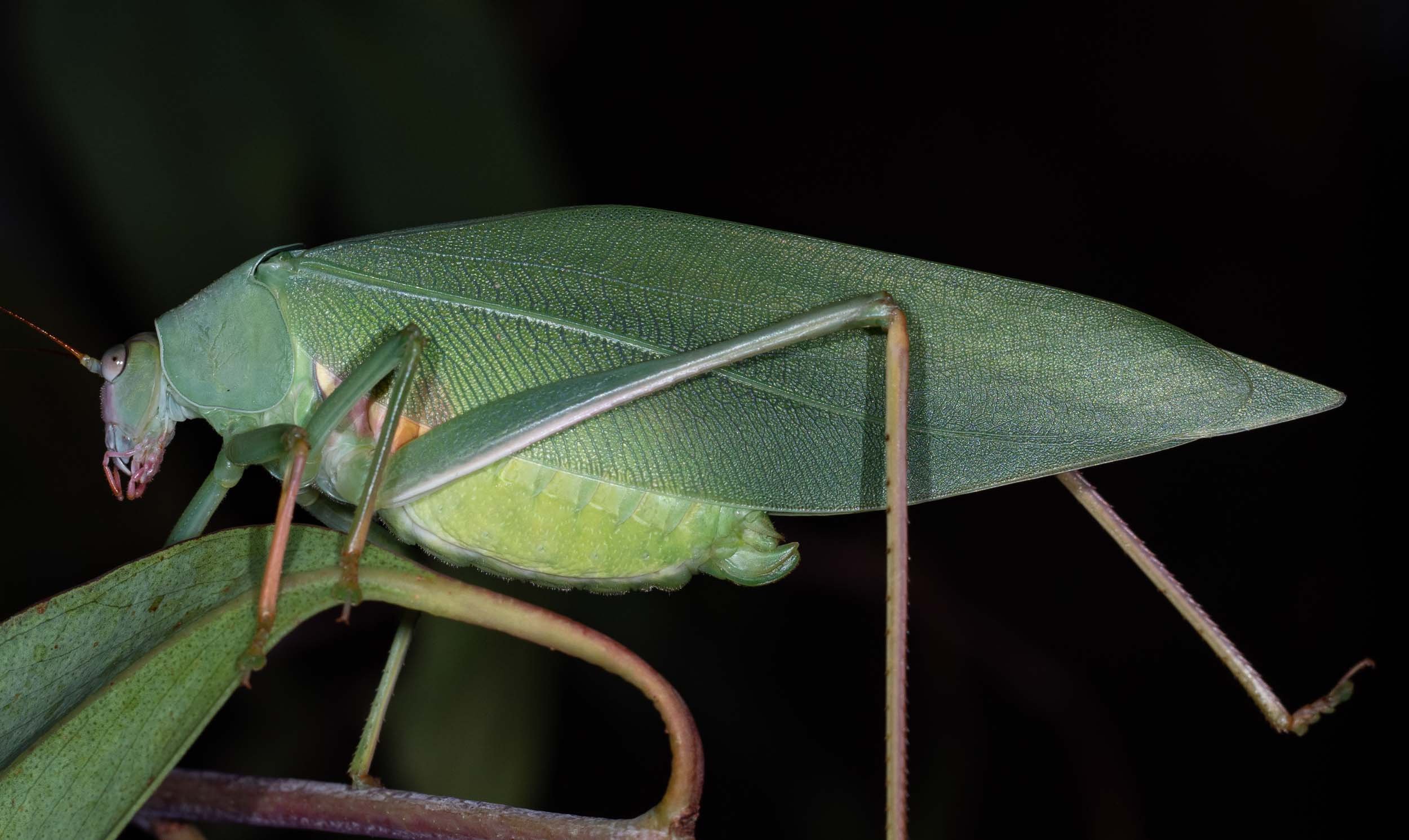
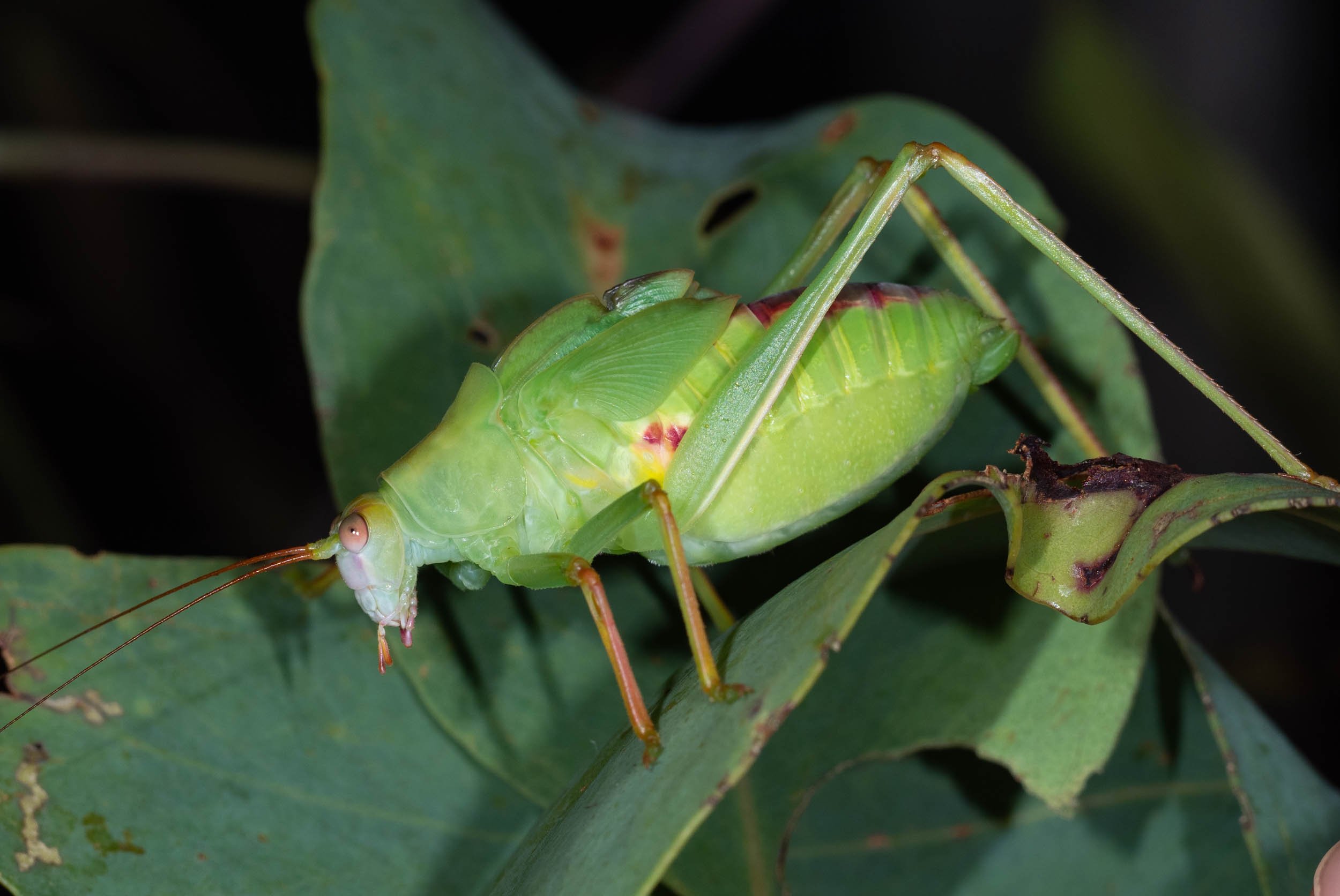

28th January
4 nymphs and 6 adults, 5 of which are females and 1 male. One of the adults that had eclosed since 25th January (and probably on 27th January) had malformed tegmina. This must have been the animal which had a notch in the tegmina anlage at the nymphal stages. This individual moutled to the previous stage between 11-14 January. So the duration of the penultimate stage was 13-16 days.
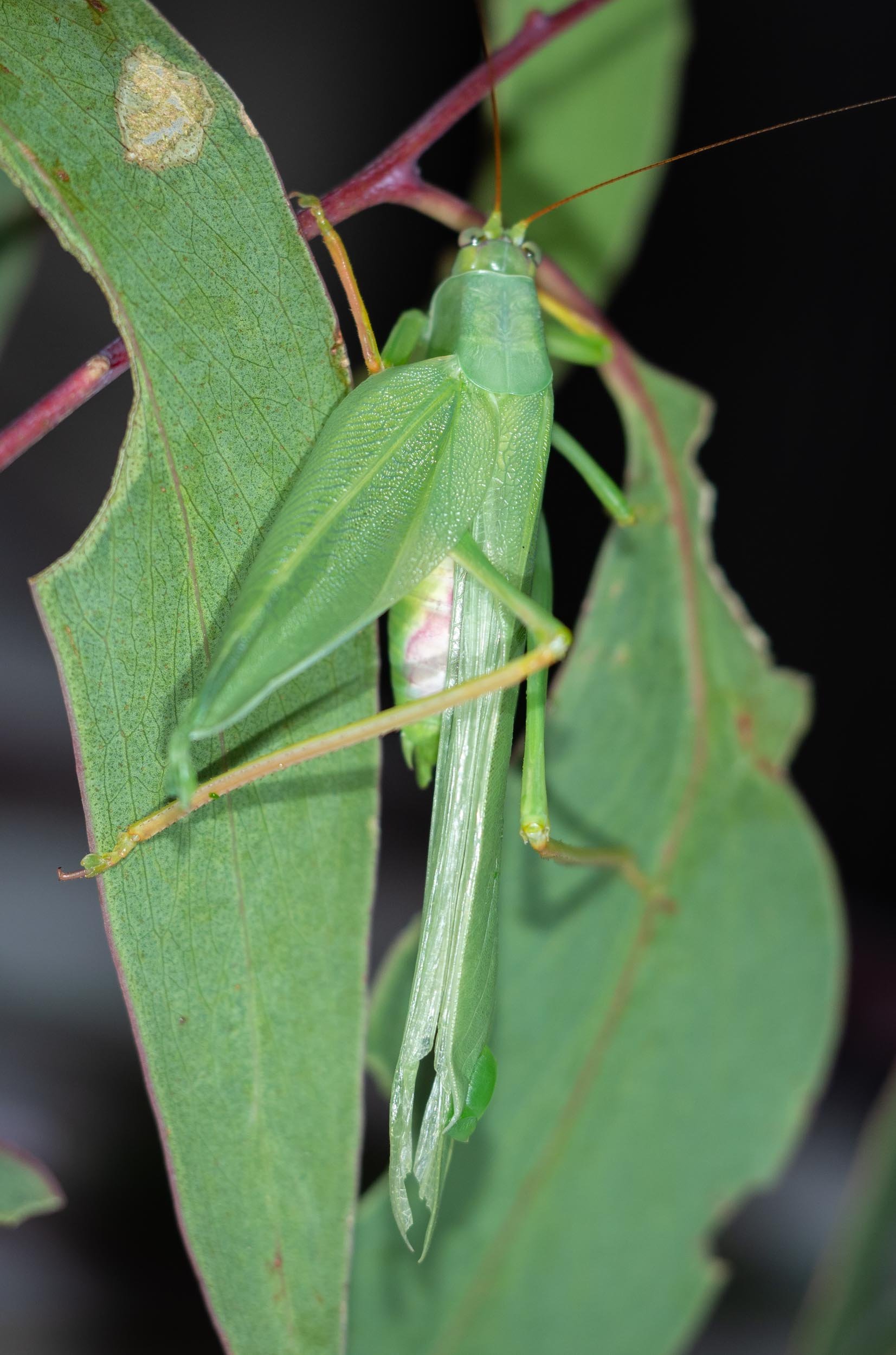
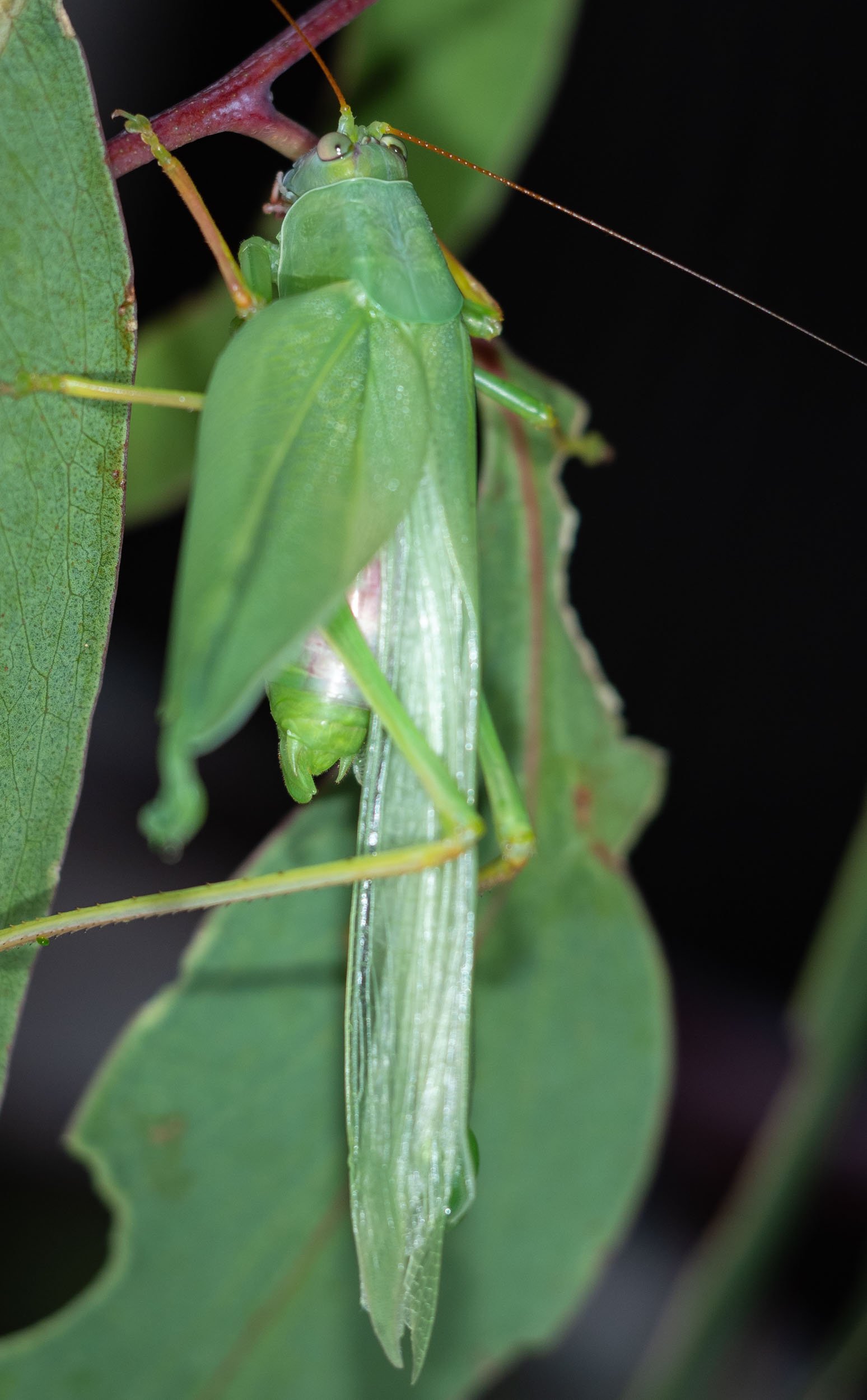
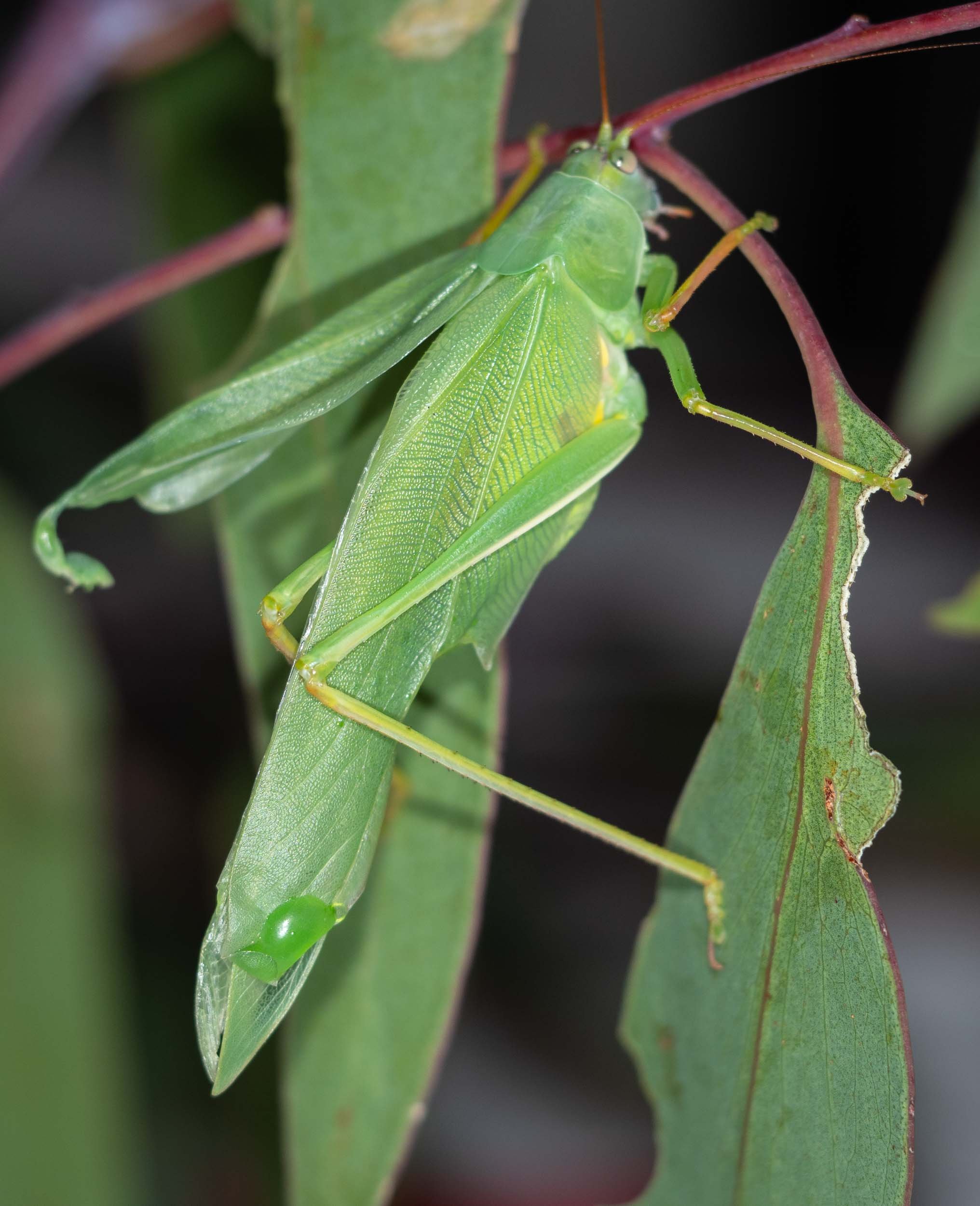

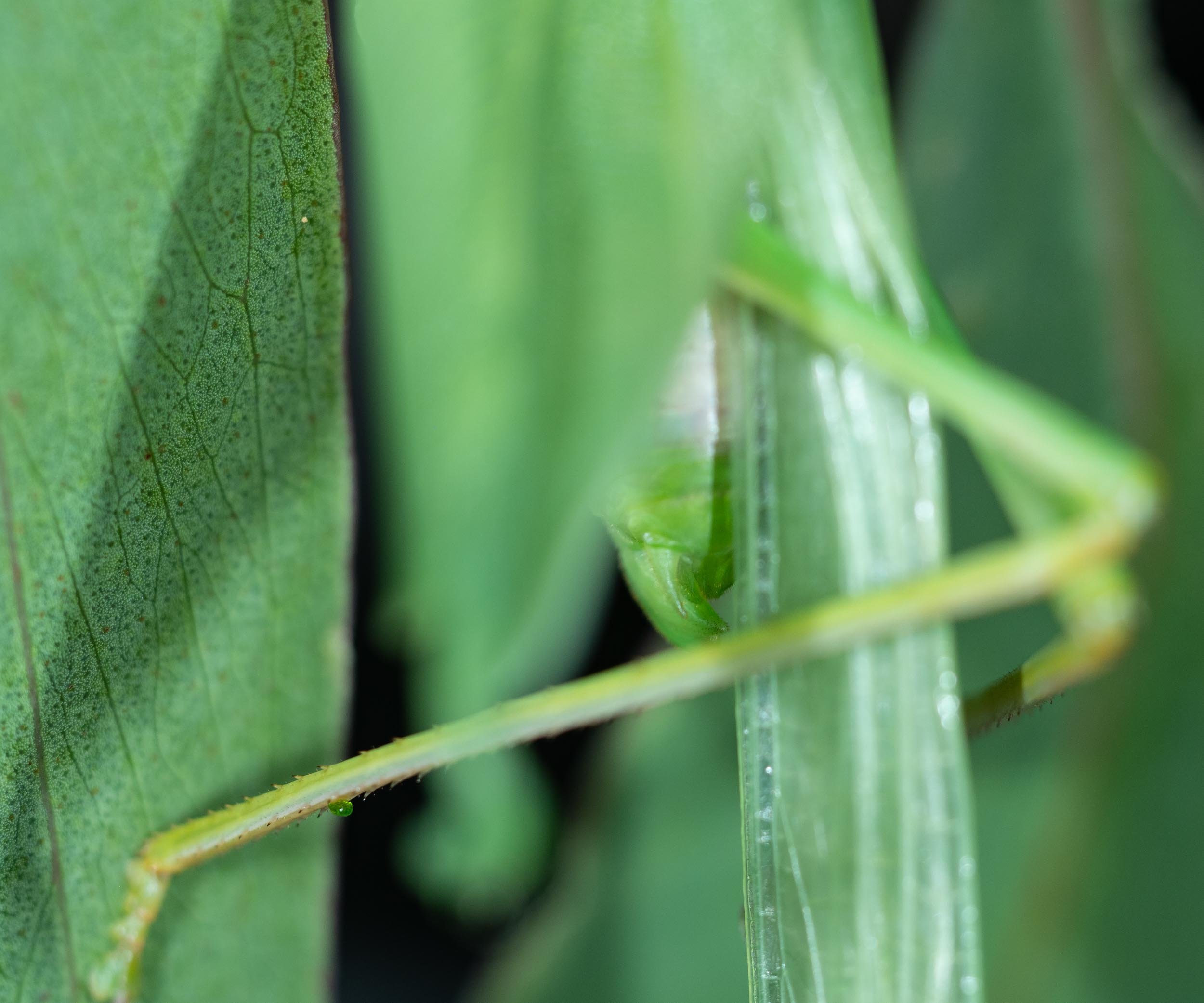
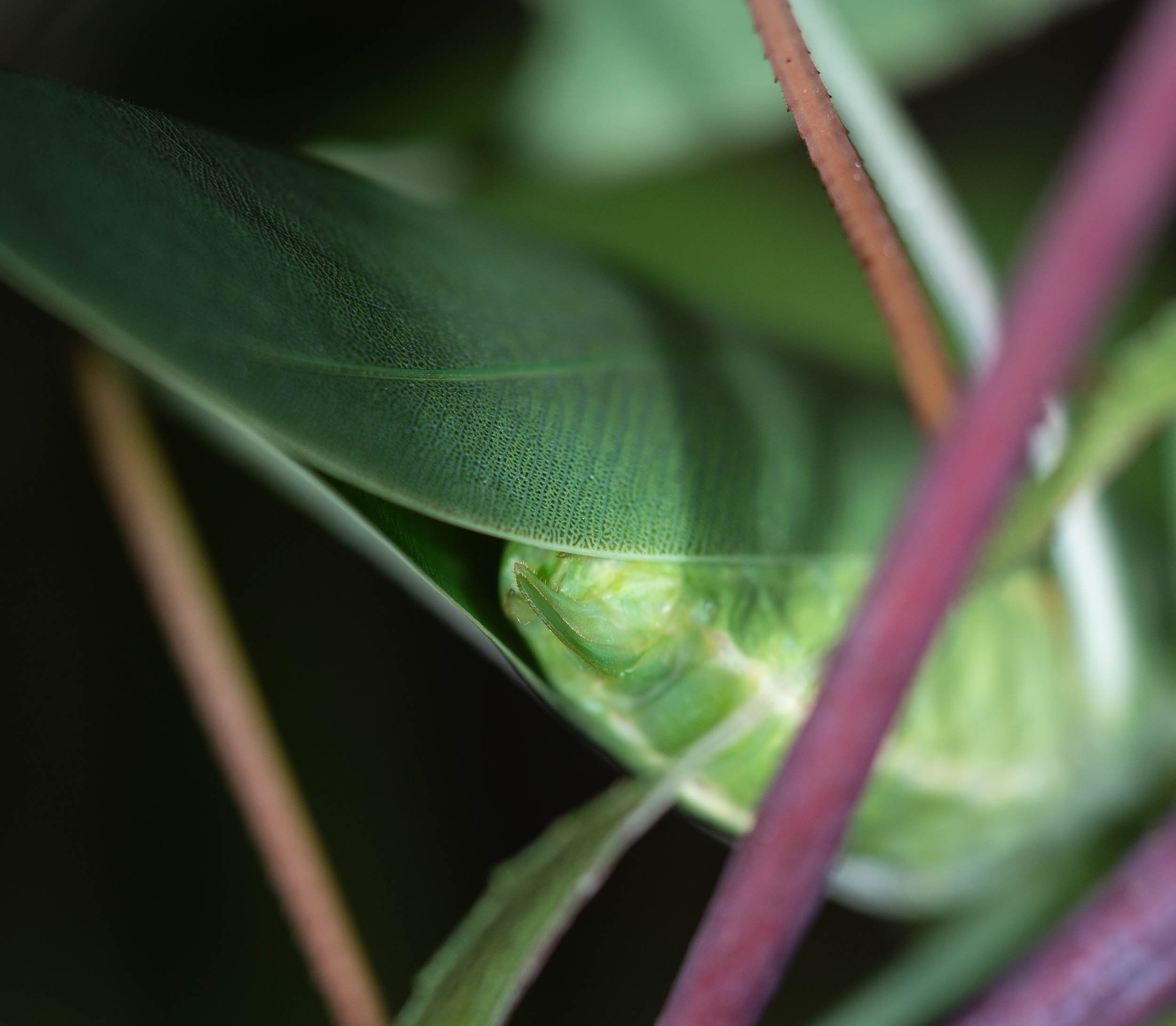
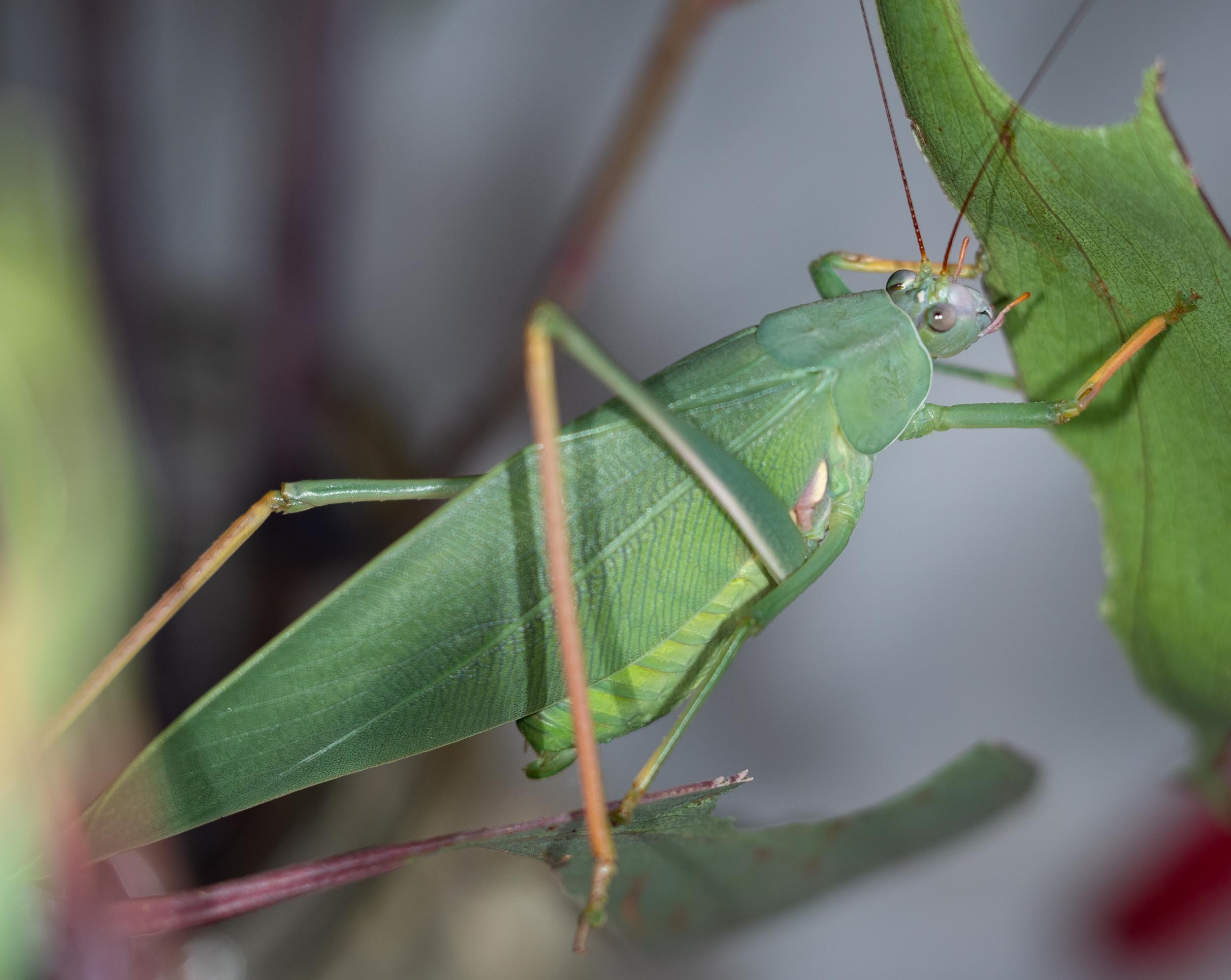
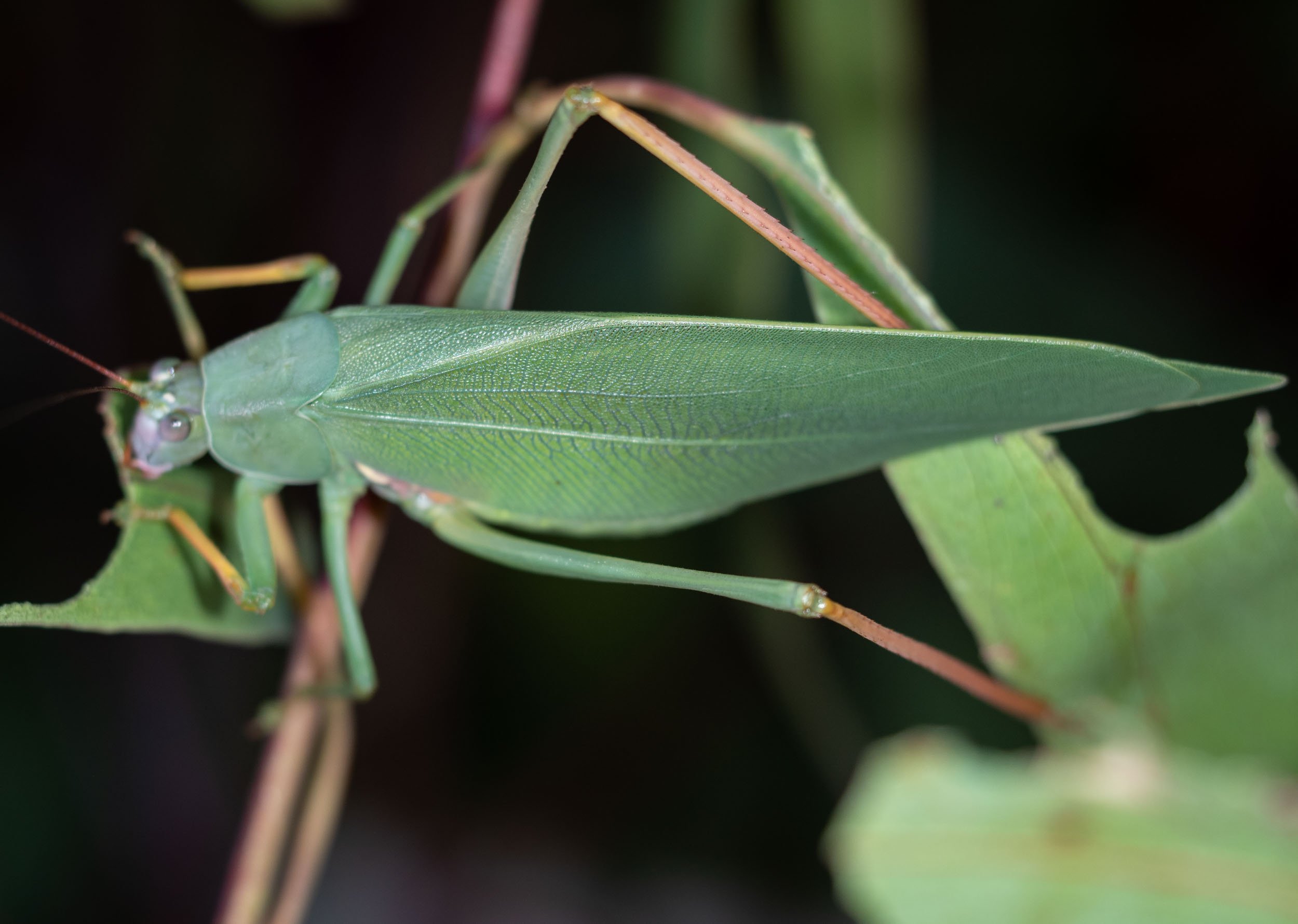
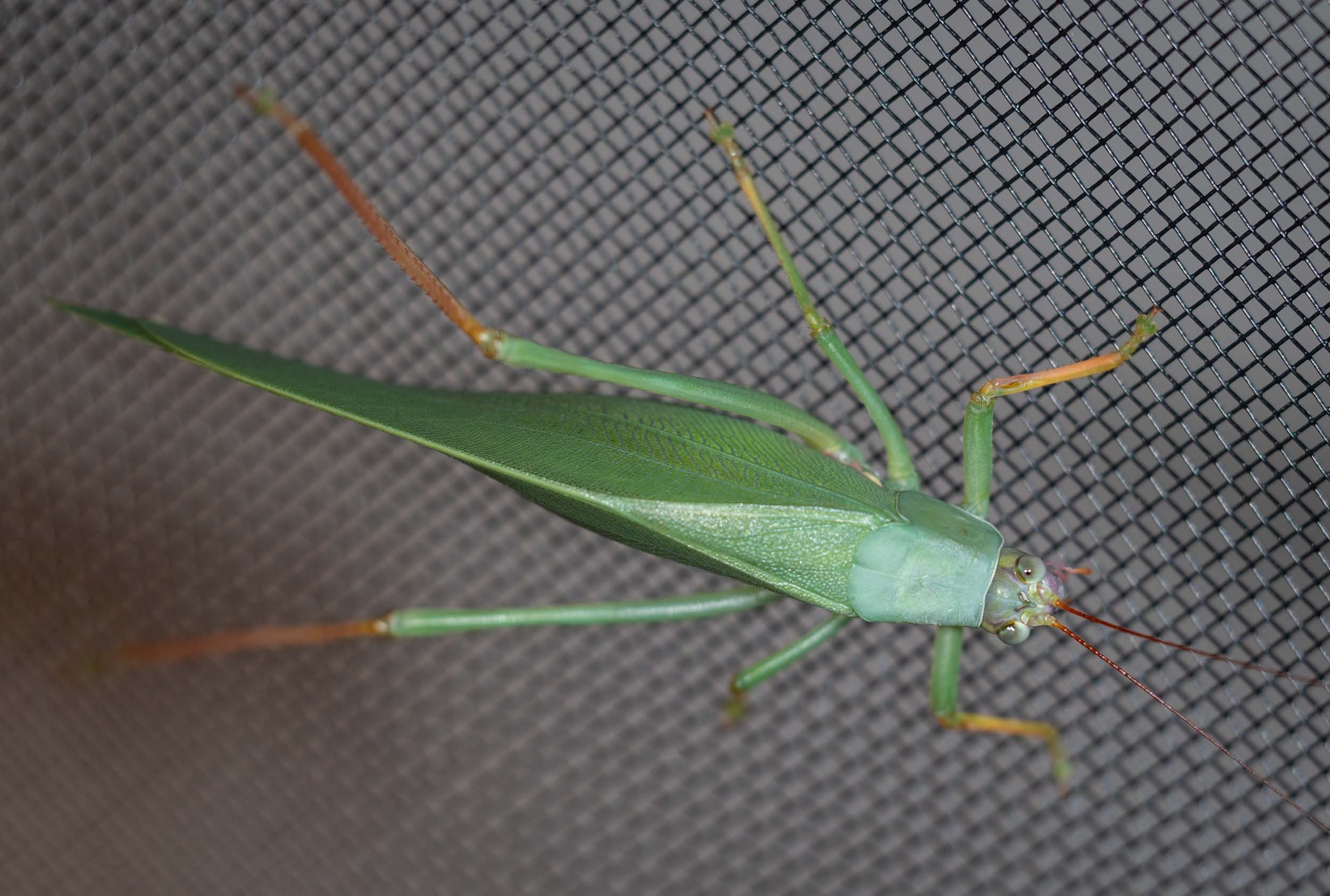
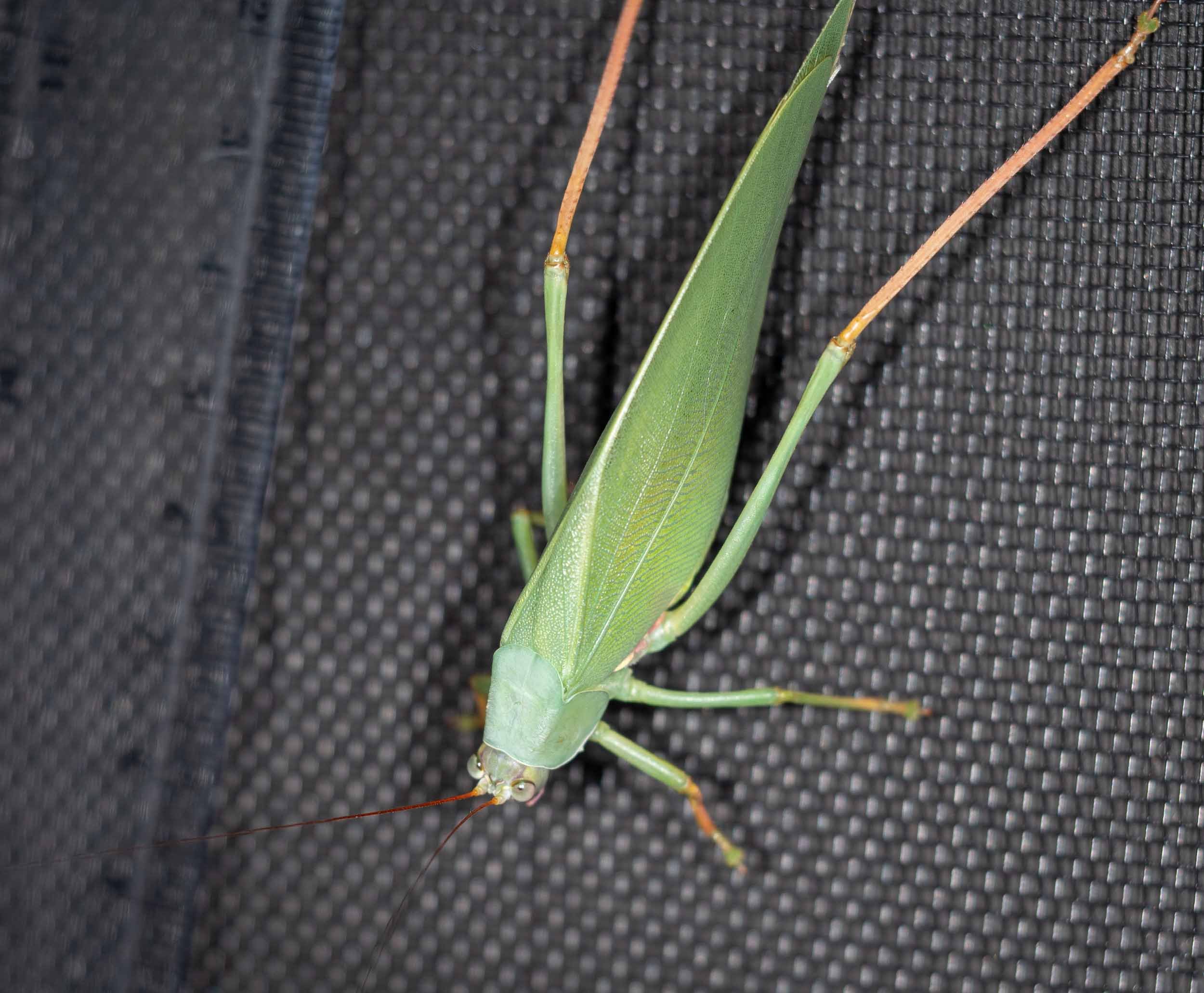

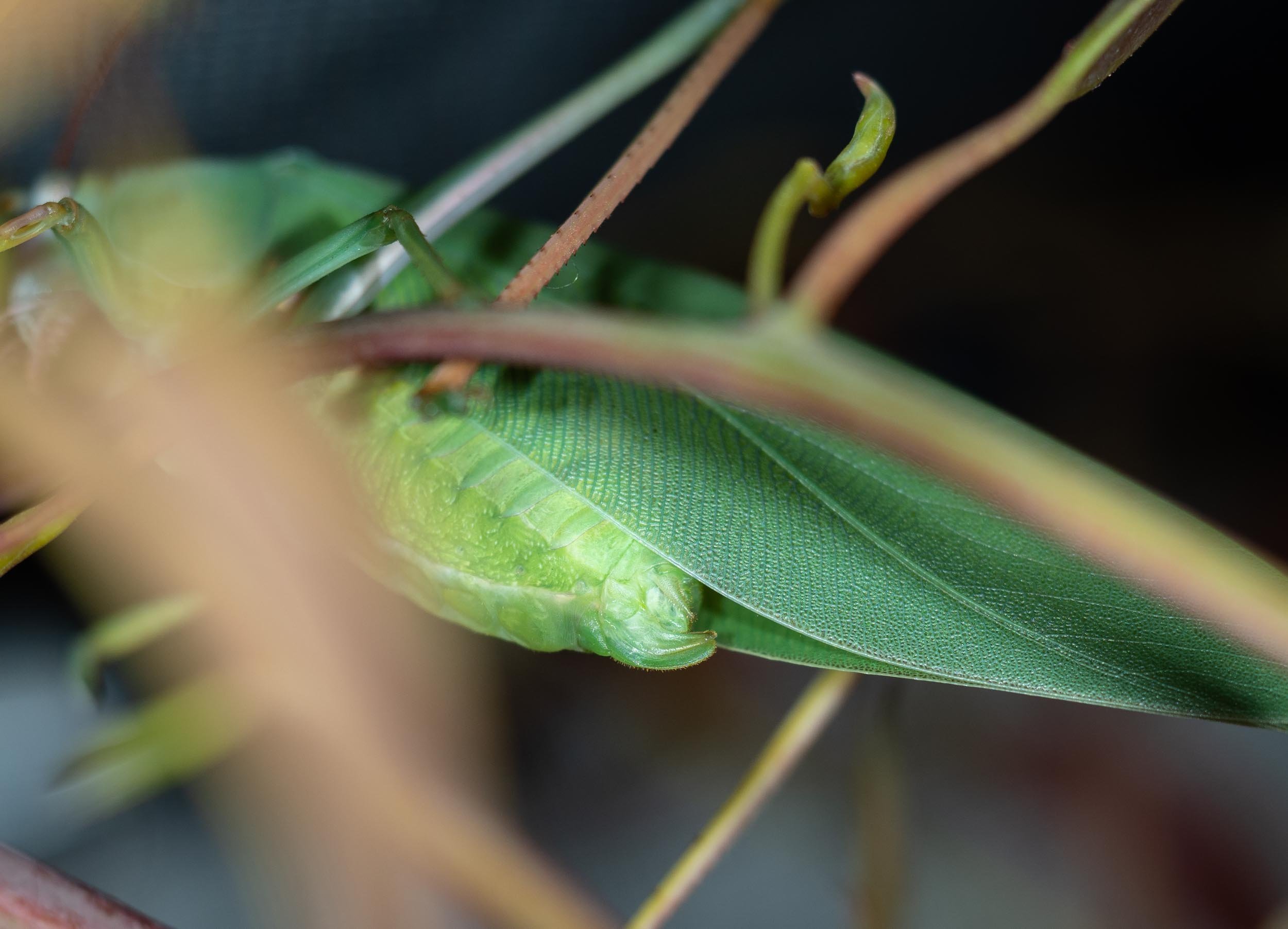
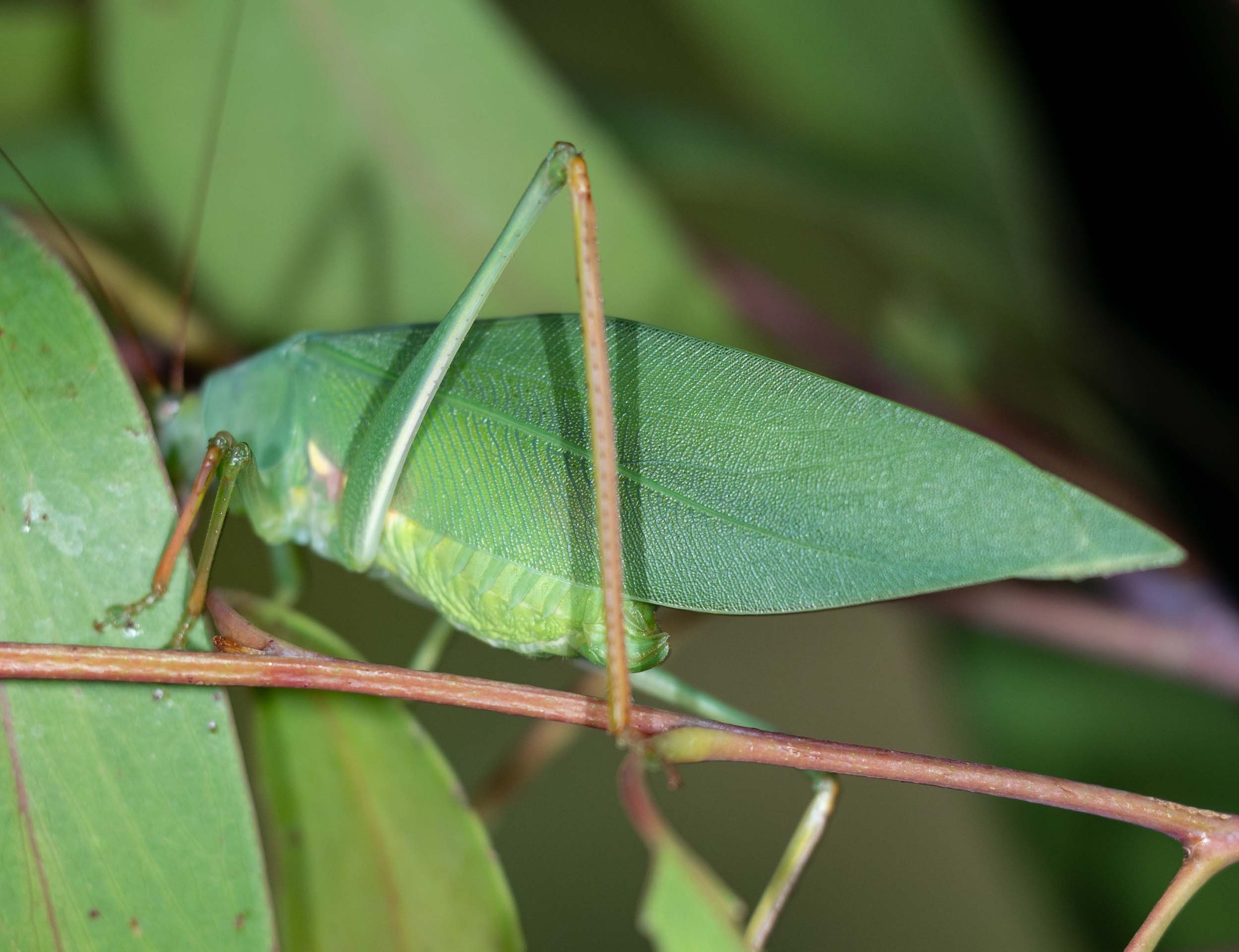


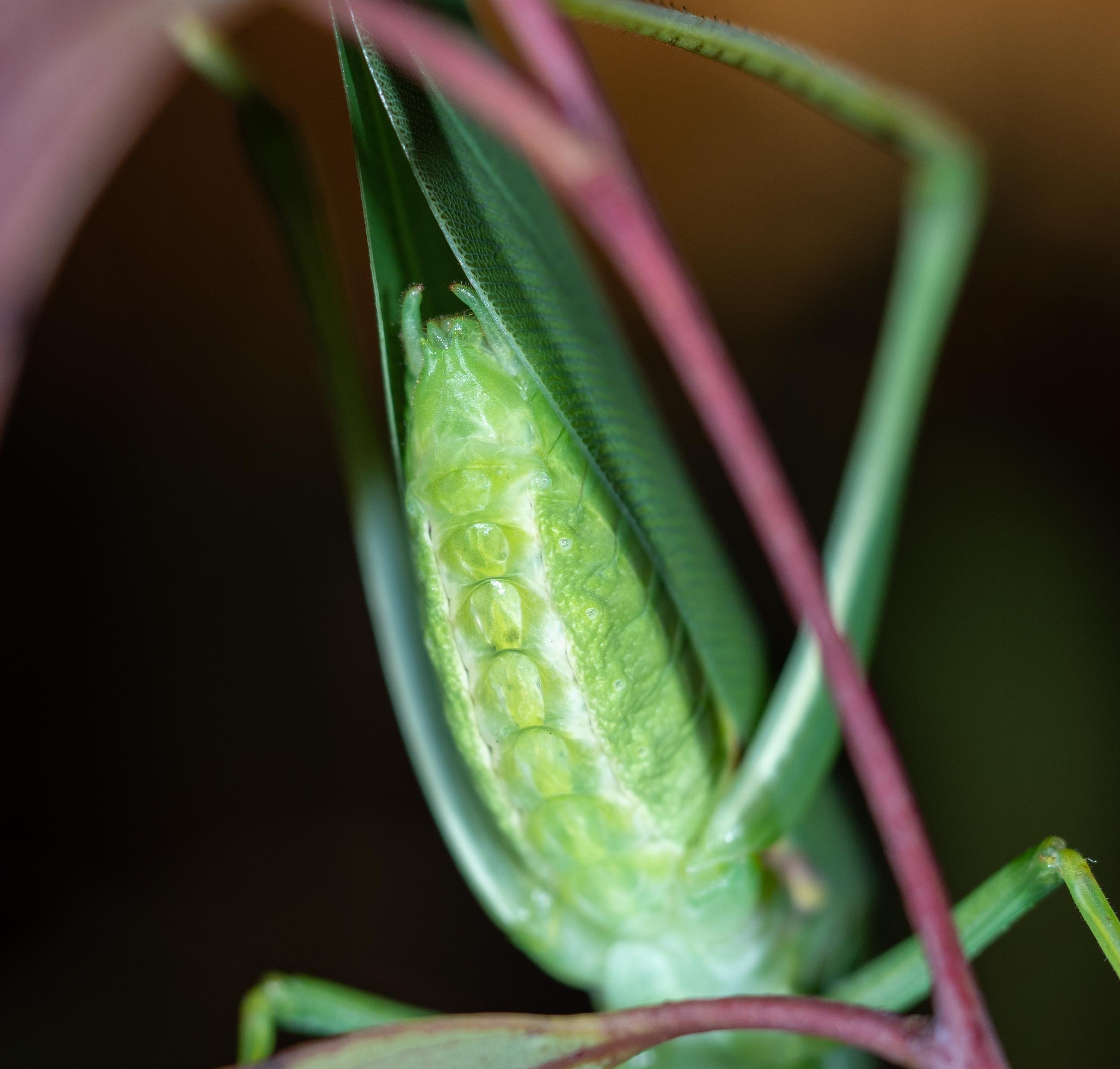
31st January
8 adults (7 females and 1 male) and 2 nymphs (both males, Hoppy and one other).
We released the adults, placing them on lower branches of epicormic growth on Angophora and E. globoidea trees near the end of the roadway. The 2 nymphs were kept in the cage until they reached adulthood.
#1 female - taken for freezing and possible DNA analysis
#2 female
#3 female
#4 female
#5 male
#6 female
#7 female
#8 female - with damaged tegmina (Bendy)
#9 nymph - male 27mm body length
#10 nymph - male (Hoppy) 27mm body length
5th February
Hoppy became an adult in the afternoon. Left T3 leg still missing, T2 leg has shorter tibia than on contralateral side, fewer tarsal segments and no claws. Otherwise he appears normal.
6th February
#9, a male, became an adult overnight.
Calculation of instar lengths
Instar 6
15-20 days
Hoppy = 18 days
start 18 Jan
adult 5 Feb
Leading nymph = 15-17 days
start 1-3 Jan
adult 18 Jan
#9 male = 20 days
start 17 Jan
adult 6 Feb
Damaged tegmina nymph = 15-20 days
start 9-11 Jan
adult 26-28 Jan
Instar 5
8-13 days
Hoppy = 18-20 days
start 29-31 Dec
start instar 6 18 Jan
Leading nymph = 9-13 days
start 21-25 Dec
start instar 6 3 Jan
damaged tegmina nymph = 8-10 days
start 1-3 Jan
start instar 6 11 Jan
see the following iNaturalist observations of individuals from this clutch
https://inaturalist.ala.org.au/observations/106536702
https://inaturalist.ala.org.au/observations/106537644
https://inaturalist.ala.org.au/observations/106541178
https://inaturalist.ala.org.au/observations/106541484
https://inaturalist.ala.org.au/observations/106542358
https://inaturalist.ala.org.au/observations/106542976
https://inaturalist.ala.org.au/observations/106543577
https://inaturalist.ala.org.au/observations/106544224
https://inaturalist.ala.org.au/observations/100889374
This is a workbook page … a part of our website where we record the observations and references used in making species identifications. The notes will not necessarily be complete. They are a record for our own use, but we are happy to share this information with others.





